
Home » Travel Guides » Germany » 15 Best Things to Do in Lübeck (Germany)

15 Best Things to Do in Lübeck (Germany)
A UNESCO World Heritage Site, Lübeck is a must-visit city in Schleswig-Holstein. As the capital of the Hanseatic League the city was a central node in a network of ports around the Baltic Sea. For hundreds of years Lübeck has been the “City of the Seven Spires”, and even after a devastating bombing raid in 1942 those towers decorate the skyline of the Old Town on its island in the River Trave.
Down on the streets are gabled merchants’ houses, guildhalls and warehouses, all signs of the trade that brought prestige and power in the Middle Ages. The town hall is suffused with that prosperity, while the five main churches are still decorated with Medieval and Renaissance art.
Let’s explore the best things to do in Lübeck :
1. Altstadt

Germany’s largest historic centre is 100 hectares of historic streets under the watch of those seven spires.
A classic Lübeck street scene has would be rows of Renaissance gabled houses broken by passageways.
The city is designed in a way that rewards anyone who with spirit for adventure.
You can turn off the main streets and follow these alleys to hidden courtyards or find yourself deposited by surprise onto a familiar street.
The courtyards are mostly found in the well-preserved Kober area in the north along Engeslwisch, Glockengießerstraße and Engelsgrube, and in the south around the cathedral.
And if you’re in the mood for some shopping you can stay on the straight and narrow at Breite Straße and Königstraße where big name brands jostle for position beside one-of-a-kind boutiques and confectioners.
2. Holstentor

More than just a building, Holstentor, guarding the western entrance to the Old Town is a landmark known all over Germany.
Started in 1464, the gate has Lübeck’s signature North German Brick Gothic design.
There are two rounded towers flanking the passageway and smaller ornamental towers on the pediment.
You can see how subsidence has brought the south tower a little lower than its neighbour.
There are two terracotta friezes running around the gate while on the city side the facade has three tiers of small ogival arched windows.
Inside is a small museum about Lübeck’s might as a Hanseatic and Free Imperial City, using period measuring instruments, ship models, armour and weapons.
3. St Mary’s Church

Like the Holstentor, you can’t overstate the significance of St Mary’s Church.
Dating to the 13th and 14th centuries, its Brick Gothic design would be replicate at dozens of churches around the Baltic in the Middle Ages.
In the style of Germany’s medieval Hall Churches, the building doesn’t have a transept.
The nave is exceptionally high, and at 38.5 metres has the highest brick vaults in the world.
These are reinforced outside by flying buttresses.
The two towers meanwhile are a staggering 125 metres high and were the last elements completed in the 1350s.
In the south tower’s chapel you can see the broken bells that fell from the tower in an air raid in 1942. A surprising amount of art came through the war, like the 14th-century bronze baptismal font, the 15th-century Darsaw Madonna, reassembled from hundreds of pieces and the winged altarpiece from 1495 by Christian Swarte.
4. Town Hall

Among Germany’s largest medieval town halls and another photogenic landmark in Lübeck, the town hall was first mentioned in 1225. It started out as a Romanesque building and you can still spot a Romanesque blind arch in the shield wall.
But the first town hall was destroyed by fire in the middle of the 13th century, and the pointed arcades on Markt are from that time.
Renaissance additions were made on the north side in the 1570s, and the light sandstone used in this phase contrasts beautifully with the dark brick of the earlier constructions.
There are three tours a day, Monday to Friday, leading around the various halls like the Audienzsaal.
In this former courtroom-turned-audience hall, the doorways have different heights: Innocent defendants could leave with their head held high while guilty ones had to stoop.
5. Hospital of the Holy Spirit

At Koberg square in the Altstadt’s northern Jakobi Quarter, the Hospital of the Holy Spirit is one of the oldest social institutions in the world.
Founded in 1286 and secularised after the Reformation, the hospital is a sign of Medieval Lübeck’s social conscience, taking care of its poor, elderly and sick residents, provided they lived a near-monastic existence.
They would get food, shelter and a warm bath eight times a year, and the hospital continued to operate all the way up to the 1960s.
Now you can check out the architecture, which has come through more than 700 years.
There are 14th-century frescoes in the porch and in the nave of the church, as well as an altar from the 16th century.
At Christmas this dignified setting welcomes an international arts and crafts market.
6. European Hansemuseum

The capital of the Hanseatic League is the logical place for a museum about this international confederation of market towns and merchant guilds.
The Hansemuseum maps the birth, rise and fall of the Hanseatic League across more than half a millennium.
There are thorough outlines of the trade networks, and reconstructions of port scenes at cities as far afield as London, Bergen, Bruges and Hansa Novgorod in Russia.
If you’re fascinated by the governing mechanisms of this Medieval organisation the museum is rich with historic documents.
These record the oaths taken by its members and ingenious contracts and agreements that helped keep the Hanseatic League alive for so long.
There’s a hoard of gold and silver coins discovered in Lübeck.
7. Lübeck Cathedral

Built by Henry the Lion after Lübeck had become an episcopal “see” in the 12th century, Lübeck Cathedral is one of the oldest monuments in the city.
It was severely damaged in 1942 and the restored building wouldn’t be re-consecrated until 1973. As a break from Medieval norms, the cathedral isn’t the tallest church in the city, and this is down to the tensions between Lübeck’s bishopric and the city’s powerful merchants who were patrons at St Mary’s.
You have to go in to see the Late Gothic and Baroque art that survived unscathed.
The rood screen carvings and 17-metre triumphal cross are the work of Bernt Notke from the 15th century, while the Flemish sculptor Thomas Quellinus produced a series of works for the funeral chapels on the south aisle.
8. Lübeck Museum of Theatre Puppets

In a lovely set of five Medieval brick buildings, the Theatre Puppet museum has 300 years worth of puppets and puppeteering props gathered from Europe, Africa and Asia.
These are a private collection, assembled by Fritz Fey, one of a long line of puppeteers, and they reveal one of the uniting themes of the art-form, which is to be a reflection of the society in which they’re produced.
Together with puppets there are small stages, posters and barrel organs, and you’ll learn a little about the culture of each region, as the puppets embody Indian legends, Chinese social mores and African tribal rituals.
If all this whets your appetite for a puppet show there’s a theatre next door to the museum.
9. Willy-Brandt-Haus

A Nobel prize-winner and One of Germany’s most beloved statesmen, former Chancellor Willy Brandt was born in Lübeck in 1913. The museum opened in 2007 on what would have been his 94th birthday, and the property chosen was a cultivated Burgher house that needed restoration.
From his youth Brandt lived a life out of the ordinary, and this is retold by the exhibition, calling on newsreels, interview transcripts and documents like Brandt’s school leaving certificate.
You’ll discover his resistance efforts, exile to Norway and role as a reporter during the Nuremberg Trials.
He was mayor of Berlin when the wall was built, and the museum has a letter he wrote to John F. Kennedy at that time.
The largest space is dedicated to Brandt’s efforts to bridge Germany’s North-South divide, promote human rights and encourage friendlier relations with the GDR.
10. St Peter’s Church

The Romanesque St Peter’s Church was first mentioned in 1170 but was a ruin for the second half of the 20th century and was only restored in 1987. This church no longer has services and instead is an exhibition and function space.
If you’re in Lübeck at Christmas, call in at the arts and crafts market.
The rest of the time the main objective has to be the church’s observation platform, which at 50 metres high provides the best panorama of the city.
If the skies are clear you can see as far as the Baltic on sunny days.
Outside look for the Danziger Glocke bell, cast in 1647.
11. Burgtor

Maybe overshadowed by the more famous Holstentor on the former western wall, Burgtor is Lübeck’s other remaining gate is still warrants a visit.
Just next to the Hansemuseum, the gate defends the northern approach to the Altstadt and was constructed in the Late Gothic style in 1444. That Baroque copper dome on the main tower is from 1685. From the lawn on the east side you can also see a rare fragment of the city’s fortifications: A circular tower and curtain wall with arrow loops.
If you cross the Burgtorbrücke (bridge) you’ll come across two lions guarding the entrance by the 20th-century sculptor Fritz Behn.
These are partners for the lions at the Holstentor produced by Daniel Rauch in the 19th century.
12. Günter Grass Haus

The great 20th-century author Günter Grass spent most of his later life in Lübeck and passed away in the city in 2015. A museum in his honour opened as a forum for literature and visual art in 2002. Grass is mainly known for his writing, but also produced paintings, sculpture and graphic art.
There are more than 1,300 visual works in the museum’s collection, and these give a more rounded idea of Grass’ ideas, message and creative process.
If you’re an avid Grass reader, his pictorial worlds offer a fresh perspective on recurring themes like National Socialism and post-war Germany, but also settings like the Baltic Sea.
13. Schiffergesellschaft (Seafarer’s Guildhall)

Lübeck’s seafarer’s guild was founded at the beginning of the 15th century.
In 1535 it bought and revamped a house opposite the Jakobikirche, which would be the guild’s base until it was broken up in the 19th century.
Now the guildhall is a traditional tavern and has looked after all of the old-time decorations.
Hanging from the ceiling’s wooden beams are historic model ships, while the benches are still carved with the insignia of the guild’s individual companies.
Even after the reformation the guild had a strong religious code, and above the wooden panelling are nine frescoes from 1624 evoking passages from the bible.
14. An der Obertrave

The southwest curve of the Old Town’s island was spared major damage in 1942 and is full of Medieval and Renaissance architecture.
The best way to take it all in is on a walk along An der Obertrave, the 720-metre promenade next to the River Trave.
The way is lined with gorgeous listed houses that have crow-stepped and rounded gables.
It will be hard to resist taking detours into the seven courtyards reached via narrow passageways from the street.
Summer is a fine time to be in this part of the city, when cafe terraces take over the promenade and you can watch the river and green bank opposite from a bench.
15. Salzspeicher

After passing through the Holstentor, one of the first sights to greet you in Lübeck is the row of six historic warehouses on the Obertrave.
The oldest of these is from 1579 and the newest dates to 1745. Salt brought to the city from Lüneburg to the south, would be stored here to be exported to Scandinavia for the herring trade.
In the past there used to be wooden homes belonging to herring merchants in front of the warehouses by the water.
Fans of Weimar cinema will be excited to know that these gabled buildings appear in F. W. Murnau’s Nosferatu as the vampire’s home in Wisborg.
15 Best Things to Do in Lübeck (Germany):
- St Mary's Church
- Hospital of the Holy Spirit
- European Hansemuseum
- Lübeck Cathedral
- Lübeck Museum of Theatre Puppets
- Willy-Brandt-Haus
- St Peter's Church
- Günter Grass Haus
- Schiffergesellschaft (Seafarer's Guildhall)
- An der Obertrave
- Salzspeicher
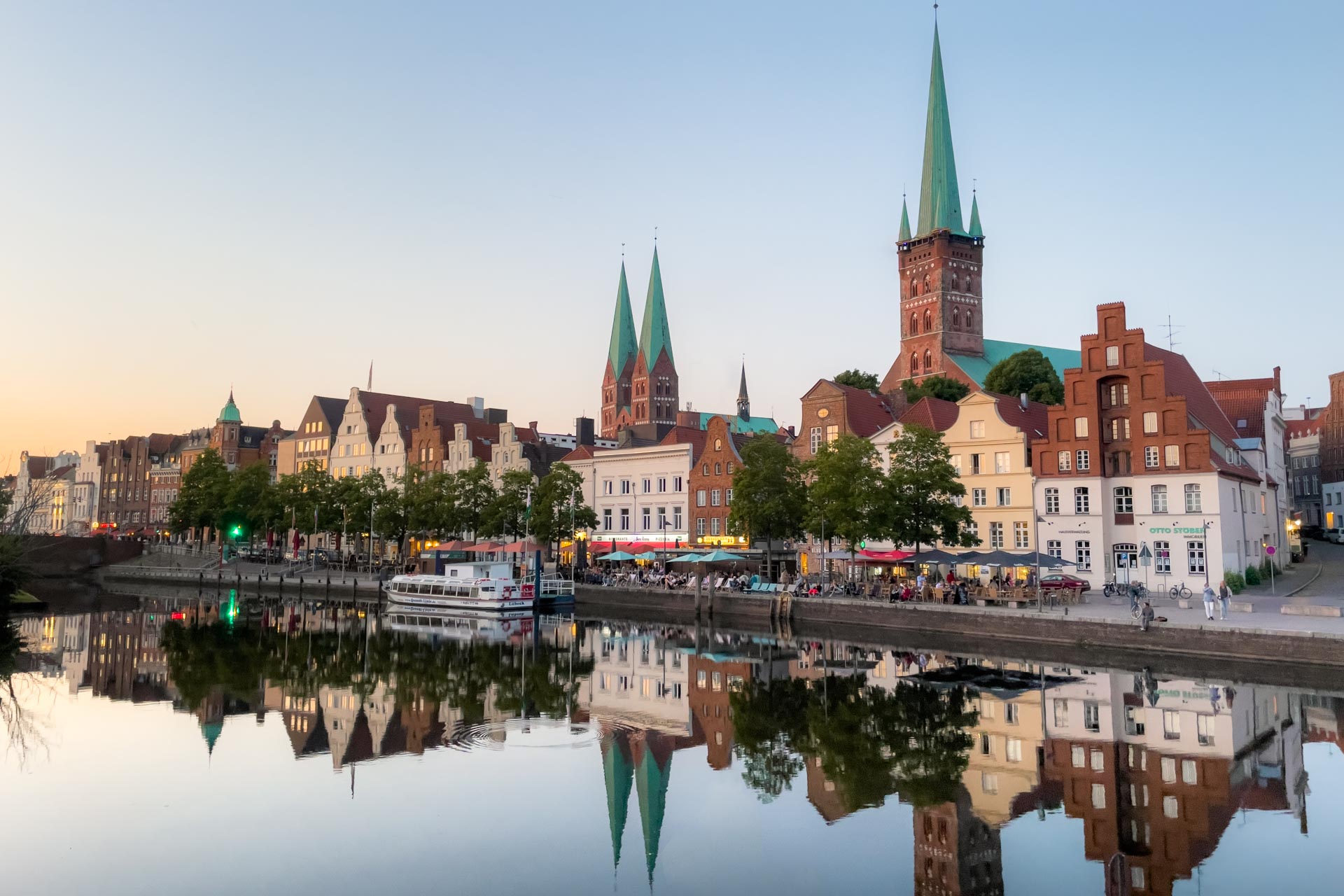
A Complete Travel Guide to Lübeck: 15 Best Things To Do & See
Lübeck: queen of the hanseatic league.
Guten Tag Lübeck!
Located on the River Trave , its strategic position close to the Baltic Sea once crowned it the Queen of the Hanseatic League – a flourishing alliance of merchant cities during the Middle Ages.
This has made Lübeck rich in both history and gold which is evident when you walk around the historic Old Town (Germany’s most extensive UNESCO World Heritage Site !).
Here you won’t be able to miss the impressive seven towers of the five main churches along with the many medieval merchants’ homes .
Walk along the banks of the river to take it all in from afar, float along on the water at sunset or try to get lost on the narrow cobbled streets of the Altstadt; no matter what, we’re sure you’ll fall head over heels for Lübeck.
We have visited Lübeck twice and really love the romantic atmosphere .
In this travel guide to Lübeck, we share the best things to do and see, why you should visit, where to stay, how long to stay, when to visit, how to get around the city, our best travel tips and much more.
Where to stay in Lübeck:
- Budget: CVJM Hotel am Dom – The best value hotel in Lübeck’s Old Town.
- Value for money: H+ Hotel Lübeck – A comfortable hotel choice right by the central station.
- Luxury: Radisson Blu Senator Hotel – Lübeck’s only 5-star hotel.
Search for the best value accommodation in Lübeck here .
Table of contents
Why visit Lübeck
How long to stay in lübeck, 15 best things to do and see in lübeck, where to stay in lübeck, is it safe to visit lübeck, how to get around lübeck, how to get to lübeck, when to visit lübeck, our best tips for visiting lübeck, what to bring to lübeck, sustainable travel tips.

As the second-largest city on the German Baltic coast , Lübeck is a thriving, vibrant place full of great things to do.
With a little more than 200,000 inhabitants, it’s big enough to offer all of the amenities and cultural offers you could need from a city while still retaining a small-city feel – especially if you spend most of your time on the island of the Altstadt (Old Town).
If you like walking slowly along charming streets, going to museums , learning about history, being awed by grand architecture and admiring riverside views , you’ll have an amazing time here.
Oh, and there’s also that whole thing about Lübeck being really famous for marzipan …
Overall, in our opinion, Lübeck’s blend of historical significance , architectural marvels, cultural richness and natural beauty make it perfect for every traveller seeking a comfortable and pleasant city destination in Northern Germany.
And when you need a break from the city, the Baltic coastline with its rhythmic waves and inviting beach resorts is just a hop and a skip away.

Lübeck is located just around 18 kilometres southwest of the Baltic Sea on the mouth of the River Trave – about an hour’s drive from Hamburg and really close to the Danish border, too.
Find all the best things to do and see in Lübeck on the map below.

There’s of course no single answer to how long you should stay in Lübeck as it all depends on your personal wishes and circumstances.
But we think you should stay for at least one night , while 2 to 3 days will be ideal for most people.
With its strategic location, it’s also possible to use Lübeck as a base for adventures in the region on longer trips.
One night in Lübeck
While you could get a fine sense of Lübeck from a half-day trip or a one-day trip , we really recommend staying for at least one night .
That way, you’ll be able to eat well at one of the many nice restaurants in the evening, stroll along the cobbled streets under the moonlight and wake up to beautiful morning views of the city – all without hurry .
2 to 3 days in Lübeck
With 2 to 3 days in Lübeck, you’ll have plenty of time to explore the historic Altstadt (Old Town), visit the major landmarks on the island including the museums and churches, savour some local cuisine and soak in the charming atmosphere.
You can take everything slow , allowing you to discover lesser-known spots, enjoy a boat tour on the River Traver, or take day trips to nearby destinations such as the Baltic Sea coast with its nice beaches or to other attractions in Schleswig-Holstein and its surroundings.
Spending more than 3 days in Lübeck
Unless you have a special interest in the history of Lübeck, we think most people would be hard-pressed to find new things to do for much more than 3 full days in Lübeck.
With that said, it can still be a wonderful base for exploring the region.
If you find a nice place to stay, we can easily picture staying in Lübeck for a week and using the city as a springboard to Northern Germany .

What to do in Lübeck depends on your interests, of course, but on our visits, we’ve spent most of our time in Lübeck’s Old Town which is also where most of the most popular sights and attractions are located.
Get ready to experience the best things to do and see in Lübeck!
- Holsten Gate (Holstentor)
- St. Mary’s Church (Marienkirche)
- Lübeck Cathedral (Lübecker Dom)
- Streets of the Old Town (Altstadt)
- Hidden alleys and courtyards
- Sail around the Old Town
- Walk along the River Trave
- Salt storehouses by the river (The Salzspeicher)
- Lübeck Town Hall (Lübecker Rathaus)
- Hospital of the Holy Spirit (Heiligen-Geist-Hospital)
- Museums of Lübeck
- The House of the Seamen’s Guild (Haus der Schiffergesellschaft)
- Go to the beach in Travemünde
- Best day trips and excursions from Lübeck
- Lübeck Christmas Market (Lübecker Weihnachtsmarkt)
1. Holsten Gate (Holstentor)
Proudly standing guard on the western entrance to Lübeck’s Old Town, the Holsten Gate (Holstentor) is the image of Lübeck .
Holstentor was built in 1464, making it more than 500 years old .
Being one of only two remaining city gates (Burgtor to the north is the other one and it’s actually older), the Holsten Gate is composed of two towers and a central building with a passageway underneath it.
Inside the Holsten Gate, you’ll find the Holstentor Museum , putting on display the immense power and wealth of Lübeck’s Hanseatic trade past.

2. St. Mary’s Church (Lübeck Marienkirche)
You literally can’t miss St. Mary’s Church while visiting Lübeck.
The church with the iconic towers is located at the highest point of the Old Town, making it visible from all over the city.
Its importance transcends its huge size as it’s referred to as “ the mother church of brick Gothic ” – having set the standard for around 70 other churches in the Baltics. Pretty cool!

3. Lübeck Cathedral (Lübecker Dom)
Lübeck’s cathedral is one of the oldest monuments in the city, built back in the 12th century by Lübeck’s founder, Henry the Lion (Henry III).
Despite facing significant damage during World War II , the cathedral was meticulously restored and was completed in 1982, preserving its cultural significance while serving as a symbol of resilience.

4. Streets of the Old Town (Altstadt)
On our visits to Lübeck, we’ve spent most of our time on the island that constitutes the Old Town (Altstadt) – and most other tourists do the same with good reason.
Being completely surrounded by water and connected to the mainland via several bridges, you’ll never get completely lost.
So you might as well try to!
Exploring the smaller streets of the Altstadt is one of the best things to do in Lübeck, as each of them exudes its own unique charm .
Simply walking is the best way to get around. So put on some good shoes and discover one of Germany’s cosiest cities while being surrounded by amazing churches and Baroque architecture.

5. Hidden alleys and courtyards
Behind Lübeck’s grand facades lies a historical secret – a miniaturised town with snug houses and lush gardens in narrow alleys and hidden courtyards.
Today, this concealed world forms part of the Lübeck UNESCO World Heritage Site and the living urban culture with around 80 inhabited alleys and courtyards open to the public for a relaxed stroll through the Old Town.
Once numbering 180, these lovingly restored alleyway houses now represent coveted living space and exude idyllic romanticism , making visiting them a unique thing to do in the heart of Lübeck.
Go on a discovery tour and see how many treasures you can find!
Here are some of the most popular alleys (“gang”) and courtyards (“hof”) in Lübeck:
- Dunkelgrüner Gang .
- Von-Höveln-Gang .
- Kalandsgang .
- Haasenhof .
- Glandorps Hof .
- Füchtingshof .

6. Walk along the River Trave
While discovering the big landmarks and secrets of Lübeck’s Old Town is certainly one of the best ways to spend your time in Lübeck, we also think you shouldn’t miss the opportunity to walk along the River Trave.
You can walk on the side of the Old Town , on the other side of the water or switch it up by crossing some of the many bridges .
On both sides of the Trave River, you’ll find nice walking paths and we can almost guarantee you’ll return home with some striking photos of Lübeck.

7. Sail around the Old Town
Going on a boat tour on the River Trave around the Old Town is one of the best experiences in Lübeck.
You’ll get to see the city’s stunning architecture from a whole new perspective (including the famous seven towers), gliding peacefully past Lübeck’s famous buildings and charming bridges.
You can opt for a guided tour or rent a boat for yourself. Either way, sailing all the way around usually takes around an hour .

8. Salt storehouses by the river (Salzspeicher)
Even if you only have very little time to discover Lübeck , we recommend you to visit the Holstentor and then walk over the bridge (Holstenbrücke) to see Lübeck’s famous salt storehouses by the water, known as Salzspeicher .
These iconic brick structures , showcasing impressive Gothic architecture, stand on the banks of the River Trave, contributing to the city’s character while bearing witness to its rich trading heritage .
As the name implies, the salt storehouses used to store salt , which was used as both an important food preservative and for trade.

9. Lübeck Town Hall (Lübecker Rathaus)
Lübeck’s Town Hall in the heart of the Old Town is stunning and must be one of Germany’s most beautiful town halls .
Visiting it is certainly one of the most popular things to do in Lübeck.
You can of course admire it from outside , but it’s also possible to visit the Town Hall on a guided tour.
A peculiar difference in door heights unveils a fascinating tale in the courtroom once you’re inside:
Historically, the acquitted defendants triumphantly left through the tall door, heads held high with room enough for wearing a hat, while the convicted ones humbly exited through the low door, revealing their fate to the eager onlookers outside.

10. Hospital of the Holy Spirit (Heiligen-Geist-Hospital)
The Hospital of the Holy Spirit is one of Europe’s oldest hospitals dating back to 1286 and was impressively still used as a social institution up until the 1960s.
A proud testament to civic pride and charity , the Hospital of the Holy Spirit in Lübeck exemplifies social progress during the Middle Ages where the sick and elderly received care and support.
It’s also simply a beautiful photo motif and very centrally located in Lübeck’s Old Town.

11. Museums of Lübeck
For being a relatively small city, Lübeck has a lot of museums!
- St. Annen Museum : Appreciate art and cultural artefacts in this former medieval monastery, which now houses a significant collection of historical and artistic exhibits.
- Hansemuseum : Learn about the history and significance of the powerful Hanseatic League at this modern and interactive museum. Don’t miss the Lübeck Castle Monastery (Burgkloster) !
- Holstentor Museum : Discover Lübeck’s history and more about the Hanseatic League at this museum located inside the famous Holstentor gate.
- Museum Behnhaus Drägerhaus : Houses an important collection of 19th-century and Classical Modernism paintings and sculptures in an extraordinary building.
- Buddenbrookhaus : Visit the former home of the Mann family, which inspired Thomas Mann’s novel “Buddenbrooks,” and learn about the author’s life and work. Note: The Museum is temporarily closed, so the interim exhibition can be explored at the Behnhaus Drägerhaus.
- Günter Grass-Haus : Explore the museum dedicated to Nobel laureate Günter Grass, a renowned German writer and artist.
- Willy-Brandt-Haus : Visit the birthplace of former German Chancellor Willy Brandt, now a museum showcasing his life and political achievements.

12. The House of the Seamen’s Guild (Haus der Schiffergesellschaft)
The House of the Seamen’s Guild (Haus der Schiffergesellschaft) in Lübeck is a captivating historical building with a rich maritime heritage .
Its unique architecture and intricate details make it a must-visit attraction for those exploring Lübeck’s cultural treasures (and it’s great for photos!).
Go inside to discover the fascinating history of the seafaring community that once thrived in this vibrant Hanseatic city.
In summer, you can also check out the cosy inner courtyard with great views of St Jacob’s church just opposite.

13. Go to the beach in Travemünde
One of the nicest things about Lübeck is the fact that it’s possible to go from the Old Town to the beach in just 20-25 minutes .
All you have to do is to take the train to the last stop on the line called “ Travemünde Strand ” and you’re basically there!
The soft sandy beach is long and wide with plenty of room for its many visitors in the summer months.
As on most other beaches in Northern Germany, it’s popular to rent a Strandkorb (beach basket/hooded beach chair) for the day.

14. Best day trips and excursions from Lübeck
Lübeck is very strategically located to be used as a base for going on day trips in Northern Germany.
Travelling by either car or public transport, you can comfortably reach a lot of lovely places during the day and be back in Lübeck in the evening.
Depending on your schedule (and tempo), you could even combine a few of these destinations on a single day.
Here are some of the best day trips and excursions from Lübeck:
- Brodtener Steilküste : Continuing north along the coastline from Travemünde, the cliffs will start to rise up from the ocean granting you incredible views of the Baltic Sea. 30 minutes by car .
- Eutin : Check out Eutin Castle and the picturesque lakes. 35 minutes by car .
- Plön : Even more lakes and another castle (Plön Castle). 50 minutes by car .
- Kiel : The capital and largest city of Schleswig-Holstein. 1 hour and 15 minutes by car .
- Bad Segeberg : Famous for the mountain in the middle of the city, its bat cave and the annual Karl-May-Festspiele. 30 minutes by car .
- Hamburg : Germany’s second-largest city. 1 hour by car .
- Ratzeburg : A historic town on a small island. 30 minutes by car .
- Schaalsee : Lots of nature experiences to be had here. We walked the 5-kilometre-long path in the Seedorfer Werder forest. 45 minutes by car .
- Mölln & Schmalsee : Perfect for a little nature getaway. 35 minutes by car .
- Schwerin Castle : Marvel at the beauty of this amazing fairy-tale castle surrounded by a picturesque lake. 1 hour and 10 minutes by car .
- Schleswig : A historically Danish city known for its Viking past. 1 hour and 30 minutes by car .

15. Lübeck Christmas Market (Lübecker Weihnachtsmarkt)
Germany is renowned for its magical Christmas markets and Lübeck’s own Christmas Market, known as Lübecker Weihnachtsmarkt, is no exception.
In December, the festive atmosphere reaches its peak as locals joyfully serve glühwein and delicious roasted almonds all over the Old Town.
Drawing thousands of Germans and tourists each year , the market transforms Lübeck into a perfect destination for a Christmassy getaway in Northern Germany. We would love to go ourselves one day!
Read more about the Lübeck Christmas Market here .

Bonus: Other things to do in Lübeck
There are so many cool things to do in Lübeck, we couldn’t fit them all in this travel guide.
Here are a few extra ideas:
- Lübeck Botanical Garden (Schulgarten) : Relax and enjoy the peaceful surroundings of this lovely garden, perfect for a stroll in nice weather.
- Lübeck parks : Spend some time in one of the city’s parks, such as Stadtpark to the northeast of the Old Town, and enjoy green spaces, leisure activities, and beautiful landscapes.
- Lübeck Puppet Theatre (Lübecker Figurentheater) : Enjoy a unique cultural experience by attending a show at one of Germany’s oldest puppet theatres.
- Lübeck marzipan : Treat yourself to some of Lübeck’s famous marzipan – for example at the Niederegger Café and shop, which has been producing marzipan since 1806. We missed it ourselves but would love to try their vegan options !

When planning your stay in Lübeck, you’ll find that there’s a variety of places to stay; from charming hotels in the historic Old Town to convenient options near the central train station.
Whether you’re looking for a luxurious experience , a budget-friendly stay or something in between, there’s a perfect place for you to stay in Lübeck.
Search for the best value accommodation in Lübeck here (adlink) or scroll down to see some of our recommendations to the best hotels in Lübeck.
Luxury places to stay in Lübeck
Radisson blu senator hotel, lübeck.
The 5-starred Radisson Blu Senator Hotel very well might be the best hotel in Lübeck .
This was where we stayed on our second visit and we had a great time.
The waterside location close to Holstentor couldn’t be better and all of the hotel and room amenities were top-notch.
There were even quite a few nice vegan options at the breakfast buffet which is always appreciated.
Also, don’t miss the indoor pool .
Check prices and availability at Radisson Blu Senator Hotel (adlink) .

Atlantic Hotel Lübeck
Atlantic Hotel is located centrally in the southern part of Lübeck’s Old Town, making it easy to walk to every famous tourist attraction.
Being the only modern 4-star hotel in the Old Town , Atlantic Hotel Lübeck is a unique way to stay with state-of-the-art comforts while being immersed in the historic district.
Check out the all-around roof terrace with views of the seven towers of Lübeck for a great photo opportunity.
Check prices and availability at Atlantic Hotel Lübeck (adlink) .

Value for money places to stay in Lübeck
H+ hotel lübeck.
H+ Hotel Lübeck is a great value stay in Lübeck located conveniently right by the central station .
There’s a small gym and even a sauna !
Check prices and availability at H+ Hotel Lübeck (adlink) .

Friederikenhof Hotel Restaurant & Spa
For a relaxing stay a little outside of Lübeck’s city centre, check out Friederikenhof Hotel .
Located just 10-15 minutes of driving from the Old Town, you’ll be close to all of the popular things to do in Lübeck while being immersed in nature right by the River Trave .
Check prices and availability at Friederikenhof Hotel (adlink) .

Budget places to stay in Lübeck
Cvjm hotel am dom.
CVJM Hotel am Dom is one of the best-value hotels in Lübeck’s Old Town .
But be aware that you’ll be woken up by the nearby church bells every morning at 08:00 .
Check prices and availability at CVJM Hotel am Dom (adlink) .

Viva Hotel Lübeck
You might not be blown away by Viva Hotel Lübeck (although the view from some of the rooms is nice!), but it’s a solid budget accommodation in Lübeck.
Check prices and availability at Viva Hotel Lübeck (adlink) .

Hotel Hanseatic
Choose between rooms with private or shared bathrooms at Hotel Hanseatic , located just west of Lübeck’s Old Town close to the central station.
Check prices and availability at Hotel Hanseatic (adlink) .

Pension Lübeck
As one of the absolute cheapest places to stay in Lübeck , don’t expect too much from Pension Lübeck .
You’ll get a double bed to sleep in but the bathroom is shared.
Check prices and availability at Pension Lübeck (adlink) .

Like other German cities, Lübeck is a safe city to visit – also at night.
With that said, you always have to be aware of your surroundings when you move around in a city.
Take precautions and use your common sense .
Beware of pickpockets at the busiest tourist attractions and on public transport.
We felt entirely comfortable in Lübeck and would personally think that the city is at least as safe to visit as other big cities in Germany and Western European countries.

Especially Lübeck’s Old Town (Altstadt) is relatively compact, so the best way to get around is to walk .
It’s easy and safe .
To put it into perspective: walking all the way around Lübeck’s Old Town by the waterfront takes around 1 hour (with a length of ~ 5 kilometres).
Put on some good shoes and get around for free by simply walking from one place to the next – and you’ll be sure to see some interesting things along the way, too.

By public transport
If you stay outside of the Old Town island in Lübeck, you can easily take the bus to get into the city centre.
Check out the dynamic bus map here of all the routes .
There are also a number of options to rent electric scooters around town.

For both of our visits to Lübeck, we drove there ourselves – although we didn’t use the car to get around while in the city.
We recommend parking outside of the Old Town . Luckily, there are plenty of parking spots available for both short and long stays. Some hotels also offer parking.
Free parking is available on Possehlstraße which is quite centrally located.
Apart from that, parking is usually paid between Monday to Saturday from 10:00 to 18:00 and on Sundays from 10:00 to 14:00.
Check out the dynamic map of parking spots in Lübeck here .

Car to Lübeck
Lübeck is well connected to the German autobahn system (national motorways).
That means it’s easy to get here by car from all over Europe.
Travelling from Hamburg , take the A1 Autobahn northeast towards Lübeck and you will arrive in about an hour.
Be aware that cars on the autobahn generally drive fast – and by fast, we mean up to 200 km/h!
There are several sections with no speed limit at all so it’s important to look thoroughly in the rearview mirror and side mirror before changing lanes and overtaking.
Take the train to Lübeck
Lübeck is well connected to the Germain train network.
The trip from Hamburg Central Station (Hamburg Hauptbahnhof) takes just around 45 minutes with connections every 30 minutes from 08:00 to 20:00 and every hour before and after that.
From Kiel, the trip takes a little more than one hour , while taking the train from Berlin (with a connection in Hamburg) will take ~ 2 hours and 45 minutes .
We have previously used the Deutsche Bahn website to order train tickets.
Flights to Lübeck
Lübeck has its own airport called Lübeck-Blankensee Airport (LBC). Year-round there are flights to Munich , Salzburg in Austria and Bergen in Norway . There are also seasonal flights to other destinations around Europe.
Nearby Hamburg Airport (Flughafen Hamburg) is much much bigger and very well-connected both nationally and internationally.
Getting to Lübeck from Hamburg Airport is easy . Just hop on the S-Bahn (suburban rail network) line S1 to Hamburg’s central railway station. It runs every 10 minutes and takes less than half an hour. From there, you can take a train to Lübeck as described above.
Use our adlink below to find the cheapest tickets:
Search for the cheapest flight tickets on Momondo .
Ferry to Lübeck
Ferry connections to nearby Travemünde (reachable in just 20-30 minutes from Lübeck) provide convenient transportation between Germany and destinations like Liepaja in Latvia, Klaipeda in Lithuania, Trelleborg, Karlshamn, and Malmö in Sweden as well as Helsinki in Finland.
If you’re travelling from Eastern Denmark (Sjælland and Copenhagen), the easiest way to reach Lübeck is with the short ferry crossing between Rødby and Puttgarden operated by Scandlines.

There is really no bad time to visit Lübeck, although there are, of course, noticeable differences between the seasons.
But when is the best time to travel to Lübeck?
We were there ourselves in August the first time and in June the second time. On both visits, we enjoyed warm, perfect summer days.
Like almost all tourist destinations in the world, it’s smart to plan your trip around the most common holidays and instead visit in shoulder periods (if that’s a possibility for you).
That way you can avoid the biggest crowds and generally get cheaper accommodation and save on car rentals.
If it’s not possible to travel outside the holidays, fortunately, Lübeck doesn’t really get crowded.
Average temperatures in Lübeck:

Spring (March, April and May) is a beautiful time to visit Lübeck with sunny days and blooming flowers. It can still be a bit chilly, so check the weather forecast before you pack.
Summer (June, July and August) is of course the hottest season and the temperatures can get quite high in July and August. At the same time, it’s also at its rainiest in the summer so pack a rain jacket or an umbrella, just in case. The sun is usually shining from early morning until very late in the evening. The summer holidays in Germany are spread out between mid-June and mid-September.
Autumn (September, October and November) is a wonderful time to visit Lübeck. The autumn colours go well with the old, charming buildings in the city. The most beautiful yellow, orange and red autumn colours can typically be seen at the end of September and in October, perhaps also at the beginning of November before the leaves fall off the trees.
Winter (December, January and February) is generally cold but on the other hand, there are usually fewer tourists. If you’re planning to visit during Christmas or New Year, it’s smart to book your accommodation ahead of time.

- Credit cards can be used in most shops, but as in the rest of Germany, cash is still often used and it’s not unusual for cash to be used in parking and ticket machines, at cafés and the like.
- Get up early and be one of the first at an attraction if you want to avoid long queues in the high season.
- Drink tap water . It’s not only good for the planet, it’s also good for your wallet. The tap water in Lübeck is absolutely safe to drink – so bring a refillable bottle.
- Travel to Lübeck outside of the holidays . Accommodation prices are lower, good deals are easier found and there are fewer tourists.
- Walk, walk and walk some more . Walking around Lübeck is free, easy and simply the best way to get around. And you’ll probably find many hidden gems along the way.

- Travel insurance ( adlink ). Never travel without it!
- A good camera – here’s a guide to the gear we use .
- Sunscreen ( adlink ). Especially if you visit Lübeck in the summer (and plan to go to one of the nearby beaches!). We recommend that you use an organic, vegan sunscreen without oxybenzone and other harmful chemicals.
- Hiking shoes , sneakers , sandals or other shoes you can walk in comfortably.
- Swimwear if you are staying at a hotel with a spa area.
- A refillable water bottle and snacks . You can drink the tap water in Germany.
- Cash for parking and other small purchases, especially 1 and 2-euro coins. Not all places in Germany accept credit cards.

To travel as sustainably as possible, we recommend the following:
- Bring your own drinking water in a refillable bottle.
- Avoid single-use plastics .
- Dispose of waste properly and do not throw it on the ground.
- Check your sunscreen before going in the ocean. Many brands contain oxybenzone and other chemicals that can be harmful.
- Take only photos, leave only footprints . Let everything stay in its natural place.
- Respect wildlife.
Thanks for reading
Thanks for getting all the way to the end!
We hope this Lübeck travel guide has been useful.
What do you think about Lübeck?
If you’ve been to Lübeck it would be awesome to hear your best tips in the comments.
If you haven’t been yet, please don’t hesitate to ask us anything. We’re glad to help.

Pin for later:

Our favourite travel resources:
- Booking.com for cheap hotels.
- Momondo for the best flight deals.
- SafetyWing for travel insurance. We also like World Nomads and True Traveller . All three compared here .
Our camera gear:
- Panasonic GH5 . Used for all of our photos and videos.
- DJI Mavic 2 Pro . Best drone out there!
- Sirui Tripod . Lightweight and strong.
- See all of our camera gear here .
Related articles:
- Baden-Württemberg Travel Guide: 10 Best Things To Do & See in Germany’s Sunny Southwest - Everything you need to know about the Baden-Württemberg region including what to do, when to visit and where to stay
- Travel Guide to Schleswig-Holstein: 12 Best Places to Visit in Germany’s Northernmost State - Everything you need to know about visiting Schleswig-Holstein including what to do, which towns to visit and when to go
- Büsum Travel Guide: 10 Best Things To Do & See by the Wadden Sea - Everything you need to know about Büsum including what to do, when to visit and where to stay
- Bad Segeberg Travel Guide: 8 Best Things To Do & See Around the Fascinating Mountain - Everything you need to know about Bad Segeberg including what to do, where to stay, when to visit - and when not to!
- Travel Guide to the Duchy of Lauenburg Region: 7 Best Things To Do & See - Everything you need to know about the Duchy of Lauenburg region including what to do, when to visit and where to stay

Leave a Comment Cancel reply
Notify me of followup comments via e-mail.

- Destinations
- Digital Nomad
- Travel Tips
- Inspiration
- Travel Videos
- Work With Us
Copyright © 2024 Northabroad
- Affiliate Disclaimer
- Terms and Conditions
- Privacy Policy
Privacy settings
Here you will find an overview of the types of cookies used on the website. You can set your consent for each category individually. Further information can be found in the privacy policy .
- Essential Cookies For the use of the website with all functions (e.g. user settings, watch lists, etc.)
- Statistics Statistics Cookies collect information anonymously. This information helps us to understand how our visitors use our website.
- Marketing In order to provide you with the best possible offer in cooperation with our partners, we use marketing tools. For example, in order to use our chatbot, you must activate this setting.
- External contents Required for viewing external media and third-party content. The provider may set cookies for its part. The respective data protection regulations of the provider apply.
- Inspiring Germany
Cities & Culture
- Nature & Outdoor Activities
- Royal Palaces & Castles
- Experience & Enjoy
- Current highlights
- Sustainable travel
- Barrier-free travel
- Easy language
- Federal states
Lübeck: a northern city of beauty and intellect
Lübeck, the Queen of all the Hanseatic cities, was founded in 1143 as 'the first western city on the Baltic coast'. A Medieval ambiance and historical and cultural attractions still dominate the wonderful cityscape today and hark back to the city's glorious past as a Free and Hanseatic city.
As one of the most illustrious early seats of global trade, Lübeck has always been pretty special. Surrounded by water, the Old Town with its seven towers and five main churches is testament to 1,000 years of eventful history. As such, it is a UNESCO World Heritage Site in its own right, as the Gothic, Renaissance, Baroque and Classicist buildings, narrow lanes and streets, churches and monasteries, merchants' houses and fortifications come together to form a remarkable whole. An excellent example of Brick Gothic architecture, the St. Mary's Church features the world's tallest brick vault. Just a stone's throw away is the modern MuK music and congress hall, Lübeck's main venue for the Schleswig-Holstein Music Festival.
Holstentor Gate
Salt warehouses, european hansemuseum.
Other significant buildings in the Old Town include the ensemble around the Town Hall, the castle monastery, the Koberg square, the district between St. Peter's Church and the cathedral, the Holsten Gate – the city's most famous landmark – and the Salzspeicher salt storehouses on the banks of the Trave River. Medieval Lübeck is the perfect place for an unforgettable stroll. And when the sun goes down, the city's numerous pubs, restaurants, bars and clubs come to life. A visit to the Heinrich and Thomas Mann Centre will guide you through the life and legacy of the illustrious literary brothers. And don't forget to sample the city's speciality: the world-famous Lübeck marzipan, which has been the sweetest temptation for as long as there have been almonds.
Discover more
Paths to happiness - holiday routes, a 48-hour trip is full of possibilities, german beer: a drinking tradition, recipes from germany, along the magic of peaceful lakes and wild river landscapes, bauhaus: follow in the footsteps of this world-famous art school, explore the surroundings.

James Bedford
A 12th-century gem boasting more than a thousand historic buildings, Lübeck’s picture-book appearance is an enduring reminder of its role as one of the founding cities of the mighty Hanseatic League and its moniker ‘Queen of the Hanse’. Behind its landmark Holstentor, you’ll find streets lined with medieval merchants’ homes and spired churches forming Lübeck’s ‘crown’.
Attractions
Must-see attractions.

Built in 1464 and looking so settled-in that it appears to sag, Lübeck’s charming red-brick city gate is a national icon. Its twin pointed cylindrical…

Europäisches Hansemuseum
Opened in 2015, this brilliant museum tells the remarkable story of the Hanseatic League, Lübeck and the region. For 600 years, city states in northern…

Museumsquartier St Annen
This museum quarter includes an old synagogue, church and medieval buildings along its uneven streets. The namesake St Annen Museum details the diverse…

Buddenbrookhaus
Thomas Mann, winner of the 1929 Nobel Prize for Literature, was born in Lübeck in 1875, and his family’s former home is now the Buddenbrookhaus. Named…

Günter Grass-Haus
Born in Danzig (now Gdańsk), Poland, Günter Grass had been living just outside Lübeck for 13 years when he collected his Nobel Prize in 1999. But this…

Sometimes described as a ‘fairy tale in stone’, Lübeck’s 13th- to 15th-century Rathaus is widely regarded as one of the most beautiful in Germany. Inside,…

Marienkirche
This fine Gothic church boasts the world's highest brick-vaulted roof and was the model for dozens of churches in northern Germany. Crane your neck to…

Heiligen-Geist-Hospital
The former Heiligen-Geist-Hospital has an elegant old entryway and a few resonances of Germany's first hospital (dating back to 1227). Through an early…

Germany Footsteps
Top 20 Things To Do In Lübeck [Don’t Miss Them!]
Considering going to Lübeck and want to know all the fun things to do in Lübeck Germany? We have you covered! Below you will find our full guide to all the best things to see in Lübeck to plan your ultimate trip.
Lübeck is one of the best cities to visit in Northern Germany. From its UNESCO World Heritage listed Old Town to its long and interesting history, there is much to captivate you here in Lübeck.
I was first fascinated by Lübeck when I was researching places to go on our drive south into Germany from Copenhagen. As soon as I saw photos of Lübeck’s Old Town, I knew it was somewhere we had to stop. Just. So. Gorgeous.
And as I read more, I wondered how I hadn’t heard of Lübeck before. From being the administrative capital of the powerful Hanseatic League to making its way into many lists of Germany’s best Old Towns, it was a must visit on our list.
So did it live up to the hype?
![visit lubeck germany 20 Things To Do In Lübeck Germany [Don’t Miss Them!]](https://germanyfootsteps.com/wp-content/uploads/2024/07/7-min-2-450x800.png)
Definitely! Lübeck is a great place to visit and I highly recommend a stop here on your own Germany adventures. It has a great range of attractions with just about all handily located in an easy to access Old Town that you won’t be able to get enough of. It’s awesome.
Ready to plan your own trip?
Below, you will find our Lübeck travel blog with everything you need to know about what to do in Lübeck Germany, the top Lübeck tourist attractions as well as the best places to stay for your ultimate Lübeck holiday. There is also a handy map of all the top Lübeck things to do.
Traveling to Germany? Click here to download your free Germany Trip Planning checklist . We’ll help you get ready for your trip!
Don’t miss the best hotel savings in Germany here >>
Table of Contents
An Introduction To Lübeck
Hansestadt Lübeck (“Hanseatic City of Lübeck”) is located in the northern part of Germany about 14 kilometres from the Baltic Sea. It has the largest Baltic harbour in Germany and a population of over 200,000.
Lübeck has a long history of being an important commercial centre after being founded in 1143. From 1230 – 1535, it was one of the main cities in the Hanseatic League , a powerful force at the time. It was even the administrative headquarters of the League for a period.
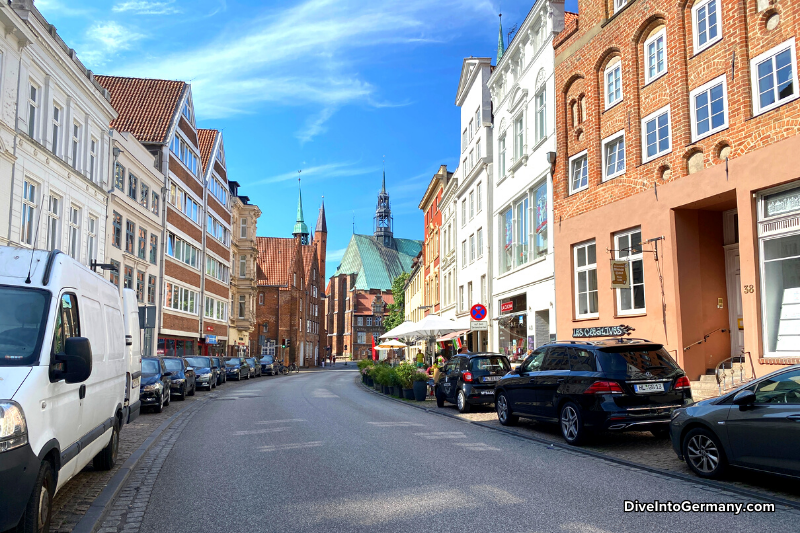
In the 1200s, Lübeck was briefly part of Denmark and in the 1800s, was briefly under French control. In 1815, it became part of the German Confederation.
In World War II, a large part of the Old Town was destroyed. However, it was restored postwar and the basic structure of the Old Town remains.
In 1987, Lübeck’s Old Town became the first in northern Europe to be UNESCO World Heritage listed.
You can learn more about Lübeck’s past here .
Top 19 Things To Do In Lübeck Germany
Here are the best Lübeck places to visit. Read through and select the ones that fit your interests and timeframe. If you only have one day to visit Lübeck top attractions, find our one day itinerary below.
The good news is that our list of what to see and do in Lübeck is all centered on the Old Town except for one item so it’s very easy to visit everything you want.
Altstadt (Old Town)
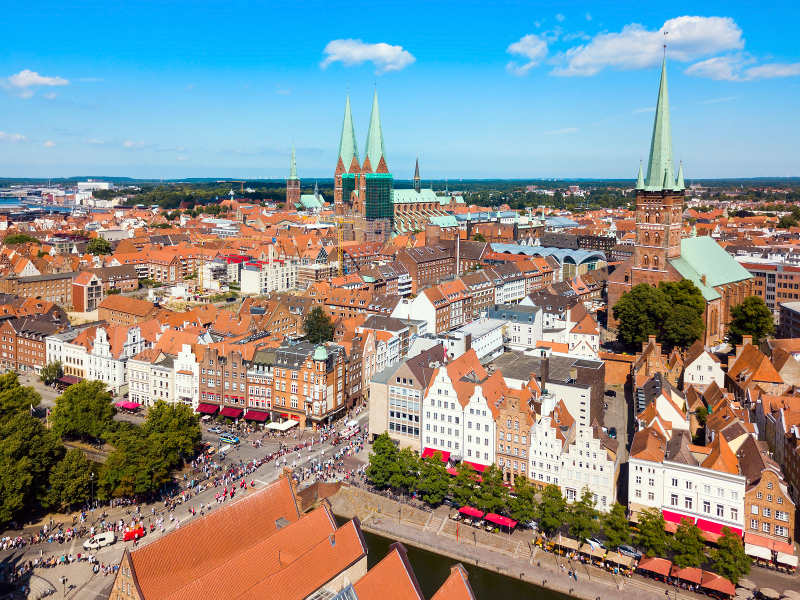
Lübeck’s UNESCO World Heritage listed Old Town is exactly what tempted us to visit Lübeck. It’s so picturesque in photos and the real thing is even more amazing.
Walking around the Old Town has to be my #1 of the things to do in Lübeck. The 13th – 15th century buildings here are well restored and it’s fun to just walk in whatever direction you want to see what you’ll discover.
So don’t just follow a map but walk around and try to get lost. You’ll never stay lost for long, but it’s part of the fun.
Find some hidden courtyards (more on this below), look out for the merchants’ houses and warehouses that show the importance of this trading hub. Explore museums, look our for steeples, eat the local food, enjoy half-timbered houses and more.
Lübeck’s Old Town is surrounded by the Trave River on a small island. I recommend you don’t just stroll within the Old Town but try walking around its edges by the river. It’s all very picturesque.

The whole area is like a living museum and you can easily enjoy strolling around this area for a couple of hours.
While you are doing it, you can take in some of the following…
Holstentor (Holsten Gate)
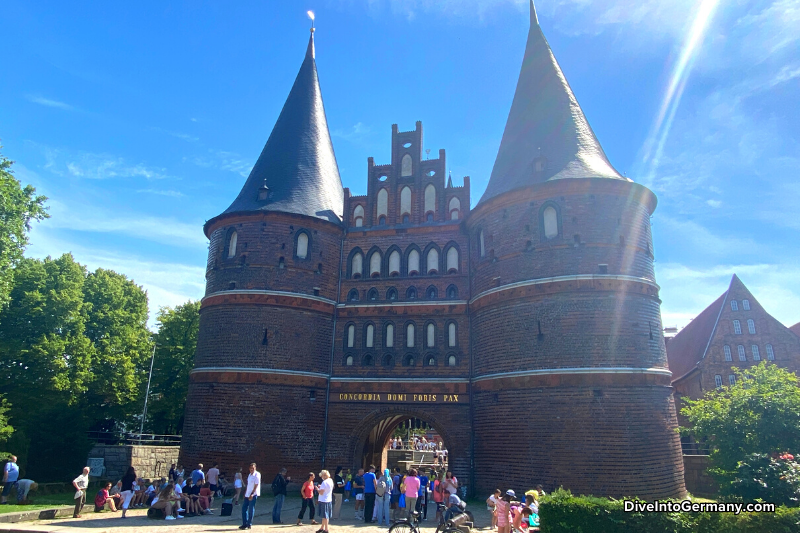
The most famous landmark in Lübeck, Holsten Gate was originally built in 1464 and is well known throughout Germany.
Once one of four medieval gates into the Old Town, only two now remain and this is by far the most impressive. If you are arriving by train, this will be your entry point into the Old Town. If you aren’t, still enter this way if you can. It does add to the whole experience.
It’s been rebuilt twice but has kept its grand appearance with twin towers leaning towards each other. A weak foundation makes it appear like they are sagging inward.
Inside the towers is the Museum Holstentor which documents the history of the gate as well as Lübeck’s history as a Hanseatic and Free Imperial City.
Petrikirche (Church Of St Peter)
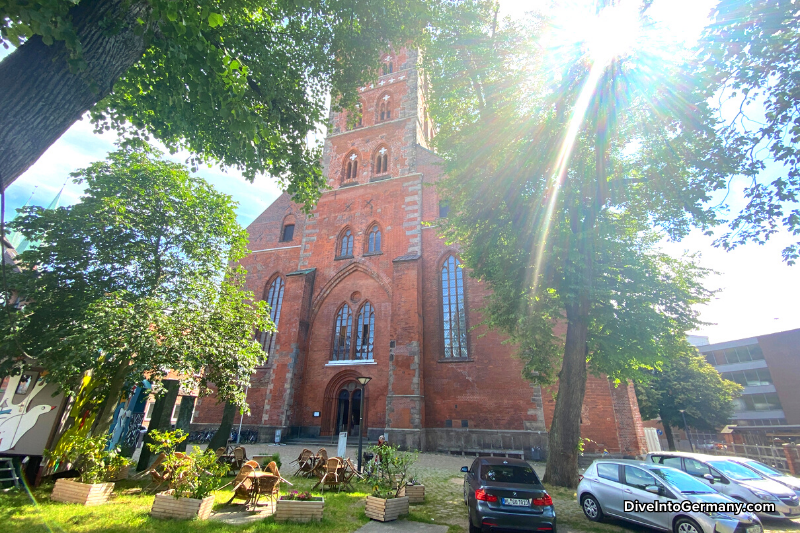
Not far from Holstentor, Petrikirche is the perfect place to head next on your Lübeck adventure.
While it’s no longer a church, it is an exhibition and function space and, most importantly for tourists, it has a great viewing platform at around 50 metres high which can be accessed via a lift – so no steep stairs to climb up in this church tower.

This is the best place to get great views in the city. In clear weather, it’s possible to see the Baltic Sea. Either way, it’ll give you great views over the Old Town and I found it useful to understand the lay of the land.
At Christmas time, it’s also home to an arts and crafts market.
First mentioned in 1170, this church was in ruins in the 20th century until it was finally restored in 1987. You can see the towers from all around.
Lübeck Rathaus (Lübeck Town Hall)

Regarded as one of the most beautiful in Germany, you’ll want to at least stroll past the Lübeck Rathaus. It dates back to the 13th century and was built in a Romanesque style along two sides of the Markt Platz (Market Square).
In the 1570s, Renaissance additions were made in light standstone with the darker brick coming from earlier times.
Inside is beautiful as well with interesting art work and the stunning Audience Hall (Audienzsaal).
The only way to venture inside is on a tour which take place three times a day Monday to Friday. Unfortunately, this is only in German.
Marienkirche (St Mary’s Church)
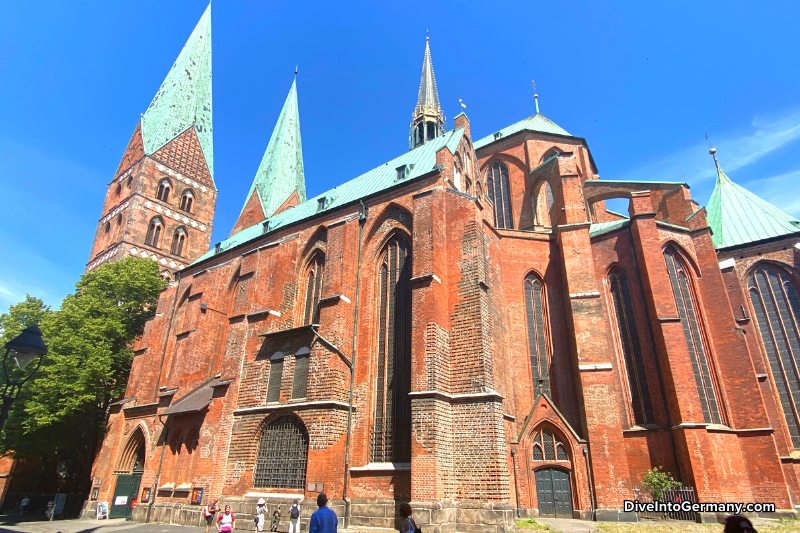
While there is no shortage of churches in Lübeck, this is the one to visit if you want the (in my opinion) best one. It’s also Germany’s third largest church and has the highest brick-vaulted roof in the world at 38.5 metres. The towers are 125 metres high and the whole church makes for quite a sight.
Built between 1250 and 1350, the brick Gothic design inspired many others around the Baltic.
Today, it is also known for its broken bells which fell during a bombing raid during World War II and have been left where they fell.

There are beautiful stained glass windows and also an astronomical clock which performs at midday when eight people figures pass by a Christ figure who blesses them.
The whole inside of the church is quite lovely and it’s a great place to explore and take a moment to reflect.
Buddenbrookhaus (Buddenbrook House)
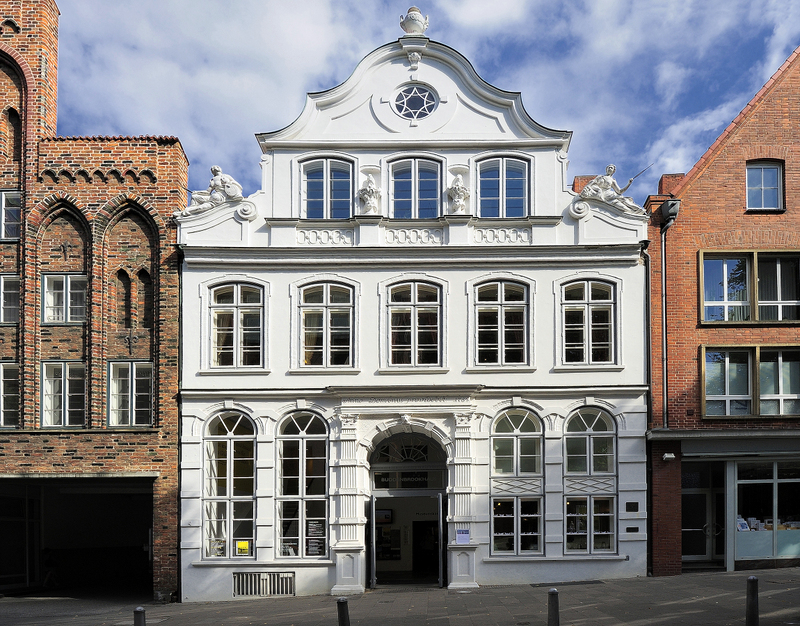
Literary lovers will want to consider a visisit to Buddenbrookhaus, the former family home of Nobel Literature prize winner, Thomas Mann who was born in Lübeck.
Buddenbrookhaus is a museum devoted to Thomas Mann and his “family of writers”. It aims to help people experience his book in real life as well as giving a history of their writing work.
The house itself is a stunning white Rococo-style house which dates from 1758 and is named after Mann’s novel about a wealthy Lübeck family that fails, The Buddenbrooks.
Europäisches Hansemuseum (European Hansemuseum)

If you want to learn more about the Hanseatic League, this museum should be on your list of must visit attractions. Opened in 2015, it does a magnificent job of detailing the history of the Hanseatic League and Lübeck.
It’s interactive and chock-a-block with information.
One of the cool aspects of this museum is that you get an RFID chip in your ticket which lets you select which town in the Hanseatic League you are most interested in (from a list of 50), what you are most interested in learning about (like how life was like for people at the time) and which language you want information in. As you walk around the museum, you can use this chip to display information related to this.
The story of the Hanseatic League is fascinating and it played such a big part in Lübeck’s history that I recommend you dedicate at least a couple of hours to this museum if you can.
On-site is also the restored Castle Friary which was formerly a monastery and worth a look if you have the time.
Click here to read our full review of the Hansemuseum.
Burgtor (Castle Gate)

We already talked about Holstentor, Burgtor is the other remaining medieval gate.
Located on the north side of the Old Town by the Hansemuseum, Burgtor may not be as grand but is still worth a look.
Built in late Gothic-style, construction started in 1227 but did not finish for another couple of hundred years. Its five floors have pretty arched windows, and it used to be the residence of prominent Lübeck residents.
While you can’t go inside, it’s worth walking through.
Museumsquartier St Annen (St Annen Museum Quarter)
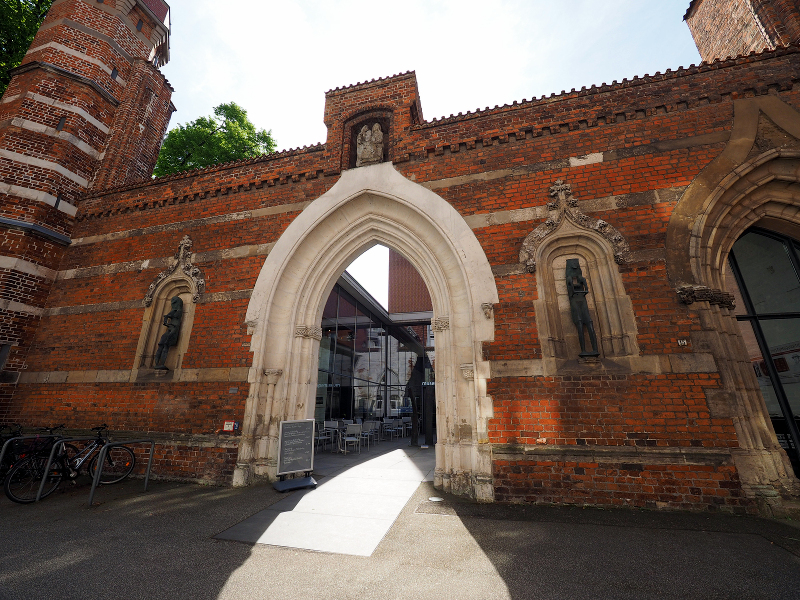
Another top attraction in Lübeck, Museumsquartier St Annen is well worth a visit.
Not just a museum, St Annen is home to a church, old synagogue and medieval buildings. The museum tells the history of this area and Lübeck over the last 700 years of art and culture.
Included is St Annen Kunsthalle which is home to art from the area both old and contemporary.
Günter Grass-Haus (Gunter Grass House)

Another place to visit for literary lovers, this museum is in honour of the 20th century author, Günter Grass. He spent much of this later life in Lübeck and passed away here in 2015. He is known for being a political writer and for winning the Nobel Prize for literature in 1999.
Günter Grass-Haus was opened in 2002 and focuses not just on his writing but also his art including paintings, sculptures and graphic art.
Other writers and artists are also featured.
Katharinenkirche (St Catherine’s Church)

This stop is for art lovers with sculptures by Gerhard Marcks and Ernst Barlach as well as some other art works.
It’s also a pretty building with some great decoration that was built in 1300. It is one of three former monastery churches that have been preserved in Lübeck.
It has limited opening hours so make sure you check before you go. At the time of publishing, this was only Thursday – Sunday in warmer months.
Willy Brandt Haus

Another Lübeck Nobel Prize winner is Willy Brandt, perhaps Lübeck’s most famous person. He was born here in 1913. The chancellor of West Germany from 1969 – 1974, Willy Brandt won the Nobel Peace Prize in 1971 thanks to his efforts to reunite West and East Germany.
Willy Brandt Haus is a museum which not only follows the career and life of Willy Brandt but also documents The Cold War era in Germany.
Brandt certainly lead an interesting life from being the mayor of Berlin when the wall was built to working as a reporter during the Nuremberg Trials. However, most space is dedicated to his efforts to reunite Germany, bridge the North-South divide and promote human rights.
Entry is free.
Behnhaus Drägerhaus Museum

The Behnhaus Drägerhaus Museum is an art museum housed in two former patrician villas. It’s home to a big collection of paintings and sculptures from the 19th century and classical modernity with a focus on the art of Romanticism and the Nazarenes.
The buildings that it calls home are the Behnhaus and the Drägerhaus, and there are also typical furniture displays.
Heiligen-Geist-Hospital (Hospital Of The Holy Spirit)
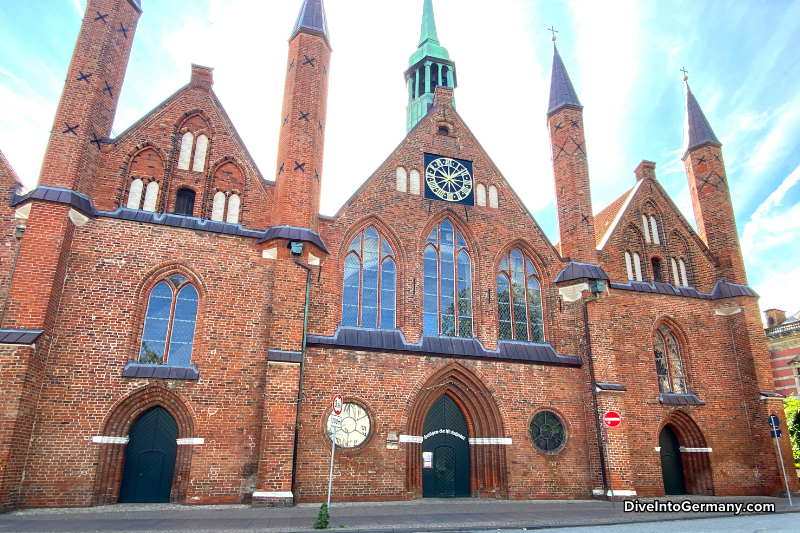
This hospital, founded in 1286, is one of the oldest social institutions in the world. It has been taking care of poor, sick and elderly residents from Medieval times to the 1960s.
Today, you can explore the architecture with 14th century frescoes and an altar from the 16th century in the Gothic hall church. It’s been well preserved and it’s worth a quick wander through its warren of cubicles where people used to live.

Entry is free but do note there isn’t that much to see here so you’ll be quick!
Dom (Lübeck Cathedral)
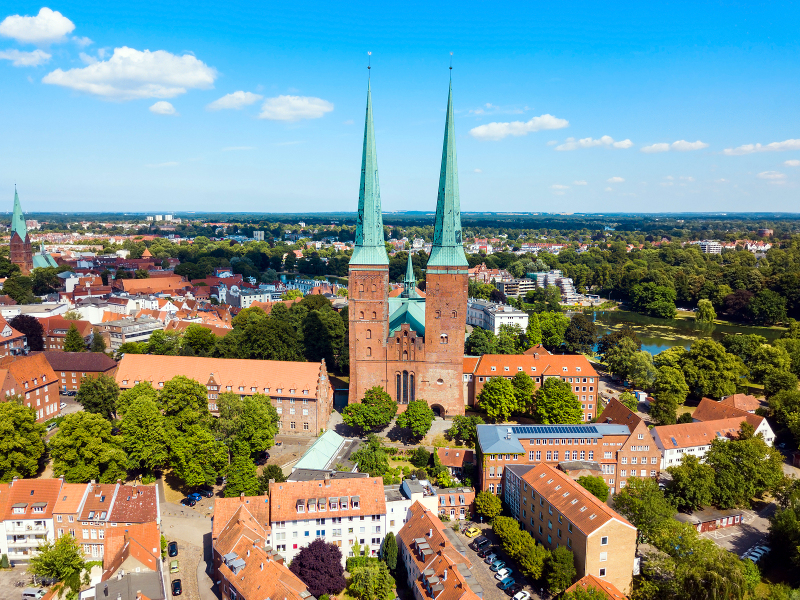
Another church worth the visit is Lübeck Cathedral at the southern end of Lübeck’s Old Town. It’s the oldest building in Lübeck and dates back to 1173 although the original Romanesque church was changed and enlarged using a Gothic style in the 14th century.
It was also bombed in WWII and was restored over nearly 40 years. Details and pictures of this restoration can be found inside as well as sculptures, a large organ and the 17 metre Triumphal Cross.
Hidden Courtyards
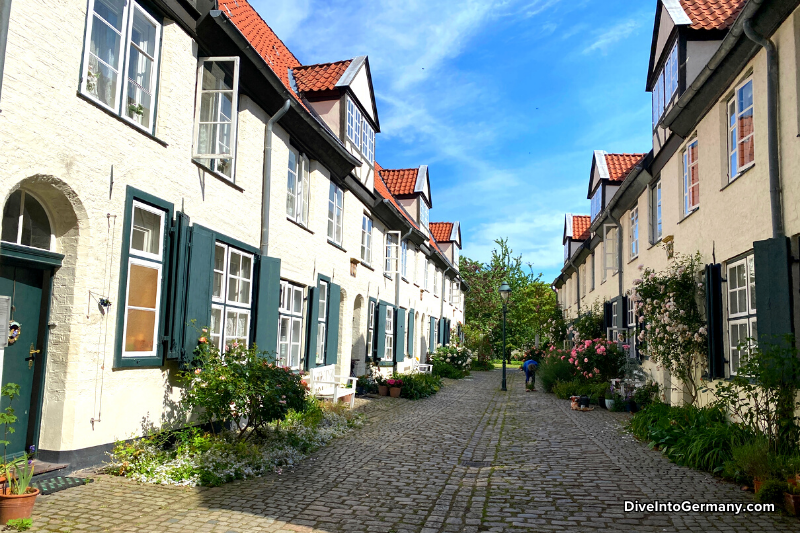
Lübeck’s Old Town is famous for its “hidden” courtyards and walkways. These date back to the Middle Ages when Lübeck’s burgeoning population meant that housing was is short supply. As a solution, single-store tiny homes were built in courtyards behind existing houses.
These courtyards were then accessed via walkways from the street.
If you love the idea of hidden homes and unexpected courtyards reached by little walkways, you’ll love looking for Lübeck’s courtyards with almost 90 still existing today.
They can mostly be found in Kober which is the northern area of the Old Town. Try looking along Engeslwisch, Glockengießerstraße and Engelsgrub. Around Lübeck Cathedral is also a good place to look.

If you don’t have any luck, try Füchtingshof and Glandorps Gang in Google maps for two more well known options. We did not find some examples hard to find though.
It’s quite a treat when you find them. Many are home to pretty flowers, timbered houses, cobbled paths and tiny gardens. They were a highlight of my time in Lübeck.
City Bus Tour
For an easy way to see more and learn more about Lübeck, consider a city bus tour. This is especially a good idea if your time in Lübeck is limited or you have limited mobility.
This 50-minute tour will take you around the Old Town starting at the Untertrave near the Holstentor. The tour price includes a headset so you can listen to the tour in your preferred language.
Find more information here.
Eat Marzipan

If there’s one thing in Lübeck you have to eat, it’s marzipan. Lübeck is so serious about its marzipan that there are even rules about the fact that Lübeck marzipan must be at least 70% almond paste and no more than 30% sugar and oils.
This pays off as I am usually not a fan of marzipan as I don’t like how sugary it is. However here, I loved it!
There are many places you can try marzipan across the city with the most iconic being Cafe Niederegger. There are so many marzipan items you can try from cakes to ice cream. You can even have some marzipan liqeur (so good, I recommend it 🙂 )

You won’t regret trying some Lübeck marzipan even if, like me, you don’t usually like it.
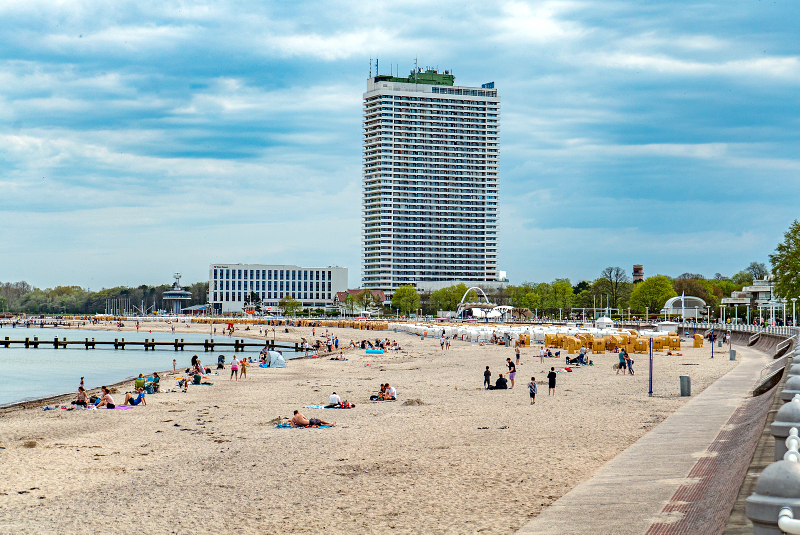
Looking for things to do near Lübeck Germany? Head to Travemünde on the Baltic Sea for some beach time.
A popular seaside resort town for hundreds of years, the beach has white sand and is around 1.7 kilometres long. The promenade by the beach is the place to stroll.
If you can leave the beach, Travemünde’s Old Town is pretty to explore having remained largely unchanged for centuries.
Just 20 minutes from Lübeck, Travemünde is at the mouth of the Trave River (münde means mouth). You can catch the train here from Lübeck.
Fun Things To Do In Lübeck In December
While most of the things to see in Lübeck Germany listed above are possible in winter time, there is a particular fun thing to do in Lübeck which is especially in the winter months.
Lübeck Christmas Market
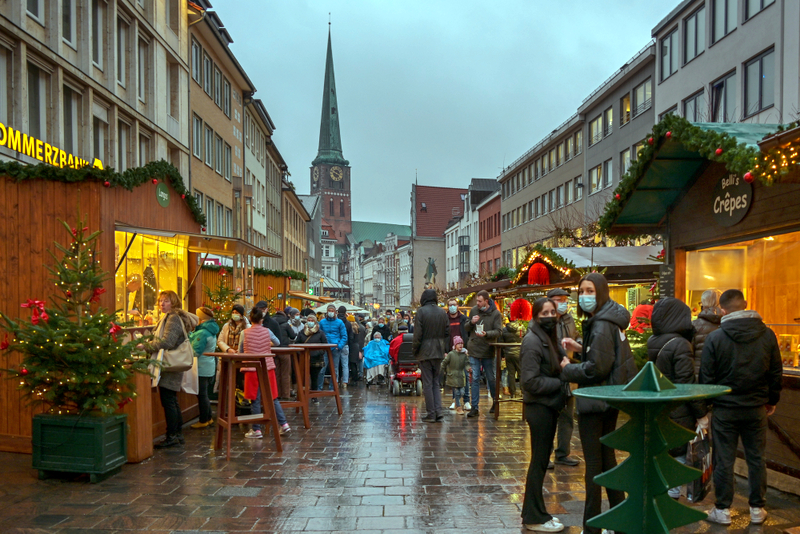
First mentioned in 1648, Lübeck Christmas Market has a long history and a fabulous setting in the Old Town around the Rathaus, Breite Strasse and in Koberg Square. With thousands of colourful lights, it makes for quite a sight.
With more than 400 wooden huts and stalls, there’s plenty to buy here from handcrafts to hot chestnuts, candied almonds and Glühwein. There’s a ferris wheel and other amusement rides. Close by, you’ll also find a market around Marienkirche with a fairy tale theme.
The market generally runs from mid to late November until the end of December.
But this is not all, by the railway station is another market that runs until Christmas. Petrikirche also has an arts and craft market.
All in all, you’ll have no problems getting into the Christmas spirit in Lübeck.
Overview Of Lübeck
You can check out many of the above attractions in this quick video overview of Lübeck.
What To Do In Lübeck In One Day
Only have one day in Lübeck? What a shame! But it’s ok, it’s still worth going to Lübeck if you only have one day.
With one day, I recommend you stick to the Old Town which is home to all the top Lübeck attractions apart from the beach at Travemünde.
With a day, you can visit most places apart from all of the museums. I recommend you head to the Old Town via Holstentor and then wander and enter the attractions that most interest you.
I especially recommend you make sure you get to:
- The viewing platform at Petrikirche
- Walk past the Rathaus
- Marienkirche
- Europäisches Hansemuseum
- And find some hidden courtyards
You can pick other attractions based on your interests.
The bus tour is also a great way to go if you are short on time.
In winter, definitely check out the Christmas Market if you are in town at the right time.
Lübeck Attractions Map
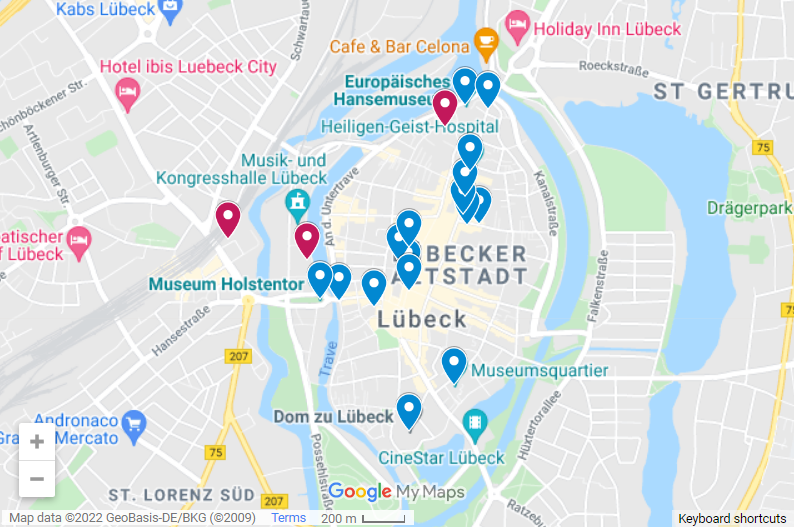
Best Place To Stay In Lübeck
When it comes to where to stay in Lübeck, there is a great range of hotels and other accommodation options. You won’t have any problem finding somewhere to stay.
Below I’ve listed a few different places to consider depending on what type of accommodation you are looking for.
If you want more options, you can use this map to help you find hotels and home rental accommodation around Lübeck.
BEST – Hotel Die Reederin Review
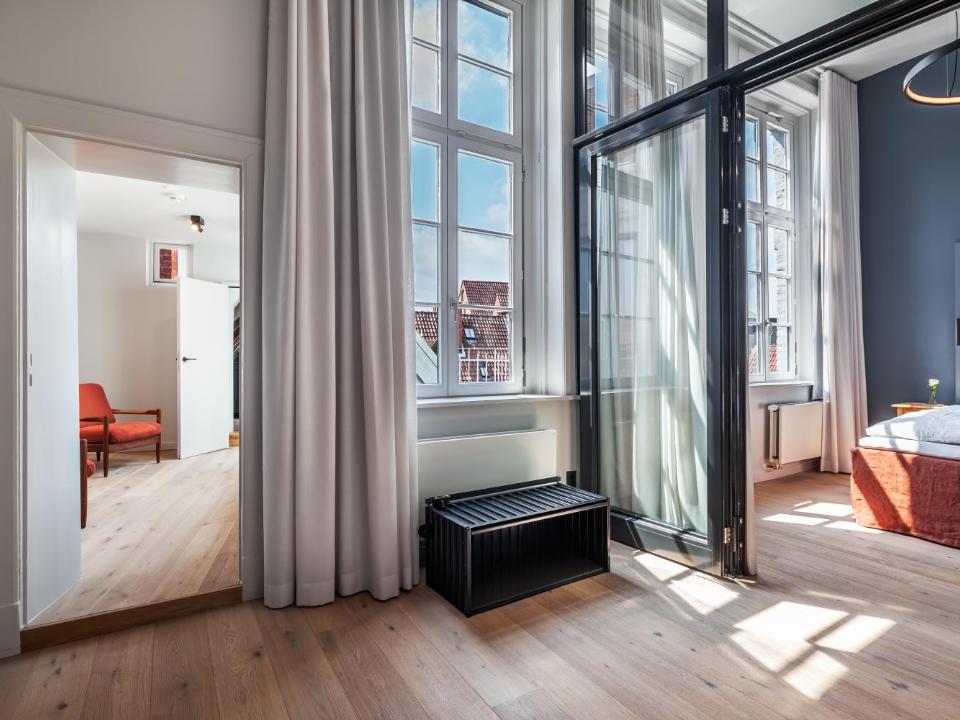
Located near the Hansemuseum in the northern part of the Old Town, Hotel Die Reederin is in a great position for exploring Lübeck. With only seven rooms (named after ships), this is a boutique, atmospheric hotel in a renovated old town house that used to be the seat of the shipping company FH Bertling.
Rooms here range from king rooms to family rooms for five to a king suite option. The rooms are themed and set up using their shipping heritage in unique and interesting ways. For example, sea containers were used in the bathrooms as wall cladding for the showers.
All rooms have toiletries, safes, free wifi and TVs and are beautifully presented. Some have balconies. Breakfast is included.
This is the place to stay in Lübeck if you want somewhere beautiful and unique in the Old Town.
Click here for the latest prices.
VALUE – B&B Hotel Lübeck Review

Located by the train station and just a short walk from Holstentor and the Old Town, B&B Hotel is a great choice if you want a budget price tag within an easy walk of the Old Town.
Rooms range from double and twin to triples and family rooms with a bunk bed. Rooms all have private bathrooms, desks, TV and wifi.
Buffet breakfast is available for a reasonable extra fee and pets can also stay for an extra fee.
A big pro of this hotel for us was the free on-site parking although it does fill up.
5 STAR – Radisson Blu Senator Hotel Review

If you like your hotels 5 star, this is the choice for you! Located on the Trave River opposite the Old Town, it’s just a few minutes walk to Holstentor and the Old Town as well as being close to the train station.
This hotel has everything you need with three eating options including a cafe, tavern and a fine dining restaurant. You can also get room service. There’s a pool and sauna as well as a billiard table, a playground and play corner for kids.
There are great outdoor spaces by the river as well.
Rooms are double or twin and come in standard, superior or suite options. The suites also have a living room. All rooms come with air conditioning, tea and coffee making facilities, bathrobes and TVs.
Parking is available for an extra fee.
How To Get To Lübeck
We travelled to Lübeck by hire car which made it very easy to get here. It’s easy to make your way here from anywhere in Germany. We actually travelled here from Copenhagen and a ferry takes you from Denmark about an hour from Lübeck very easily (Rødby Sogn – Puttgarden ferry).
There are also ferries to Travemünde from places in Finland and Sweden.
You can hire a car to get you to Lübeck by clicking here.
Lübeck has an airport with flights from key places in Germany and a few places in Europe. A better bet can be Hamburg Airport which is about an hour’s drive away as it has much better connections.
Click here to see latest flight prices and options.

There are regular trains and buses here. You can find timetables and all your options here.
Or you can find all the train timetables here and discount train passes here.
Once in Lübeck, it’s easy to get around as everything you’ll want to see is in the Old Town. Simply get here and then explore by foot. It’s an easy walk from the main train station.
Lübeck With Kids

Lübeck is a fun place to visit with kids as long as they love exploring Old Towns as that’s mostly what you’ll be doing!
We visited Lübeck with our three kids aged 6 to 12 and they had a great time. However, we did keep the museum visits to a minimum and made finding hidden courtyards into a game. And, of course, there was the reward (bribe) of marzipan for well behaved kids!
The city bus tour also worked well for us. For an hour, they love riding around in a bus listening to a tour and it’s a good break for all of us.
If you visit during summer, Travemünde is a great distraction for kids as some beach time is sure to make a great break from history for travel weary kids.
Final Words
Lübeck is a fun, beautiful and easy place to visit and explore. It has one of my favourite Old Towns of any in the world and I recommend a visit here, even if you just have a few hours to wander and enjoy.
It has a good amount of attractions. In a couple of days, you could get to just about everything while still having plenty of time to just enjoy. We loved it.
I hope you found this guide to Lübeck useful and you have a great visit as well.
Find our full guide to nearby Bremen here , Celle here or Hameln (home to the Pied Piper) here . Don’t miss our one week itinerary for Northern Germany here which includes Lübeck . Read more guides to visiting Northern Germany here.
Related Articles:

By Sharon Gourlay
Sharon first fell in love with Germany back in 2000 on her first visit. She loves the long history, the picturesque Old Towns, the castles, the food, everything really! Since then, she has visited many times and loves writing about Germany here so you can enjoy it too. In fact, Sharon loves German culture so much that she sent her kids to a German primary school in Australia. She especially loves Berlin and towns with charming Old Towns like Celle and Quedlinburg. Sharon also has a Certificate III in International Travel Sales and understands the nitty gritty of travel planning. Through this site, she'll help you have the perfect trip to Germany whether it's your first or tenth time!
An outstanding article. I have visited Germany many many times whilst working on time off visited most of the places that you mention Keep up the good work
Leave a comment Cancel reply
Your email address will not be published. Required fields are marked *
Save my name, email, and website in this browser for the next time I comment.
This site uses Akismet to reduce spam. Learn how your comment data is processed .

Home » Europe » Germany » 36 Hours in Lubeck, Germany
36 Hours in Lubeck, Germany
By Author Laura Longwell
Posted on Last updated: August 4, 2021
Lubeck, Germany, is like a painting. Its spires rise across the city; its colorful merchant houses—with their stepped and sloping tops—dot the landscape; its medieval buildings may just stop you in your tracks. And all this beauty is complemented by divine food, great shopping, and a proud history still visible across the city today. With so much to offer, this northern German city is not to be missed. Here is what to do in Lubeck, even if you’re short on time.
What to do in Lubeck
See the lubeck architecture, visit marienkirche, wander down breitestrasse, stop for a snack at café niederegger, visit the hanseatic league museum, eat at schiffergesellschaft, visit buddenbrooks house literary museum.
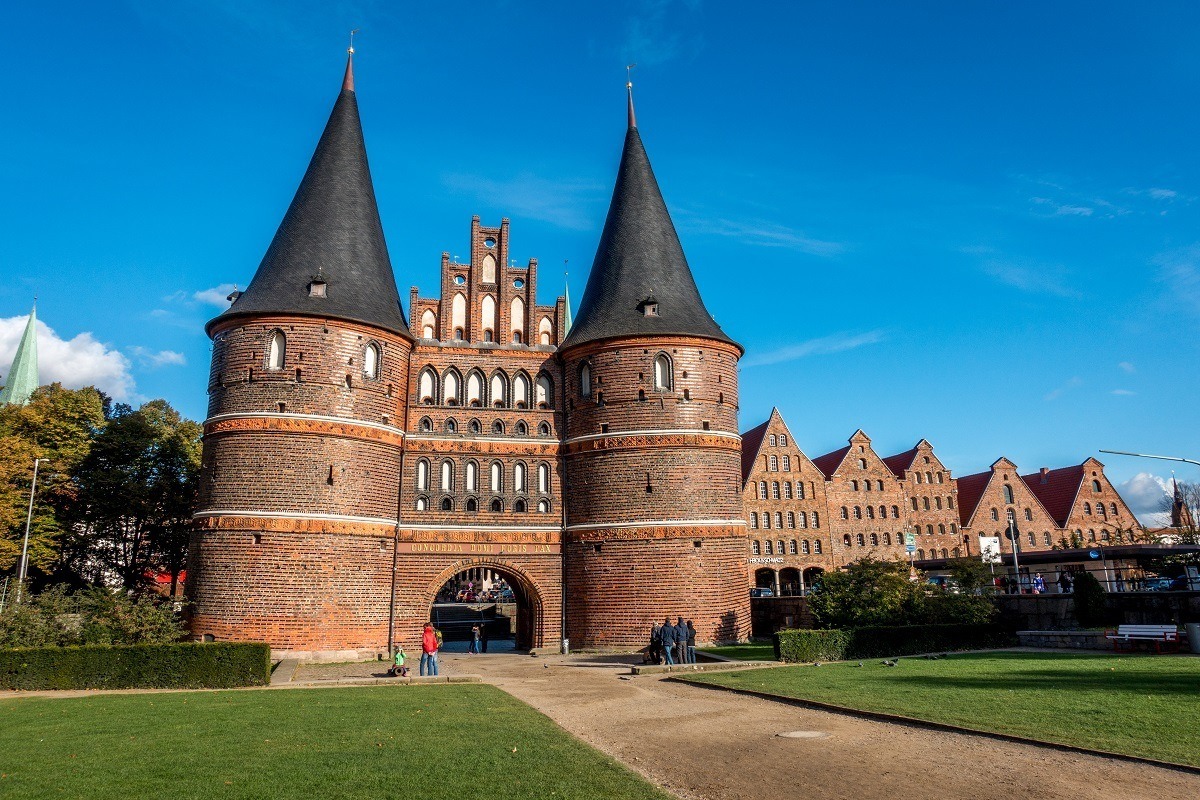
The buildings in Lubeck are some of the most unique we’ve seen anywhere in the world. The buildings, in fact, are the reason that the whole Old Town of Lubeck was named a UNESCO World Heritage Site back in 1987. They’re just spectacular.
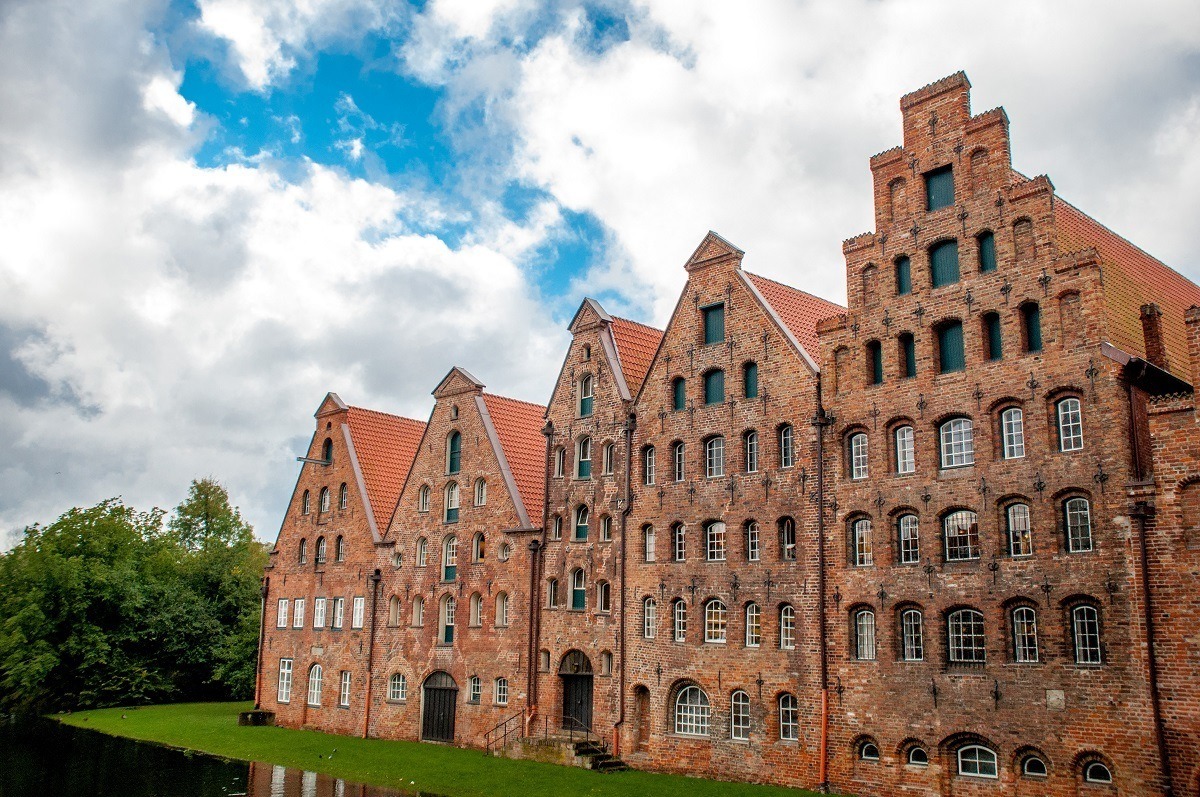
Although 20 percent of the city was destroyed during World War II, many of its historic buildings remained intact or were reconstructed. Three of our favorites were the Hospital of the Holy Spirit, the Holsten gate, and the salt storehouses.
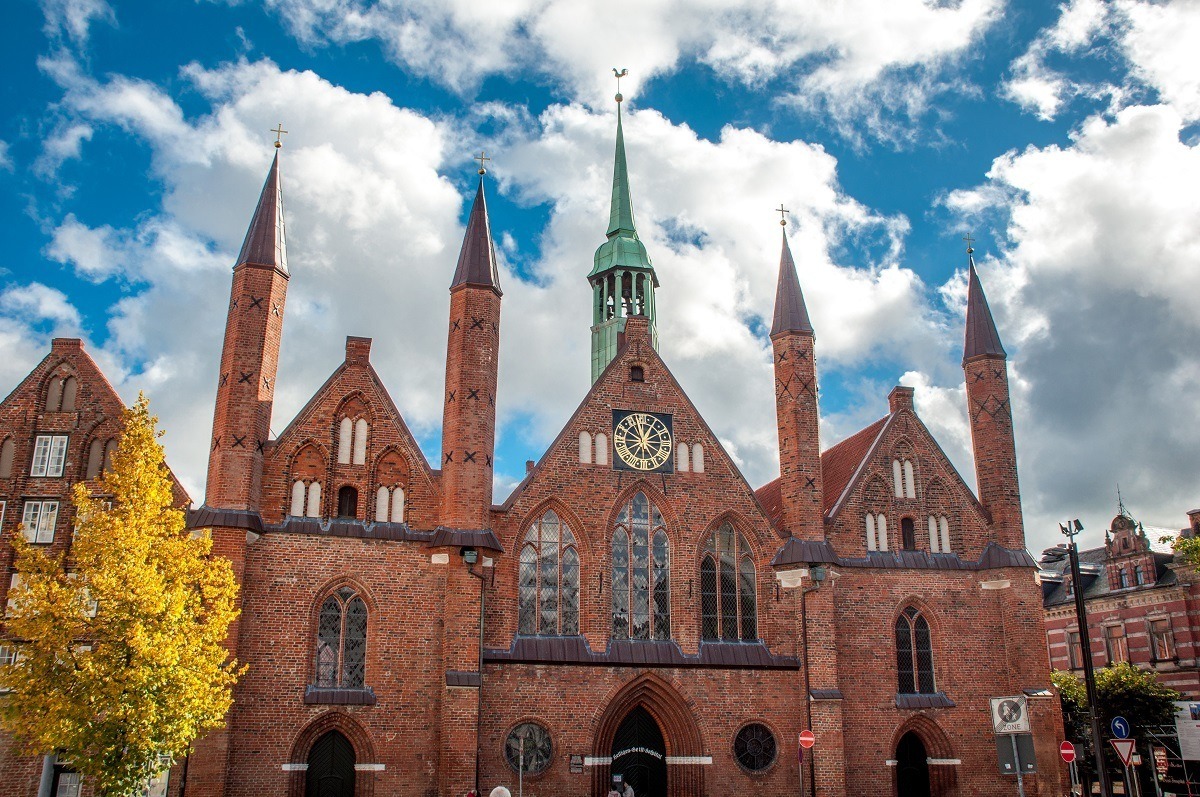
The Hospital of the Holy Spirit with its five copper spires dates from the Middle Ages and is one of the oldest social institutions in Europe, caring for the sick and elderly from the time it was built through the 1960s. The Holsten gate is another amazing example of Lubeck’s Hanseatic architecture, dating from the 1470s. It’s impossible to visit Lubeck without seeing the imposing structure. Hundreds of years ago, it both welcomed visitors and protected the city.
Nearby are the red-brick salt storehouses constructed from the 1500s to the 1700s. They were important for storing salt, which was in high demand before refrigeration. Now, they are just really pretty to look at in their perch along the Trave river and remind us more of the stepped gabled roofs of Bruges or Amsterdam than architecture in other parts of Germany.
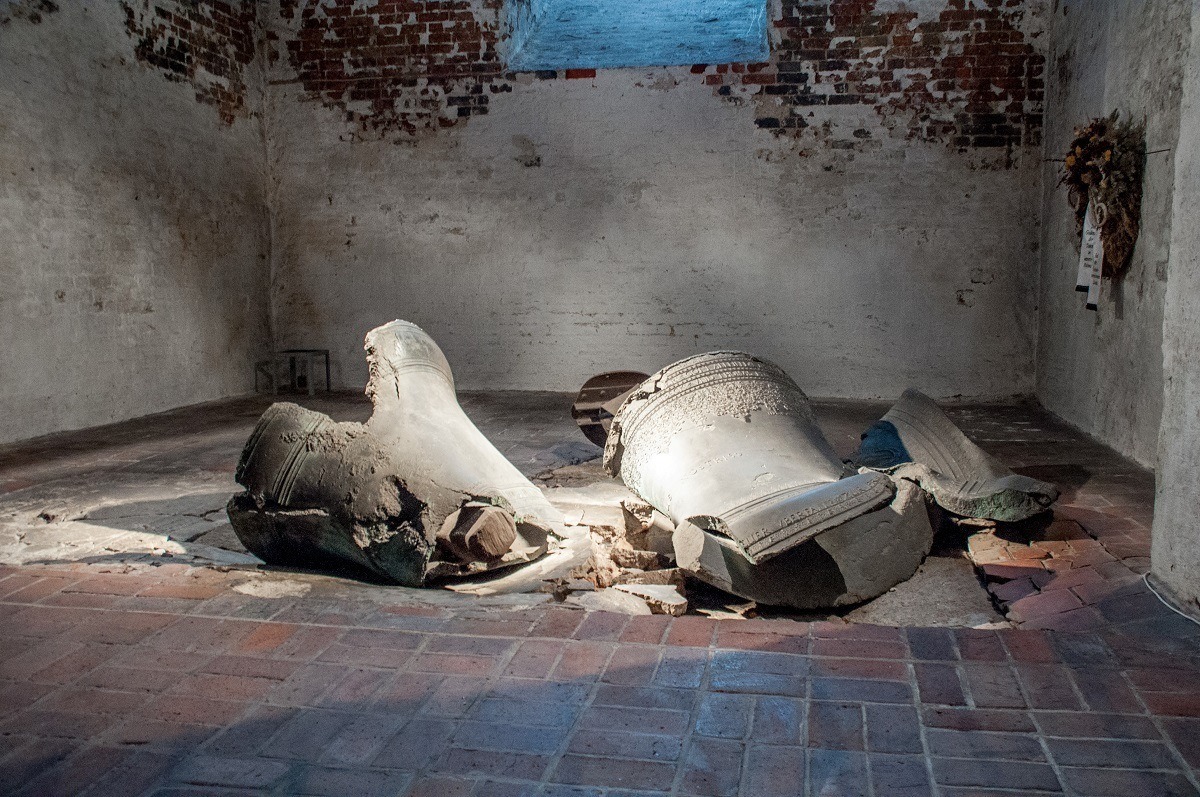
The Gothic-style St. Mary’s Church (Marienkirche) took 100 years to build, beginning in 1250, and is the third largest church in Germany. Its interior is filled with ornate carvings and artworks and is home to the world’s largest organ. A 1942 air raid almost led to the end of St. Mary’s, destroying the massive roof and sending its famous bells crashing to the ground. Two of the bells have been left where they fell as a memorial to those who died in the war.
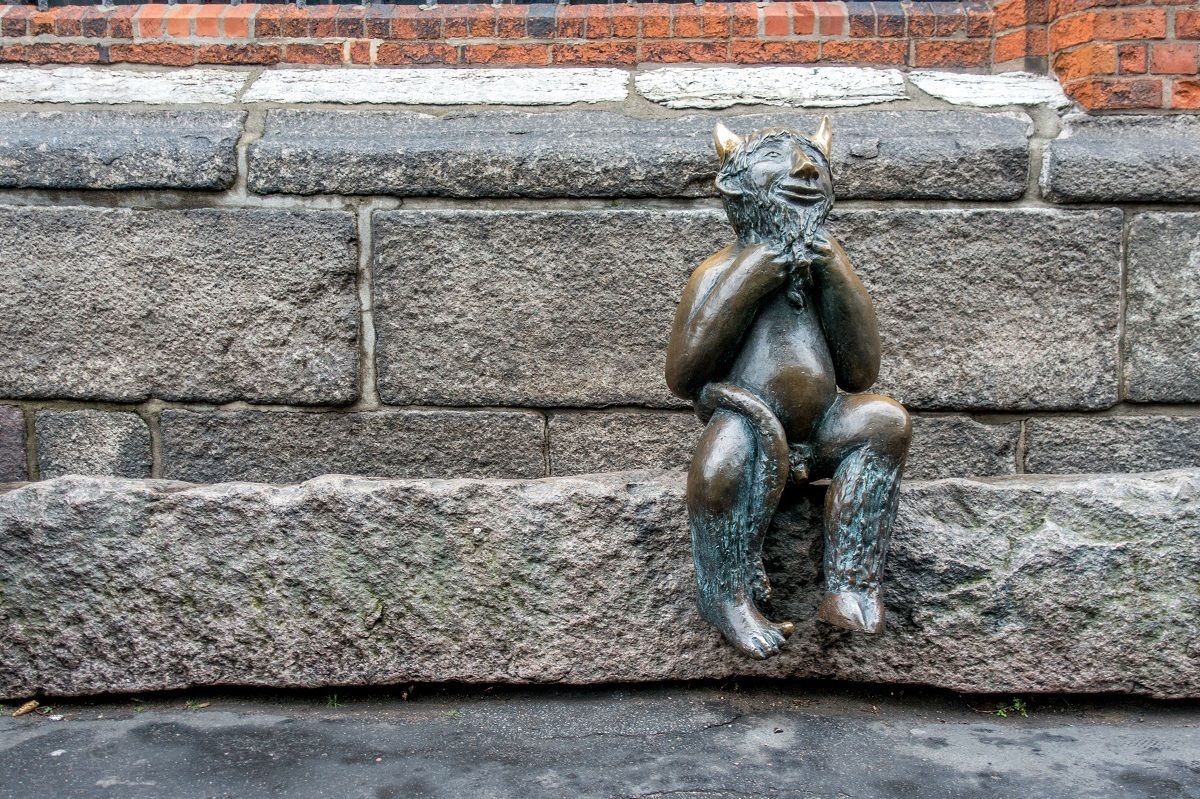
Outside St. Mary’s is an unlikely figure who surprised us–the Devil.
According to legend, when the first stones of St. Mary’s were laid, the Devil questioned the builders and was told the building would be a tavern. He was excited that the “sinful” place might help him recruit a few more souls, so he eagerly helped with construction materials for the building.
As the structure was completed, the Devil realized that the building was meant to be a church, so he tried to destroy it, dropping a boulder near the church. Today, he sits there waiting for people to emerge from the wine bar in the Town Hall a few yards away. But the joke’s on him–the exit for the wine bar is on the opposite side of the building.
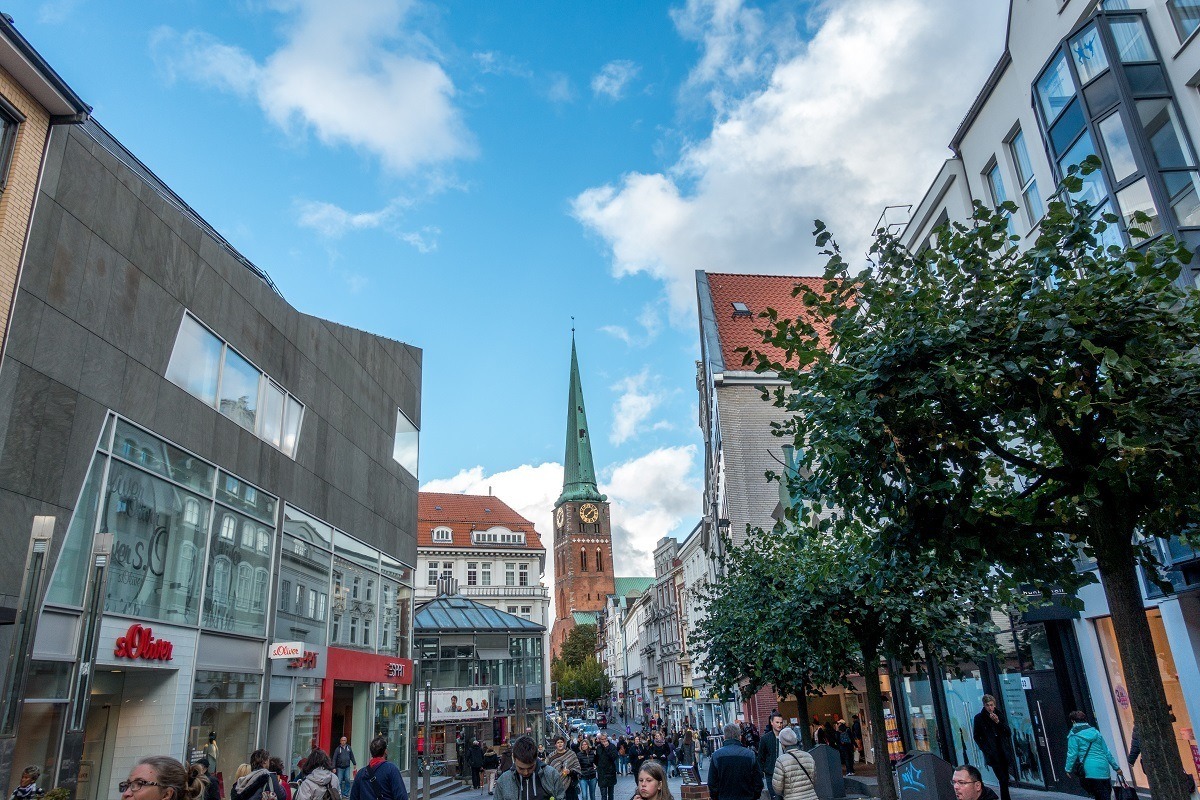
The pedestrian street Breitestrasse is a great destination if you’re looking for a momentary break from history. It’s one of the main shopping streets in Lubeck. There are plenty of shops to pause in for bargain hunters and big spenders.
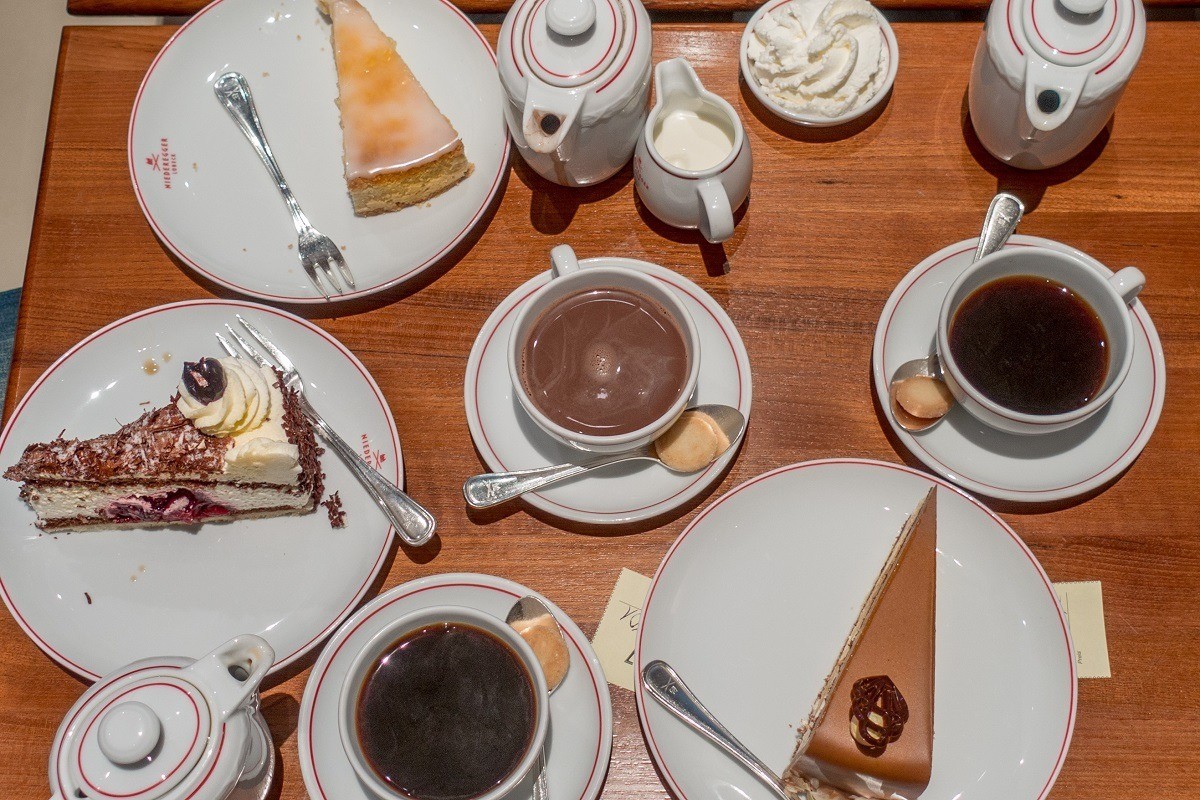
From the moment we decided to visit northern Germany, we were excited for marzipan. For over 200 years, the Niederegger family has made their famous almond specialty confection in Lubeck.
Marzipan is available all over town, but one of the best places to try it is Café Niederegger just across from the Town Hall in the heart of the city. We stopped by the cafe for marzipan, hot chocolate, and a couple of pieces of their fabulous cakes (we were partial to the apple cake and the Grand Marnier). Visitors can even see their marzipan museum complete with life-sized marzipan figures of everyone from Thomas Mann to Santa.
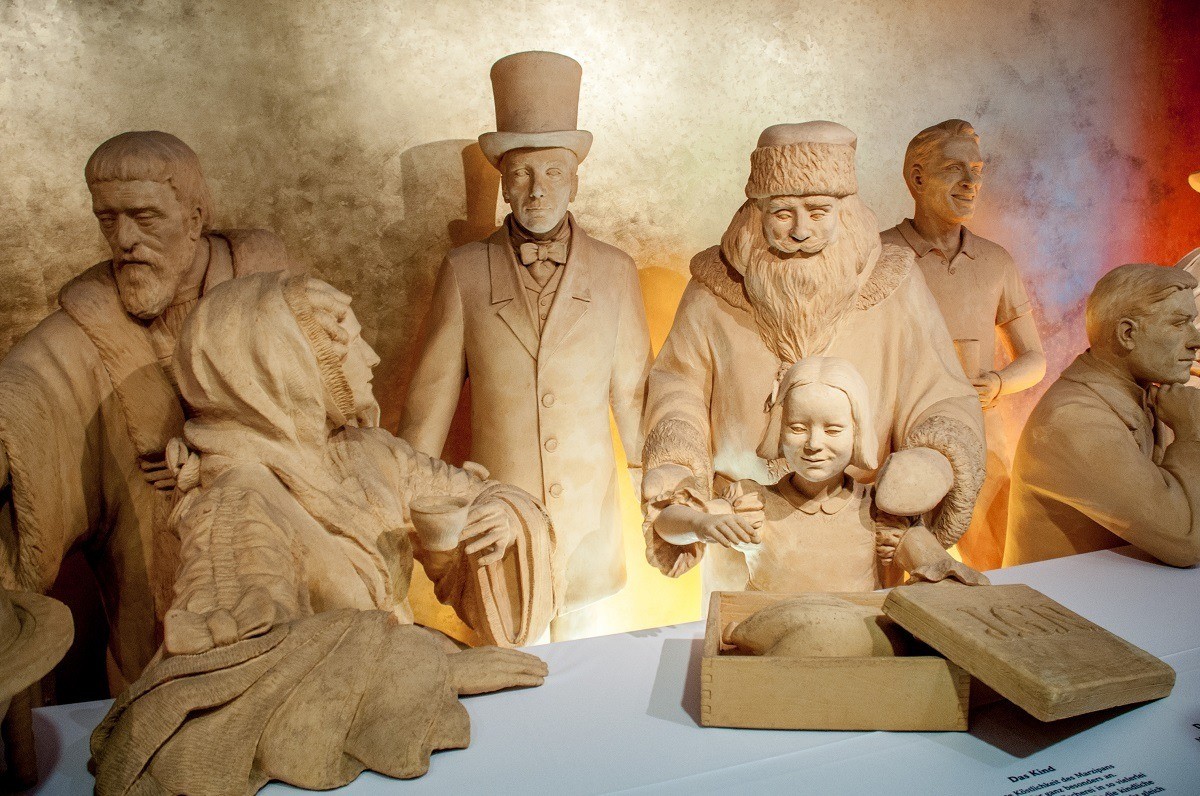
The interactive Hanseatic League Museum (Europaisches Hansemuseum) traces the roughly 400-year existence of the powerful trading group that influenced Germany and much of northern Europe in the Middle Ages from nearby Hamburg to Norway, Latvia, and beyond.
Visitors to the museum can learn about piracy, wars, diplomatic negotiations, and everything in between from the exhibits and artifacts on display. Rare documents, paintings, coins, carvings, and other collector’s items show how the Hanseatic merchants lived and worked and how Hanseatic cities like Lubeck grew.
Interactive stations enable visitors to follow the development of a particular city or aspect of the League, such as economic relationships, laws, or social dynamics. Fair warning: the museum is very engaging, and it’s easy to spend more time here than you plan to.
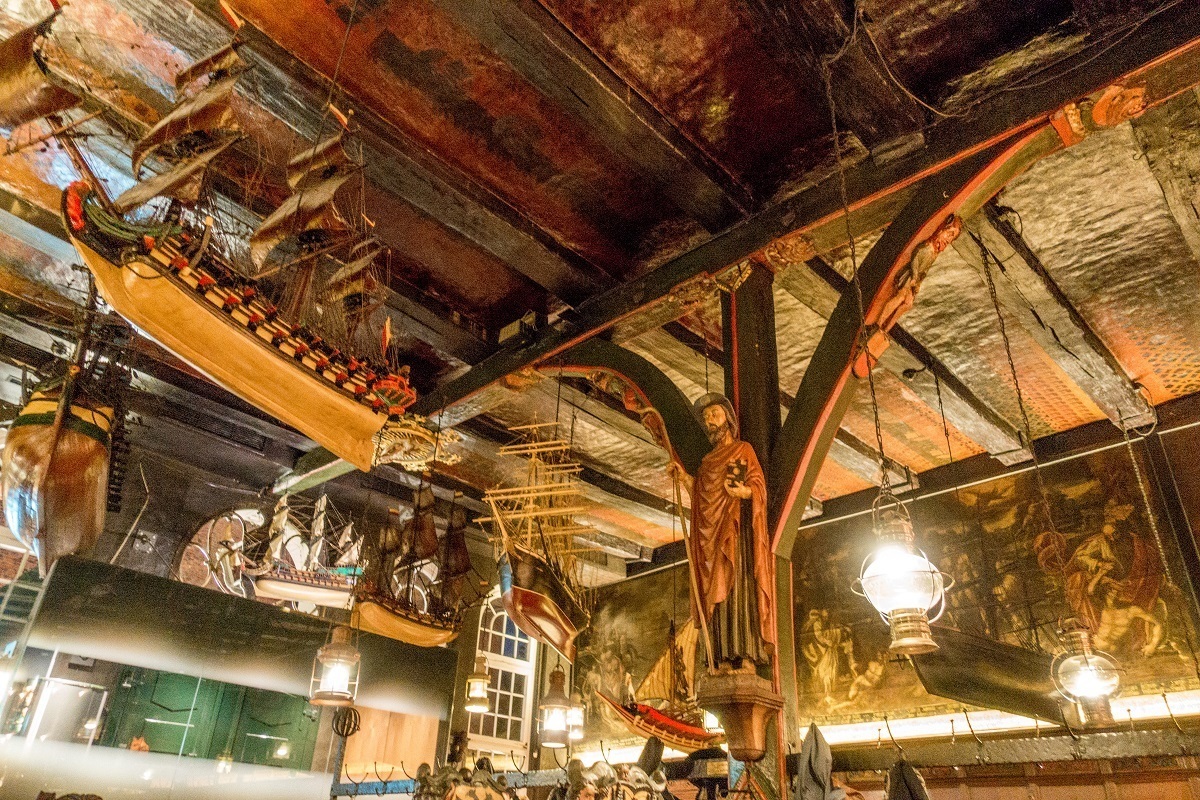
If dining while surrounded by history is your thing (it’s ours), stop by Schiffergesellschaft, probably the most well-known restaurant in Lubeck. The space is filled with model ships, massive nautical paintings, and numerous other ocean-related decorations.
Dating from 1535, the historic building where the restaurant is located was once the home of the Schiffergesellschaft, the Seafarer’s Guild, which explains both the decor and why it feels like another era inside. With its dark lighting and long wooden tables, it’s easy to imagine the meetings that used to take place here.
The food is great (try the fish duet), and the Schiffergesellschaft serves the town’s specialty wine, Lubecker Rotspon, which dates back to the 13th century. Then, Hanseatic League ships sailed to France where merchants bought Bordeaux wine. When they returned home to Germany, the Bordeaux aged in Lubeck’s wine cellars where the taste developed differently than in France. It’s fabulous!
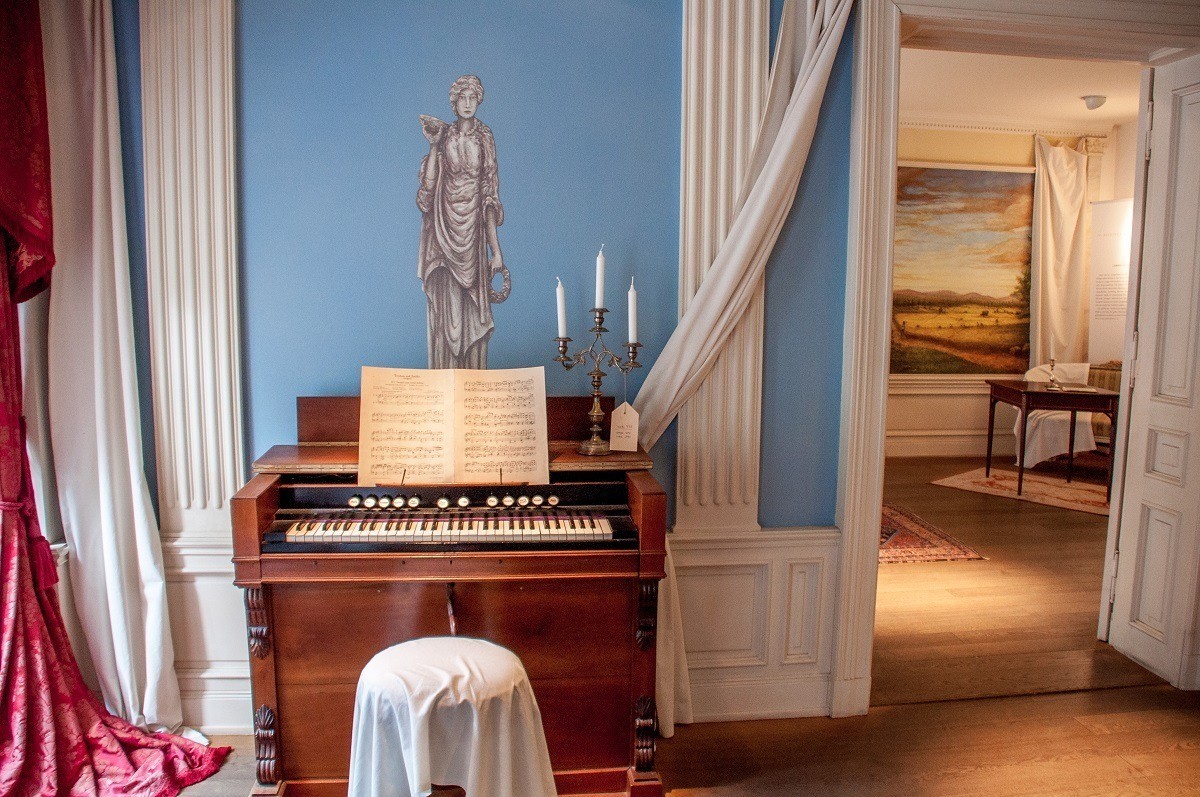
One of the places Lance was most excited to visit was the Buddenbrooks House Literary Museum . The house provides the setting to Nobel Laureate (and Lubeck native) Thomas Mann’s famous book about the Buddenbrooks family.
In addition to bringing Buddenbrooks to life, exhibits at the museum tell the personal stories of Thomas, his brother Heinrich, and the rest of the Mann family, whose relationships were often turbulent. Letters, photos, and recordings leave no doubt about the family dynamics and their talent, and they follow the career of Thomas Mann from struggling author to Nobel Prize winner. The museum presents an interesting story–with Lubeck in the background–whether or not you’re a Mann fan.
We visited Lubeck thanks to the German National Tourist Board . All opinions of brilliant architecture and fabulous food are our own.
Laura Longwell is an award-winning travel blogger and photographer. Since founding Travel Addicts in 2008, she has written hundreds of articles that help over 3 million people a year get the most out of their travel. In that time, she has visited nearly 60 countries on 5 continents, often returning to favorite destinations over and over again. She has a deep love of history, uncovering unexpected attractions, and trying all the good food a place has to offer.
In addition to Travel Addicts, Laura runs a site about her hometown of Philadelphia—Guide to Philly—which chronicles unique things to do and places to see around southeastern Pennsylvania. Her travel tips and advice appear across the web.
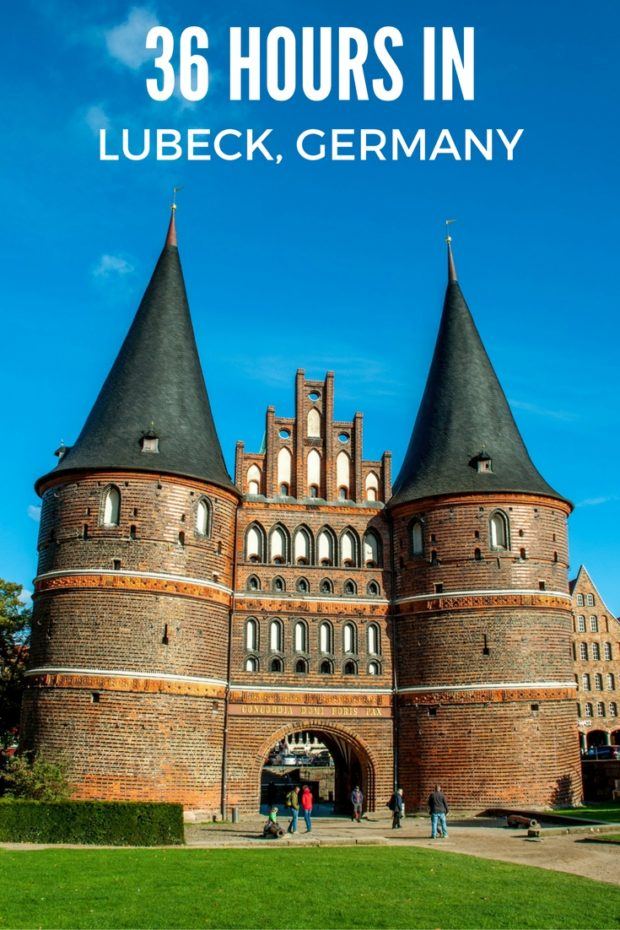
Share this post:
This site uses Akismet to reduce spam. Learn how your comment data is processed .
Cookies on our website.
Do you want analytical cookies, do you want social media cookies.
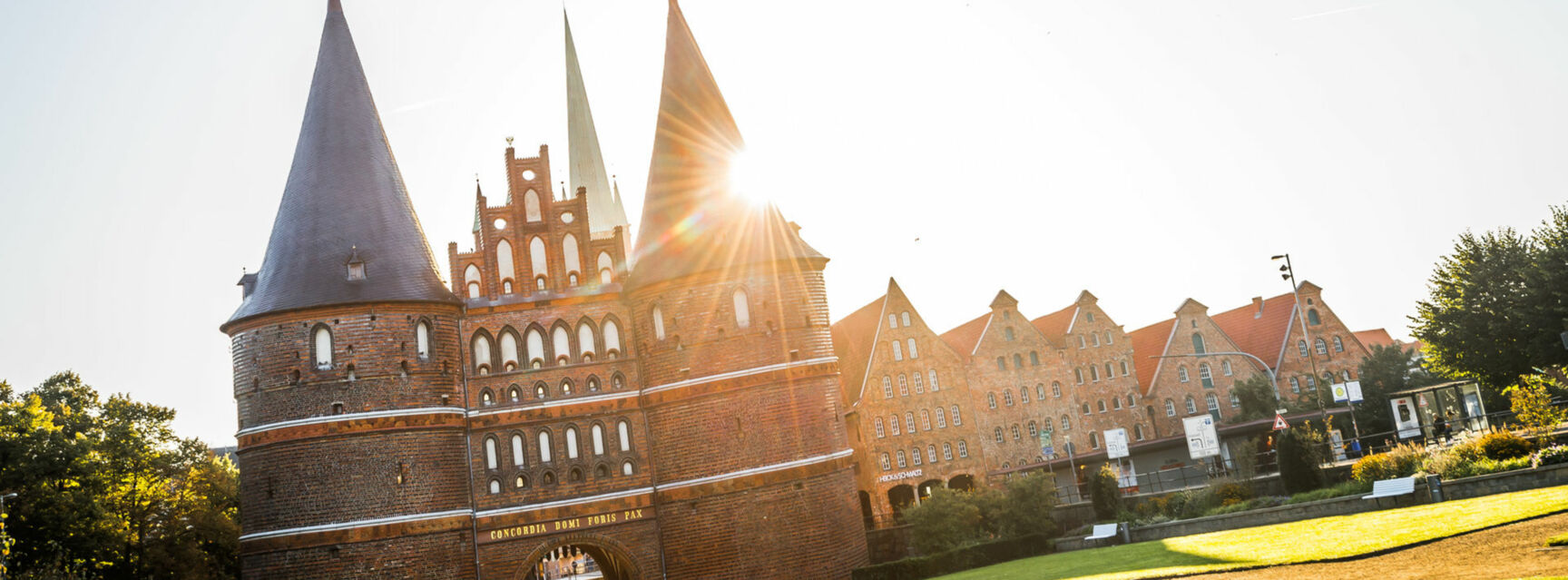
Lübeck: Queen of the Hansa
Directly behind the banks of the river Trave rise the seven spires of the five Old Town churches that have made Lübeck's silhouette famous. The impressive Holsten Gate, landmark of the "Queen of the Hanseatic League", welcomes visitors with its late Gothic facade. The island-shaped Old Town with its unique brick architecture and the hidden oases presents itself with Nordic calmness. Exploring Lübeck's true beauty always means looking behind the scenes. Tucked away in the historic building structure, true museum treasures can be found in the Old Town e.g. St. Anne’s Museum and St. Anne’s Art Gallery, the Museum Behnhouse Drägerhouse and the Hospital of the Holy Spirit. Enter the world of the Middle Ages and immerse yourself in the life of the Low German merchants at the European Hansemuseum. The largest museum on the history of the Hanseatic League tells of the rise, power and fall of the Hanseatic League and shows how much you are still surrounded by it today. And the seaside resort Travemünde is only a stone's throw away from Lübeck's Old Town, with its big ships, fine Baltic Sea beach and unique promenade circuit.
Tourism Webpage
Social Media
Facebook Instagram Twitter
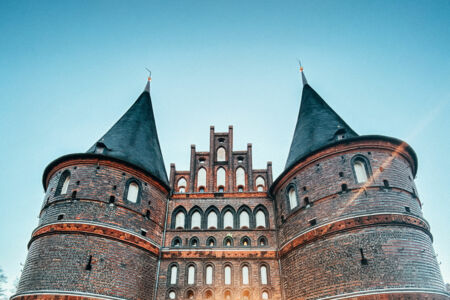
Holsten Gate
The Holsten Gate is Lübeck's famous landmark and imposing portal to the historic Old Town. In the Middle Ages, the Gothic city gate was a symbol of power and an important part of the town fortifications, which were supposed to protect the rich Hanseatic city from attacks. CONCORDIA DOMI FORIS PAX welcomes you in golden letters: harmony inside, peace outside.
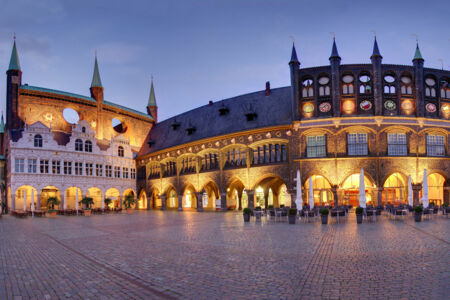
Lübeck Town Hall
Lübeck's town hall is located in the middle of the historic old town and is one of the most famous brick Gothic buildings. Its façade with architectural styles from no less than three centuries is reminiscent of a fairytale castle. During a guided tour of the town hall, the magnificent rococo audience chamber is a particular eye-catcher.
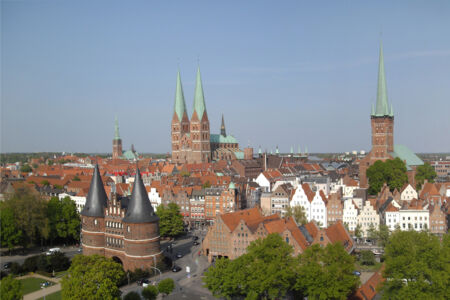
Lübeck Old Town churches
The seven spires of the five large Lübeck Old Town churches characterize the silhouette of the city and gave it the famous surname "City of the Seven Spires". They are brick monuments, which do not remain silent, but can be experienced through church services, organ music, tours of the spires and vaults, readings and discussion evenings.
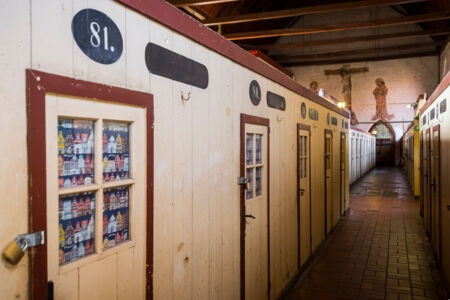
Hospital of the Holy Spirit
The Hospital of the Holy Spirit, completed in 1286, is one of the oldest social institutions in the world that still exist today. With its three-gabled front and four slender spires, the Hospital is an impressive Gothic brickwork monument. Inside, the small living quarters, known as cubbyholes, bear witness to the lives of the needy.
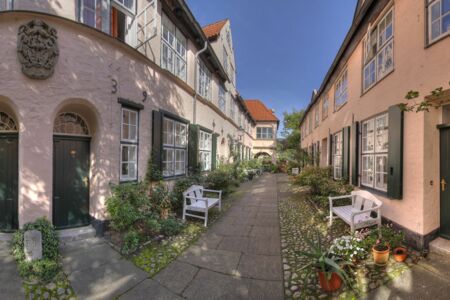
Alleys and Courtyards
The historic residential alleys and courtyards are Lübeck's green havens of tranquility and run through the lively Old Town like a labyrinth. The first booths were built at the beginning of the 14 th century. They are still inhabited today and will enchant you with their idyllic atmosphere, silence and serenity.
Tourist Information Lübeck Holstentorplatz 1 23552 Lübeck +49 (0)451 8899700 [email protected]
Travel options
the biggest ferry port of Europe, ICE-train station, Baltic Sea freeway's A1 and A20, Lübeck airport
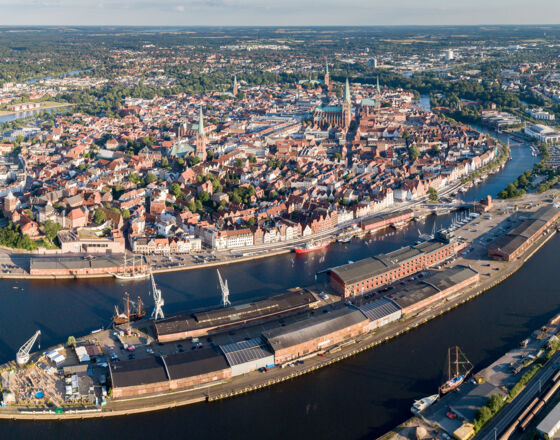
Virtual offers
- Digital offers at European Hansemuseum
- Digitized archival materials Brahms Institute
- Virtual exhibitions Kolk 17

DESTINATIONS
Lovely things to do in Lübeck, Germany: a city guide

Pack The Suitcases uses affiliate links. If you make a purchase through these links, I earn a commission at no extra cost to you. Thanks!
Considering it’s only a small city, there are loads of things to do in Lübeck. In fact, it’s one of Germany’s best-kept secrets in my opinion. Lübeck has a charming old town full of pretty architecture, punctuated by lots of church spires, with the Trave river running alongside it. Lübeck is a UNESCO World Heritage Site, which isn’t a surprise when you see how lovely its historic old town is. There are beautiful cobbled courtyards lined with flowers to explore, not to mention some excellent places to eat and drink. I visited as a day trip from big, bustling Hamburg . Lübeck was just the breath of fresh air you need on a city break.
Lübeck was the capital of the Hanseatic League, which you may have heard of, especially if you’ve been to Germany before. It was a very powerful merchant guild, which started in the 1100s and controlled the maritime trade region from the Baltics to the North Sea for over 300 years. So Lübeck was a really big deal being in the midst of all that.
Lübeck was also known as the ‘City of the seven spires’, obviously due to its amount of churches. And now it’s mainly known for its marzipan, which is one of my most hated substances on earth. But it’s such a gorgeous place that even the slight stench of marzipan didn’t put me off.
With all that in mind, here are the things to do in Lübeck that I really enjoyed and would recommend…

1. Explore the Altstadt
Lübeck’s Altstadt (old town) should be your first place to wander and get a feel of the city. You’ll find rows of merchants’ houses and former warehouses, harking back to the Middle Ages when Lübeck was an important trading hub. The good thing about these in the modern day is that they’re beautifully ornate and picture-perfect.
The old town has the Trave River flowing on all sides, the perfect backdrop to its pretty half-timbered houses. Strolling around and taking it all in is definitely one of the best things to do in Lübeck; it’s like being in a living museum. You can easily cover it in an hour or so.
It really reminded me of Bruges, but without the annoying crowds and overpriced cafés.

2. Check out the magnificent Holstentor
The Holstentor is a massive OTT brick-built gate, which acts as the grand entrance to Lübeck’s old town. It’s an iconic landmark known all over Germany and very distinctive looking. You’ll naturally pass through it if you arrive in Lübeck by train.
Lübeck once had four of these big medieval gates but only this and another (less exciting) one remain. It was built between 1464 and 1478 but has since been rebuilt twice. Despite all that building work, you’ll notice it’s sort of sagging in on itself. Even German engineering can’t fight subsidence. But it makes it all the more quirky and endearing IMO.
Inside the Holstentor is a small museum about Lübeck’s history, which would be a good rainy day stop-off. It’s 7€ to get in (at the time of writing). Check opening times at the Holstentor museum website ; I don’t want to write them here in case they change.

3. Discover the magical hidden courtyards
Of all the things to do in Lübeck I’m recommending here, this is my favourite. I can’t resist a pretty cobbled courtyard lined with flowers and nice doorways, so I was chuffed when I read about them being a big thing in Lübeck. And I wasn’t disappointed. I only wish we’d got there earlier in the day as by the time we started exploring them we were losing the light with it being winter. That’s my excuse for disappointing photographs, anyway.
You can find many of the courtyards in Kober, the northern area of the Altstadt. Look up Engelswisch, Engelsgrube, and Glockengießerstraße on your maps. There are also some further south around the cathedral. Look out for Glandorpshof and Füchtingshof: the latter was used in the 1920s silent horror film Nosferatu .
The courtyards were where tradesmen and artisans lived in medieval times. From the outside, they don’t look that exciting. You go down little arched alleyways between buildings on main roads, through iron gates. But they then open into these hidden beauties. You’re met with pretty timbered houses, colourful benches, cobbled paths and loads of tiny gardens and windowboxes overflowing with flowers.
Apparently, there are almost 90 courtyards and passages like this in Lübeck. I think we only went down about four of them but they were all stunning to the point where I filled my camera’s SD card at an alarming rate.
Obviously, you need to bear in mind that the houses are people’s homes. Respect their privacy when you’re having a full-on Instagram photoshoot.

4. Admire the gabled houses along the beautiful An der Obertrave
While you’re exploring the courtyards, you’ll naturally find yourself walking along An der Obertrave, a promenade next to the River Trave. It’s only a 10-minute stroll from one end to the other, but it’s well worth following to the end.
The way is lined with absolutely stunning listed houses with really ornate gables. Some of them are brightly coloured and it’s all very ‘chocolate box’. Stop off at one of the many cafés with outdoor seating if you have a nice day for it.

5. Buy some famous Lübeck marzipan from Niederegger
Despite my hatred of the stuff, no list of things to do in Lübeck would be complete without including marzipan.
Lübeck is the marzipan capital of the world. Its marzipan is special because the city has some unwritten rules about its quality, including a high almond % and low added sugar. It’s even controlled under EU law as a Protected Geographical Indication food , which means it can’t be made anywhere else. Impressive stuff.
There are plenty of places around the city to sample it. But Niederegger on Breite Strasse in the old town is probably the most famous. It’s been marzipanning away since 1806 and is renowned for its artistic creations. It even exports to John Lewis and Waitrose, so my UK readers will get the picture. If you have a weird friend who loves marzipan, they’re going to be thrilled if you bring them home something from Niederegger.
Niederegger’s shop facade and windows are a sight to behold. It’s like if Hansel and Grettel opened their own business. Inside, you can peruse every kind of marzipan in all sorts of shapes. There’s the traditional handpainted (very realistic) fruit and veg but also unique little animals and a strange amount of Christmas-themed things. Germany bloody loves a bit of year-round Christmas, doesn’t it? Even if you can’t stand eating the stuff, Niederegger’s shop is fascinating to look around. Just be prepared for the overpowering smell.
Upstairs is a cafe, where you can have a hot drink and some marzipan-based cakes/pastries. On the second floor, there’s even a marzipan museum (free entry). It offers an insight into Niederegger’s history and has some terrifying life-size marzipan figures on display.

6. Have a beer at Paulaner am Dom
Although Paulaner isn’t my all-time favourite German beer (that title goes to Augustiner, also of Munich ), a pint of Paulaner is always worth a detour for. Even if you’re in Lübeck, miles away from Paulaner’s home in Bavaria. It’s probably sacrilege not to have a local beer from around Hamburg, but sometimes rules are made to be broken. I’m over it.
We spotted Paulaner am Dom when we were at the brink of freezing to death in the early evening and it was a perfect, cosy stop off for a drink before our evening meal. It does food too, the usual hearty German meaty fare but I noticed that even a Bavarian beerhouse now has a handful of vegan options (we’re getting there!).
It’d be great in summer as it’s got a beer garden and there’s nothing better in Germany than a beer garden on a sunny day. Bliss.

7. See the stained glass windows of death at St Mary’s Church
Now I’ve lured you in with that irresistible heading, let me expand.
St Mary’s is apparently Germany’s third-largest church (who measures these things?!). It was built between 1250 and 1350 and became the template for lots of other brick-built Gothic churches in the Baltic region. It’s massive inside and has the highest vaulted brick ceiling in the world, at 40 metres. Another very specific claim, but this is actually pretty impressive to see.
One of the most unique things in St. Mary’s is its stained-glass windows. These aren’t that old in the grand scheme of things, only installed in the 1950s. But they’re interesting because instead of the biblical scene or pretty pattern you’d usually find on a stained-glass window, they show some creepy depictions of dancing corpses and skeletons. This is a version of the ‘danse macabre’ motif, which dates back to the Middle Ages. It represents the idea that, in the end, death unites us all. Cheerful stuff, eh?
On an even less cheery note, another sight to see in St Mary’s is the broken bells. During an air raid in 1942, the church was hit and set alight. Most of its interior was lost in the fires, and the two bells in one of its towers fell over 100 metres down from the roof. Although everything else has been restored, the bells were left where they shattered. They’ve become a memorial to WW2 and a symbol of Lübeck.
St. Mary’s Church is 2€ to get in. Check opening times on its official website , as they do change throughout the year. You might want to time your visit for just before noon, when its astronomical clock does its thing. It isn’t quite as fancy as Prague’s astronomical clock, but it’s worth viewing.

8. Meet the little Lübeck devil just outside St Mary’s Church
Legend has it that, in the 13th century when they were building St Mary’s, the devil popped into the building site to see what was happening. He asked the builders what was going down. They were scared to say that it was going to be a church. Fair enough I suppose. So they lied and told him it was going to be a wine bar, which is quite amusing when you consider how many old buildings are now trendy wine bars in the 21st century. Anyway, the devil was really into the idea of a wine bar. He loved getting dressed up and heading #outout on a Friday. In fact, he was so excited that he decided to help with the construction.
When the basilica was nearly finished, the devil cottoned on to the fact it wasn’t a wine bar. He was obviously fuming, not being a big fan of churches and seeing his new weekend haunt go down the drain. He was all geared up to lob a big slab at the church to flatten it, but one of the builders stopped him by promising to build a really trendy wine bar nearby. The devil calmed down, dropped the slab, and agreed that was fair enough.
The slab still remains at that spot. It has scratches on it that are meant to be the devil’s claw marks. In 1999, the artist Rolf Goerler provided a bronze statue of the devil to sit on the slab. He’s looking chuffed because the builders kept their word. To this day, you can go for a drink in the Ratskeller, the town hall’s wine cellar, just across the road from the church.
A happy ending all round. Cheers to that.

9. Visit the Rathaus (town hall)
It wouldn’t be a trip to a German city without a bit of Rathaus action, would it?
Lübeck’s town hall dates back to the 13th century and is a beauty. You can do a guided tour inside it, but they only do the tour in German. I didn’t bother, and I generally prefer looking at the facade of buildings rather than the interior.
The Rathaus is built with a collection of other pretty buildings surrounding a central courtyard. There are cafés and restaurants on the ground floors and street artists performing in a bustling atmosphere. Really nice. I bet it’d be a treat at Christmas. It’s just opposite the Niederegger marzipan shop, too.

10. Look round the European Hansemuseum
As I mentioned in the intro to this post, Lübeck was at the helm of the Hanseatic League. The European Hansemuseum is a fairly new museum (opened 2015) dedicated to all things Hanseatic. It features exhibits on various maritime things like piracy, plague, trade boycotting, power struggles, and the movers and shakers involved. I won’t lie to you, although it’s interactive, it involves a lot of reading to get the most out of it. If you’ve got decent weather, you probably won’t want to spend ages lingering over every feature in the museum and might have to speed up your visit. It’s a great rainy day activity though, where you could easily spend an hour or two.
The European Hansemuseum costs 13€ to get in. Check the official website for opening times.
11. Eat delicious seafood at Fangfrisch
I’d researched ahead of our trip to Lübeck where we could eat. As we don’t eat meat/cheese, researching ahead in Germany is vital to avoid an avalanche of pork knuckle.
I’d narrowed down the options to Fangfrisch , a little seafood restaurant on An der Obertrave. I reserved a table, which is always wise in Germany because they do love booking and being organised, and I was so glad I did. This was one of the best places I’ve eaten on my many (many!) visits to Germany overall. We still talk about it now, a few years later.
Fangfrisch is beautiful inside, with metro tiles, rustic wooden tables, exposed brick and pendant lighting. But despite how Instagrammable it is, it’s 100% not style over substance. The food was all brilliant. We had crispy scampi and chips and some of the nicest salmon I’ve ever had.
I really enjoyed the food in Hamburg too (where we were based for the week). But this was one of the stand-out meals of this trip.
Side note: I apologise for the crappy photographs that don’t do this lovely restaurant or its food justice. My camera was unhappy with the cosy lighting! And I was too hangry to fiddle with its settings before eating.

12. Learn about Lübeck’s famous author, Günter Grass, at his house
I must admit I didn’t have any idea who Günter Grass was before going to Lübeck. Well, I’d heard of his novel The Tin Drum . But that was about all. However, as a former English Lit student and an avid reader (and the fact it was freezing cold), I felt like it would be a good use of an hour to go into Grass’s museum and learn a bit more about him (and warm up for a bit). Turns out it was actually really interesting. Grass was one of the most important political writers of his day, and won the Nobel Prize for literature in the 90s.
Like any author-based museum, there are plenty of manuscripts and the typewriter on which he wrote. But Grass was also an artist and sculptor. So the museum also houses his lesser-known artworks, including some paintings and sculptures. There were also exhibits from other authors and artists, which made it a bit more varied. You can browse a small gift shop on site and buy a copy of one of Grass’s works if you’re inspired. I left having added The Tin Drum to my ever-growing reading list.
The Günter Grass Haus museum was 7€ to get in. Check opening times on the official website.
13. Try some craft beers at Brauberger
Brauberger zu Lübeck was the only place I could find in my pre-visit research that did craft beer – the hoppy IPA-type stuff – so we hunted it out for an early evening drink.
It’s unusual to find somewhere brewing its own craft-style beer in Germany, rather than the more traditional beers. Germany has something called the Reinheitsgebot, a set of regulations limiting the ingredients allowed in brewing, which was enshrined in law until the 90s and is still followed by a lot of beer producers. This means they do extremely high-quality traditional beers but don’t do quite as many of the hoppy American ones as some countries.
So it’s interesting when you find somewhere making them and doing it so well, like Brauberger. Definitely worth going to sample its excellent craft beer if you’re in Lübeck and want something different from generic mass-produced stuff.
14. See the unusual half-tower house
I love an unusual building and this is one of the strangest, but prettiest, I’ve spotted on my travels. It’s a leaning half-timbered house (dating back to 1672) which is built into a bit of semi-derelict Medieval wall that features half a tower. There’s a lot going on here! The original architect built it like this, rather than it being a modern thing, which makes it even more appealing in my view. Despite it being a mad bit of design, it works.
You can find it on the street An der Mauer, which translates as ‘On the wall’, naturally. Here’s a Google maps link for you to get to it. The Medieval wall once stretched along this whole street, so you can imagine how impressive it once was.

15. Find out all about puppets
I always enjoy an unusual museum and Lübeck’s Theaterfigurenmuseum (puppet museum) is something I’ve never seen anything like before. Set in a beautiful Medieval brick building, it’s home to a collection of puppets and props from all around Europe and the world. For a small museum, it packs a punch.
Fritz Fey, a puppeteer, put the collection together originally. He’s managed to find all sorts. There are also stages and posters that relate to the puppet theme. There’s a lot of genuinely interesting information on traditions of puppetry from around the globe, such as Indian legends and Chinese tales.
Please note that at the time of writing, the puppet museum is closed for renovation. Visit the official website to check whether it’s reopened yet. And let me know in the comments if you spot that it has so that I can delete this line!
16. Take in the city views from St Petri Church’s tower
St Petri is no longer a working church, instead serving the city as an exhibition space. If you’re in Lübeck at Christmas, it hosts a little arts and crafts market, which sounds good. The church’s interior is simply an empty space with white walls, which gives it a very contemporary feel and means that the regular art exhibitions it now hosts are showed off beautifully.
Like much of Lübeck, it was badly damaged in WW2, which is why it’s nothing like how it used to be. However, the tower has been rebuilt so that visitors can go up it (there’s a lift so no climbing!) and enjoy panoramic views of the city from a 50-metre-high viewing platform. It costs 4€ each. Well worth it. The view is spectacular, particularly in good weather when apparently you can see as far as the Baltic Sea. It wasn’t quite clear enough when I was there, but beautiful nonetheless. The birds-eye view gives you a really good feel for how the old town of Lübeck is laid out. I’d recommend visiting as the sun is starting to go down, for some perfect photographs with a golden glow.

Things to do in Lübeck, Germany – useful information for your trip
Where to stay in lübeck.
I only did one day in the town as a day trip from Hamburg (which is also deffo worth a visit) but you could stay overnight to do a bit more around Lübeck and to see it first thing in the morning. You might even get a beautiful courtyard to yourself for a bit. I’ve done a bit of research into where I’d recommend staying. Prices are all accurate at the time of writing but do double-check before you book. Here are three options that I like the look of:
- Treat yo’self: If you’re splashing out, I’d go for Fisher’s Loft Hotel . At around 165€ a night, this is a real splurge by my book. But it’s stunning. I love the industrial-style decor. You’re right in the middle of the old town so the location couldn’t be better.
- Mid-range: If you’re like me and somewhere in the middle when it comes to spending/saving on accommodation, you’ll like Atlantic Hotel . It’s around 138€ a night, so a little more than I’d normally spend, but look how nice it is. Really good-sized rooms and a great location.
- Budget: If you’re not keen to spend loads of money on accommodation, I would go for B&B Hotel Lübeck . It’s a bargainous 65€ a night for a functional and modern room, and it’s handy for the station.
How to get around Lübeck
It’s entirely walkable. Sometimes with walkable cities, it’s still worth looking into buses to save a bit of time, but with Lübeck you’re fine on foot.
When to go to Lübeck
I went in late October/early November. It was unseasonably cold, even for that time of year, but I’d still recommend it for an autumn or winter city break. There’s plenty of indoor stuff to do and cosy places to eat/drink.
Save and share: Some lovely things to do in Lübeck, Germany
If you enjoyed this blog post on 16 things to do in Lübeck, Germany, why not hover over one of the images below and pin to your Pinterest board? (Desktop only).

You might also like my other posts about Germany:
- Munich in October: the best autumn city break
- A guide to Landsberg am Lech: a fairytale German town
- How to spend 2 days in Hamburg
- Where to stay in Hamburg
- How to do a Copenhagen to Hamburg train-ferry adventure .
And if you’ve used one of my travel guides and enjoyed it, you can also buy me a drink . Cheers.
Share this post
You may also like
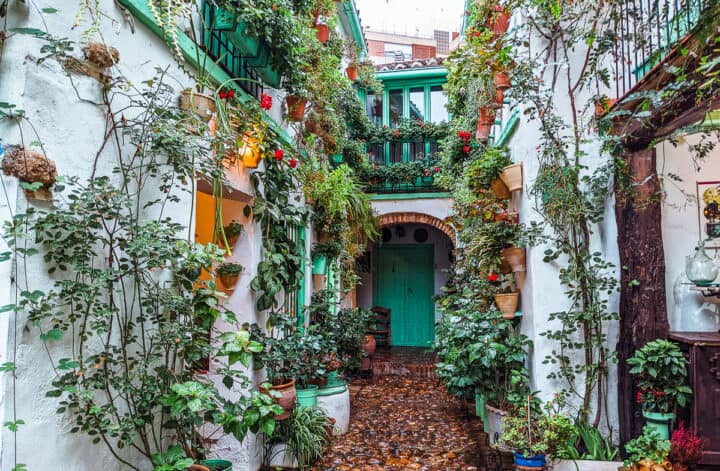
22 things to do in Córdoba, Spain: the Andalusian city of flowers

How to watch sumo in Tokyo, Japan

38 things to do in St Petersburg, Russia
13 comments.
I love this post! This is now on my to go to places 😍
What a great guide! That devil outside the church is the happiest depiction I’ve seen! 😉
How gorgeous is this place! Love your description of the devil story and the trendy wine bar ahahaha xx
Wow, I’ve never even heard of Lubeck before but it looks so pretty! Holstentor looks spectacular! What a lovely place to explore and admire the incredible architecture! Thanks for the great guide!
I’ve never heard of Lubeck before. It looks so magical! Definitely putting this on my list.
What a fun post! I can’t believe I’ve never heard of Lubeck before. The old town looks so charming, and it would be so cool to see the half tower house in person!
What a pretty place. Would love to explore. Great post!
I love how medieval this city still looks – definitely adding it to my list of places to visit in Germany!
This looks amazing, what a great little place. I love small cities like this and exploring the historical looking areas like the old Town. The Holstentor is beautiful. And I definitely would want some Paulaner as it is my favorite beer
I love charming German cities like this. So beautiful! 🙂
I’ve been to Germany several times and never heard of this place! Adding it to the list to visit, post-pandemic.
Thankfully the town avoided serious damage during WWII so all those wonderful buildings survived.
Leave a reply Cancel reply
This site uses Akismet to reduce spam. Learn how your comment data is processed .

Germany Travel Guide
Lübeck Germany: 1-day Itinerary and Map
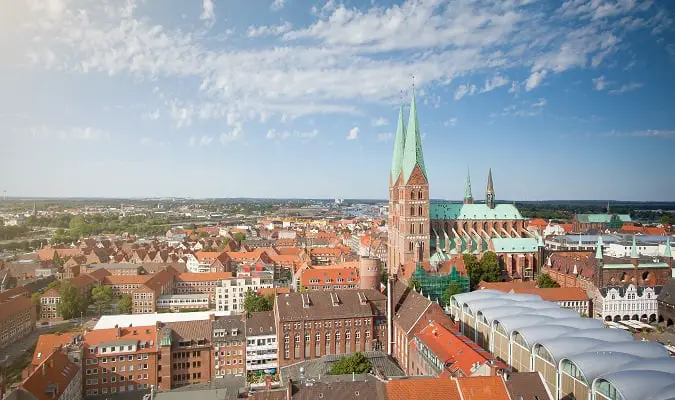
Lübeck is a city in Germany located in the state of Schleswig-Holstein . The old town center ( Altstadt ) has maintained its medieval appearance with old buildings and narrow streets.
In the past, the city could only be accessed through four gates, and, two of them, the Burgtor and Holstentor still exist.
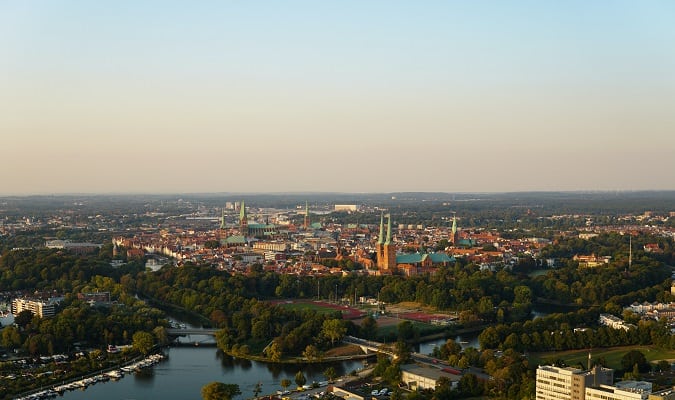

How to spend 1 day in Lübeck Germany
In this 1-day itinerary in Lübeck , discover the main attractions of the city.
Day 1 in Lübeck
Start the day by visiting Holstentor , one of the city’s main attractions and symbol. It is a medieval gateway and today houses a museum dedicated to the city’s history.
Near the Holstentor is the Petrikirche , built between 1227 and 1250 and expanded in the 15th and 16th centuries. From its observation platform, visitors can enjoy a magnificent view of the city.
Head to Lübeck Cathedral , one of the oldest monuments in the city. 900 meters (0.5 miles) from the cathedral is Lübeck City Hall ( Lübecker Rathaus ), one of the most beautiful city halls in Germany .
220 meters (0.1 miles) from the town hall is Marienkirche , the third-largest church in Germany and St. Jakobi is 450 meters (0.3 miles) away.
Be sure to take a walk along the Trave River and also visit the Café Niederegger and try the famous “ marzipan ”, located in front of the city hall.
Things to see
- Petrikirche
- Lübeck Cathedral
- Lübecker Rathaus
- Marienkirche
- Café Niederegger
Day 1 Itinerary Map
Sights in Lübeck
1. holstentor.
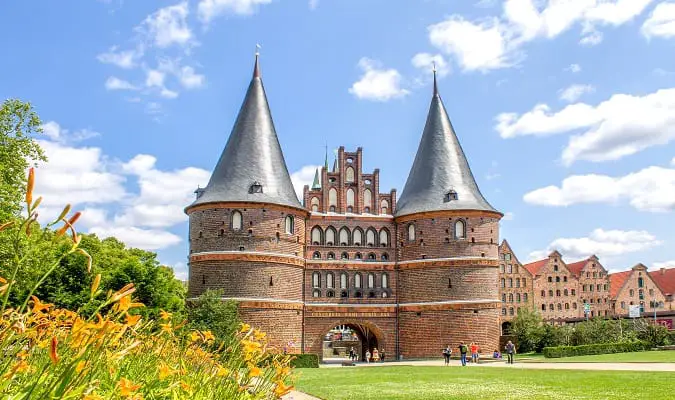
The Holstentor is a symbol of Lübeck and one of the main attractions.
Holstentorplatz, 23552
2. Petrikirche
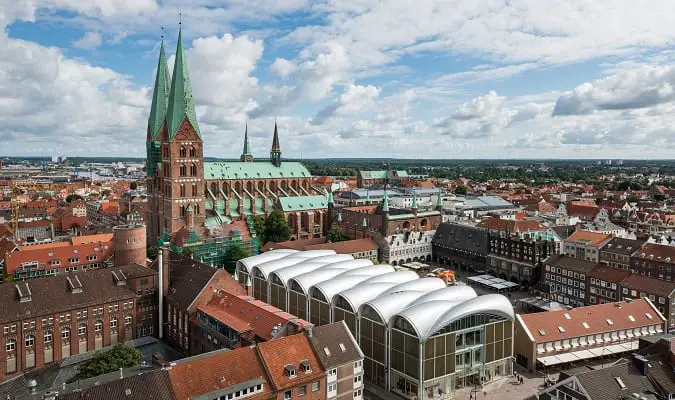
The Petrikirche was built between 1227 – 1250 and enlarged in the 15th and 16th centuries.
During World War II the roof of the church was destroyed. The reconstruction was completed in 1987.
The Petrikirche is no longer used as a church but rather as a vibrant center for events and exhibitions.
From its observation deck, visitors can enjoy a magnificent view of the city.
Petrikirchhof, 23552
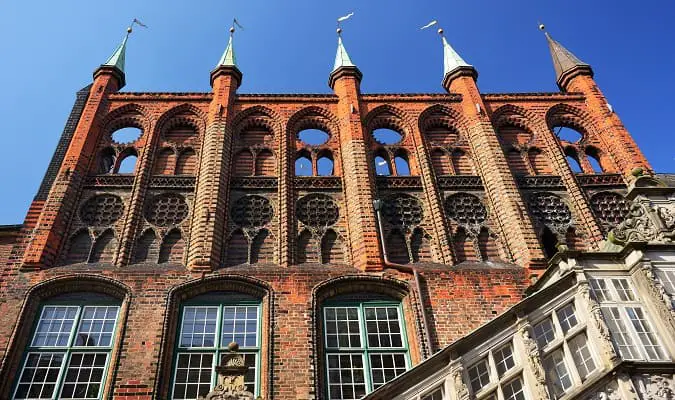
The Lübecker Rathaus is one of the most beautiful town halls in Germany .
Breite Str. 62, 23552
4. Marienkirche
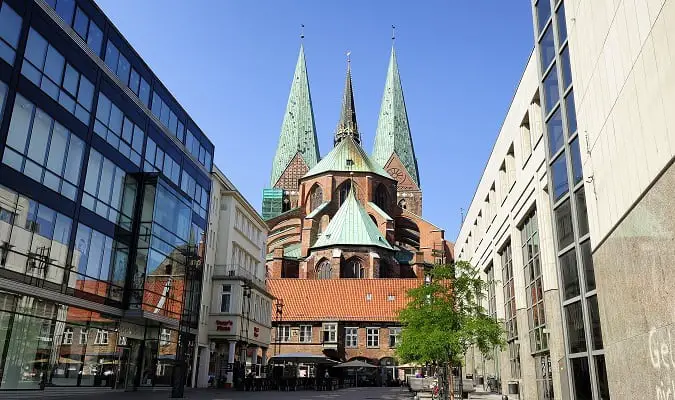
The Marienkirche is the third-largest church in Germany . Numerous works of art can be found inside the Marienkirche .
Marienkirche, 23552
5. Lübeck Cathedral

The Lübeck Cathedral is one of the oldest monuments in the city.
During World War II it was partially destroyed by airstrikes. The reconstruction of the church took several decades and was completed in 1982.
Mühlendamm 2-6, 23552
6. Aegidien
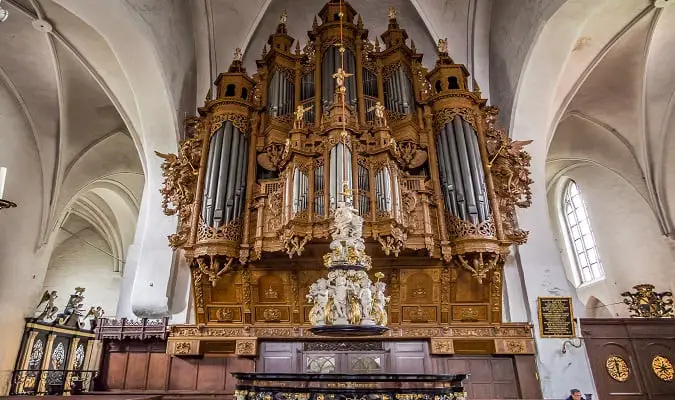
The Aegidien is the smallest of the 5 main churches in the historic center of Lübeck .
It is decorated with Gothic wall paintings and elements from the Baroque period and the Renaissance period.
Aegidien, 23552
7. Buddenbrookhaus
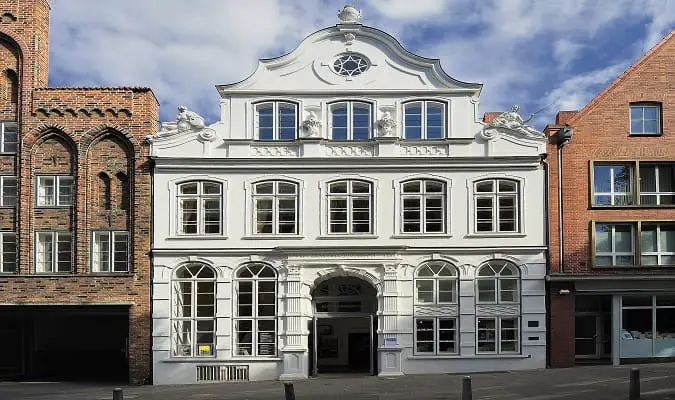
The Buddenbrookhaus is dedicated to Thomas Mann and the novel “ Buddenbrooks “, published in 1901 when he was 26 years old.
The second publication in 1903 “ Buddenbrooks ” became a great literary success and led Mann to a Nobel Prize in Literature in 1929.
Mengstraße 4, 23552
8. Altstadt
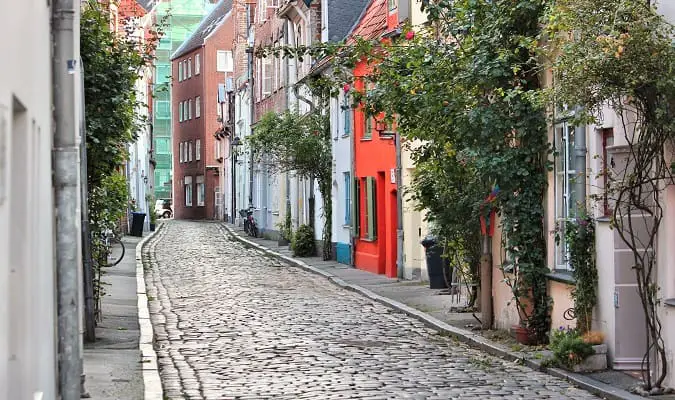
Taking a tour and exploring the alleys and courtyards of the old town of Lübeck is like going back to the Middle Ages.
9. Café Niederegger
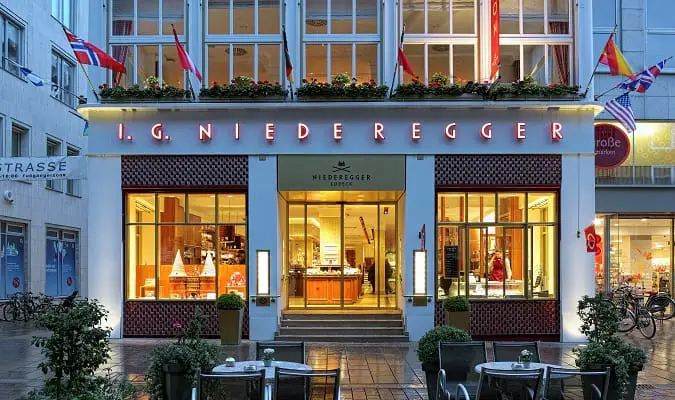
The Café Niederegger is located in front of the City Hall . In the hall of the “ marzipan “, you will be able to discover how this delicacy of Lübeck is made.
Breite Str. 89, 23552
10. St Jakobi
The St Jakobi was built in 1334 and suffered no damage during World War II.
A lifeboat is dedicated to the wreck of the boat “Pamir” in 1957. It is located in the north tower of the chapel.
Jakobikirchhof 3, 23552
11. Burgkloster
The Burgkloster is the most significant medieval monastery in northern Germany .
Hinter der Burg 6, 23552
Where to stay in Lübeck
1. radisson blu lübeck.
The Radisson Blu Lübeck is located 4 minutes from the Holstentor .
Rooms are equipped with a flat-screen TV, safe, and minibar.
W illy-Brandt-Allee 6, 23554 Lübeck, Germany
2. Hotel H+ Lübeck
The Hotel H + Lübeck is a 4-star hotel located near Central Station and offers excellent value for money.
The hotel has 96 modern rooms equipped with a flat-screen TV, and safe.
Am Bahnhof 12-14, 23558 Lübeck, Germany
3. Hotel Anno 1216
Located in one of Lübeck’s oldest brick buildings , Hotel Anno 1216 offers a historic atmosphere and modern design.
Rooms have a TV, minibar, and tea and coffee-making facilities.
Alfstraße 38, 23552 Lübeck, Germany
Shopping in Lübeck
1. karstadt lübeck.
Karstadt is a German department store chain with many stores in Germany .
The company features brands like Cacharel, Clarins, Coach, Desigual, Estée Lauder.
Königstraße 54-56, 23552
2. Haerder Center Lübeck
The Haerder Center Lübeck is located at the intersection of the main shopping streets of Breite Strasse , Holstenstrasse, and Königstrasse .
Brands: Essanelle, Fexcom, New Yorker, Pandora.
Königstraße 84-96, 23552
Plan your Trip
Lübeck has easy train access from various cities in Germany . Famous cities nearby: Hamburg , Schwerin , Bremen , and Kiel .
Hamburg – 67.6 km (42 miles)
Schwerin – 72.2 km (44.9 miles)
Bremen – 180 km (112 miles)
Book a Train Trip
Lübeck Germany Map
Book your trip, book your accommodation.
Book your hotel with Booking.com as they consistently provide the cheapest and lowest rates.
Book Your Flight
Find cheap flights to Germany by using Momondo . Momondo is a flight search engine that searches a lot of different airlines, including many budget carriers.
Book a Train Ticket
Check the train routes and schedules with Omio . Omio is an authorized Deutsche Bahn ticket seller, which compares and combines transport options for complete flexibility.
Don’t Forget Travel Insurance
Travel insurance will protect you against illness, injury, and cancellations. It’s a protection in case anything goes wrong. You can book your travel insurance with Travelexinsurance.com .
10 Suggested Itineraries for Germany + Top Destinations
Outlets & Department Stores in Germany: Shopping Guide
40 Popular Train Routes in Germany
German States Map
German States and Regions
a travel blog by renata green
LUBECK – a guide to Germany’s most ravishing city
Posted on 2020-05-02 2022-11-20 Author Renata Green 46 Comments
Somehow Lubeck, Germany’s most ravishing city, has always reminded me of Venice . An innocently cute and relatively small city that used to possess such political influence and economic power – reaching all over Europe and beyond.

Although Lubeck has incredibly beautiful buildings and alleys, seven church towers, three Nobel prize winners and world-famous marzipan, it does not suffer from destructive over-tourism. I don’t want to change that, however, I’d like to show you around one of Germany’s most ravishing cities.
Lubeck, Germany’s Most Ravishing City
“It’s the Venice of….” is an over-used reference as soon as a place has a creek and a gangplank. This is not the case with Lubeck – although the city center is an island between two rivers, and there are bridges alright.
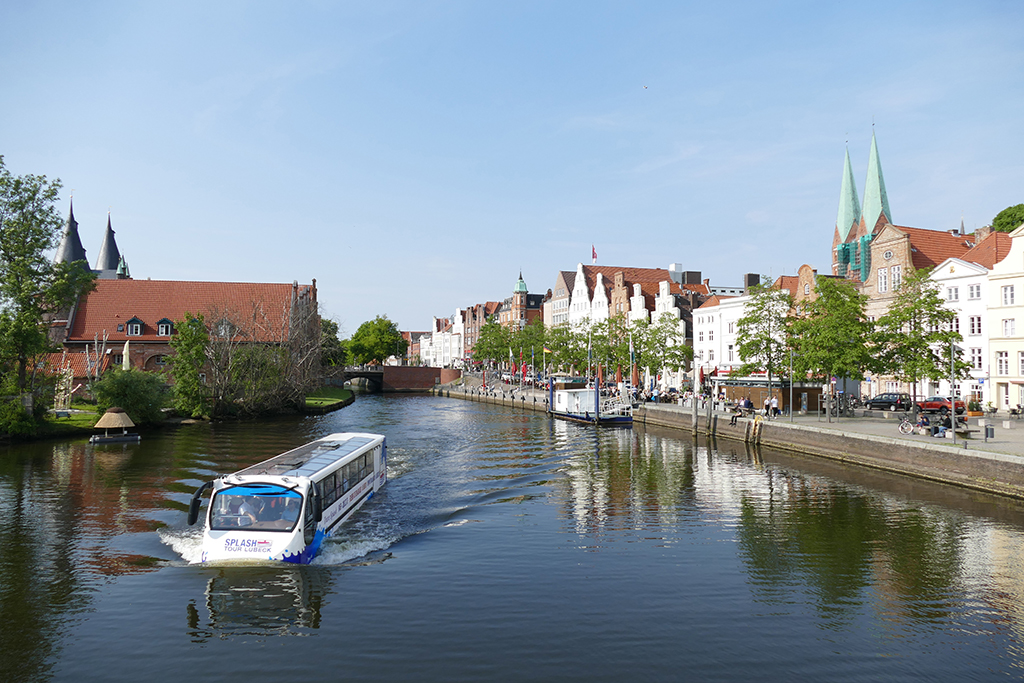
No, my reason for comparing Lubeck to Venice is based on the phenomenon that a relatively small city can possess such a political influence and economic power all over Europe and even across the seven seas.
Also, historically, this comparison is not that farfetched, as you’ll see below.
Lubeck was the Hanseatic League’s number one city. It has two city gates, was home to three Nobel prize winners and four martyrs. Lubeck was considered one of the five Glories of the Empire , there are six ancient salt warehouses, seven spires are designing the skyline…. and counting .
Günter-Grass-Haus
Tourist info, pinnable pictures.
Lubeck’s everpresent beauty, its stately mansions, and monumental buildings are stemming from the former commercial power and immense wealth.
In 1159, merchant circles installed the Hanseatic League to maintain the guilds’ economic interests, diplomatic privileges, and protect the trade routes. It was the powerful Henry the Lion, Duke of Saxony, and Bavaria, who made Lubeck great. Little by little, the League grew along the coasts of Northern Europe.
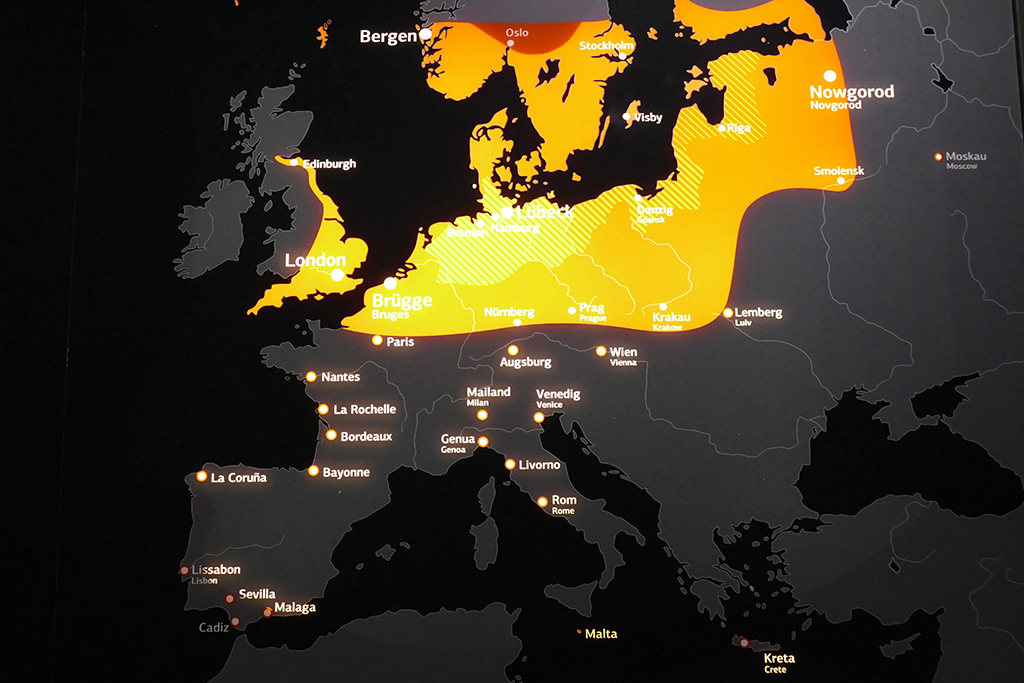
Lubeck is the Mother or the Queen of the Hanseatic League and was consequently the most important trading city in northern Europe during the Middle Ages.
Having access to the Baltic as well as to the north sea, Lubeck needed salt to preserve the catch and imported this white gold from the salt mines around Lüneburg, a town located south of the Hanseatic city of Hamburg . While today, the ride between Lüneburg and Lubeck takes about 90 minutes, in the 13th century, they had to travel the salt-trade route for weeks.
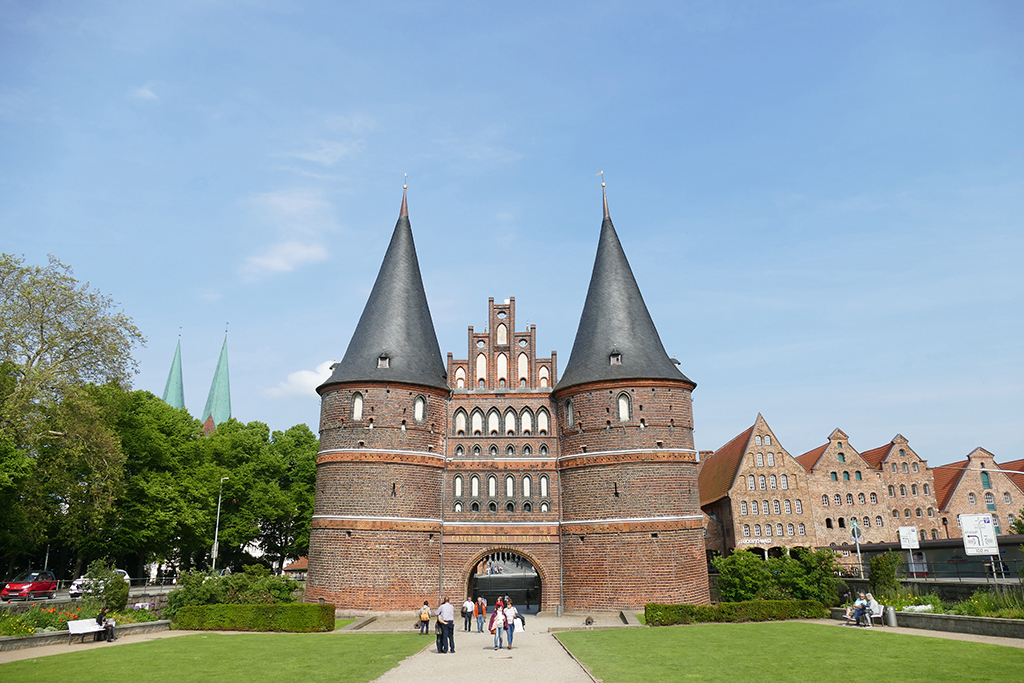
In the 14th century, Lubeck was the Holy Roman Empire’s third-largest city after Cologne and Magdeburg. It was Emperor Charles IV who named Lubeck one of the five Glories of the Empire in 1375, a title shared with Florence , Pisa, Rome , and…. Venice !
The European Hansemuseum
The best way to learn in an informative yet very entertaining way about the heyday of the Hanseatic League is a visit to the fantastic European Hansemuseum on the city centers northernmost tip.
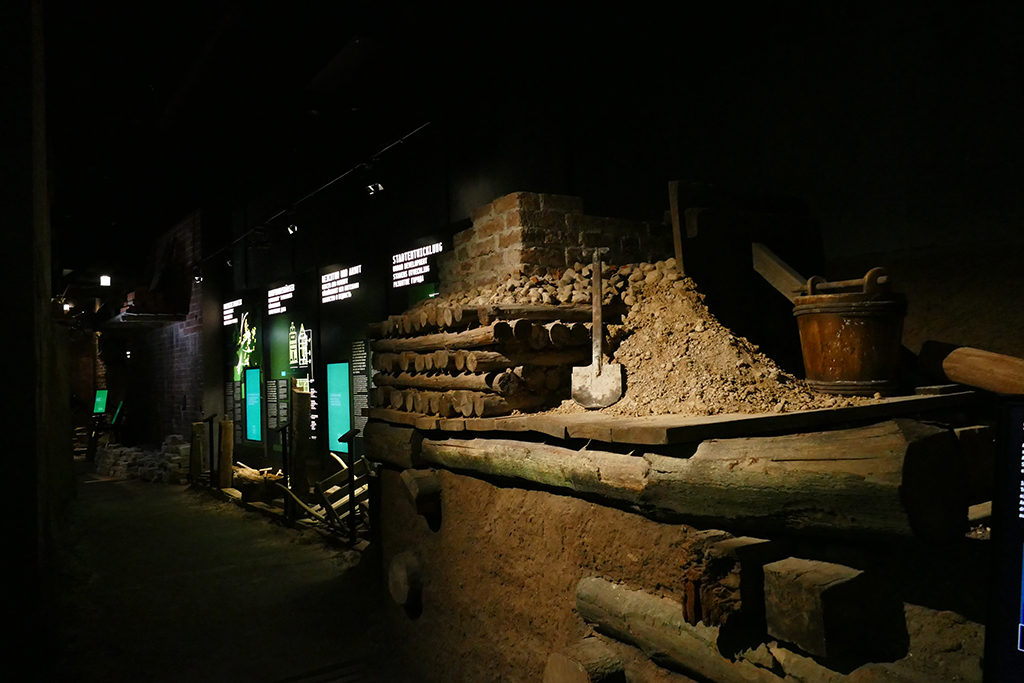
Opened in 2015, it informs on each and every related topic on more than 7000 square meters.
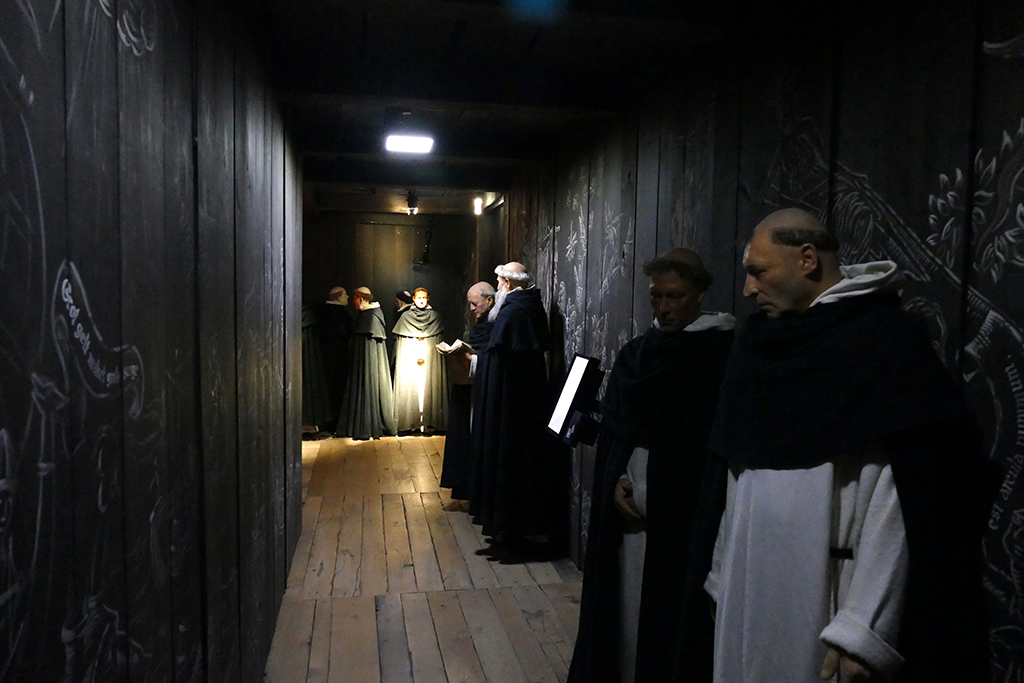
The fact that it is connected to the Burgkloster, a former Dominican Cloister from 1229 that can be also visited, even adds to the authentic charm. It makes you feel like travelling back in time.

Europäisches Hansemuseum An der Untertrave 1 23552 Lubeck Phone: +49 – 451 – 80 90 99 – 0 Email: [email protected]
The museum is open daily from 10 a. m. to 6 p. m. and only closed on December 24. Your museum ticket includes a visit to the Cloister.
Historic Old Town on an Island
The medieval city of Lubeck with its impressive number of cultural monuments has been part of the UNESCO World Heritage since 1987.
The World Heritage Site is located on the Altstadtinsel , the Old Town Island which forms a hill between the rivers Trave and Wakenitz. This island is only approximately the size of one square kilometer. Nonetheless, there are amazing buildings, alluring cobblestone alleys, dreamy backyards…and much, much more. Actually, the site consists of more than a thousand buildings, listed in the monument list.
However, the World Heritage Site is the entirety of the preserved part of the medieval city.

Nevertheless, some of the most important structures are also located outside the Old Town Island on the surrounding minor isles. For instance the Holstentor and the old salt warehouses which are standing on the so-called Wall peninsula.
The Dolls Bridge
Most visitors are entering the Old Town Island from the west, coming either from the train station, the bus station or from one of the big parking lots. It is not advisable to drive in the city center since many streets are really narrow and vast parts are pedestrian areas, anyway.
Getting into the center, you first cross the Puppenbrücke , the dolls bridge. The eight allegoric statues standing on the banister gave the bridge its name. The original sculptures, however, stand at the St.-Annen-Museum, I’ll get to that later.
The Holsten Gate
As soon as you cross the bridge, there it is, the iconic Holstentor , the Holsten gate, built in 1464. It is one of the two remaining gates of Lubeck’s medieval city fortifications. It is not only Lubeck’s signature building, but definitely one of Germany’s most famous structures. If you can’t make it to Lubeck: It also adorns the German 2 €uro coin.
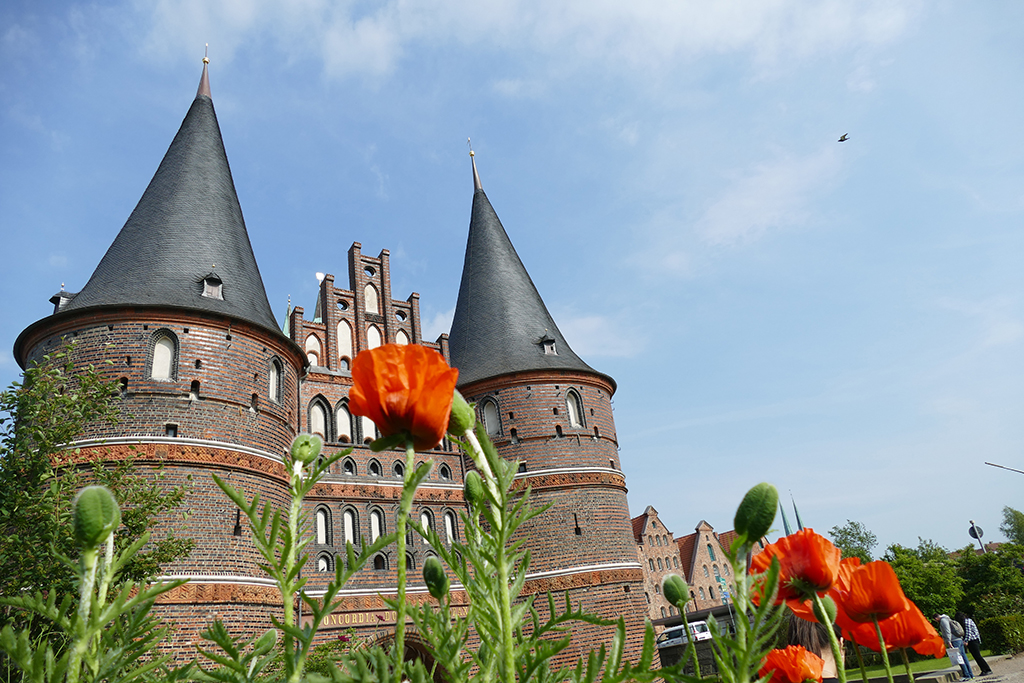
It stands all crooked since it was built close to the river Trave on boggy land. Over the centuries, a great effort was necessary to solve the problem for good. Today it is one of Germany’s most photographed buildings and houses the city museum.
Museum Holstentor Holstentorplatz 23552 Lubeck Phone: +49 – 451 – 122 41 29
Opening hours are from January to March from Tuesday to Sunday from 11a. m. to 5 p. m. and from April to December daily from 10 a. m. to 6 p. m.
Before you walk across the park towards the Holstentor , you might want to pay the tourist information a visit, it is just south of the park and a great spot for planning and preparing your further visit: They, obviously, have lots of info, but also a café where you can plan your day enjoying some local refreshments.
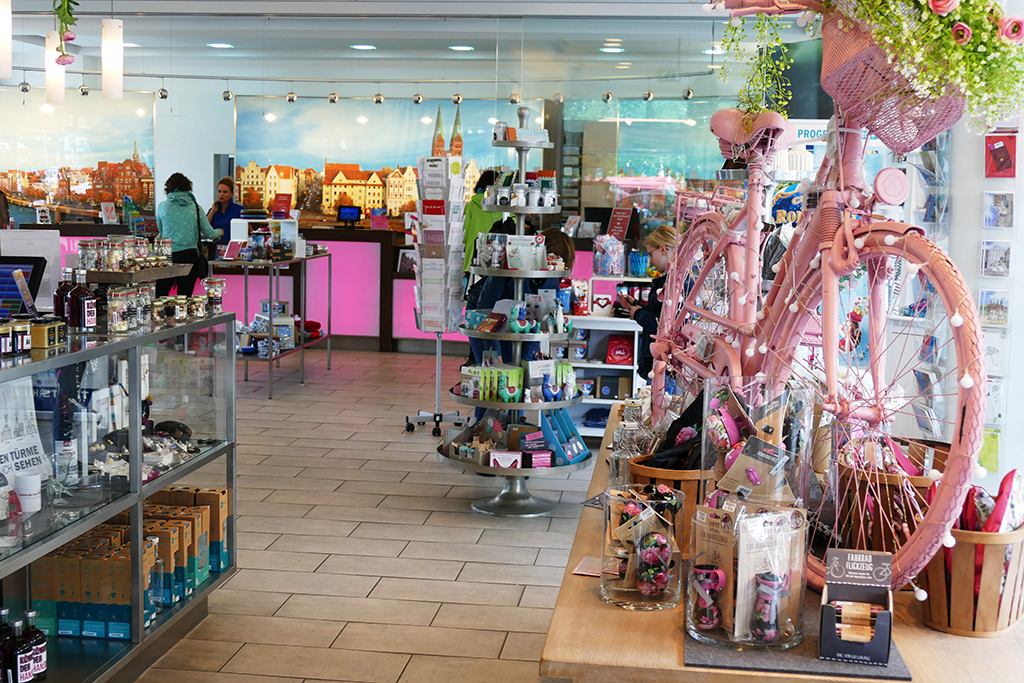
Medieval Times
To get the best overview of Lubeck, you either have to reach high or bend low.
Coming from the gate, you’ll spot the tower of St. Peter’s church to your right. It is one of Lubeck’s five main churches, however, today, only special services are taking place. Otherwise, the church is used for contemporary exhibitions of artists like Kiki Smith, Guenther Uecker, Thomas Zipp, or Arnulf Rainer who designed the altar cross.
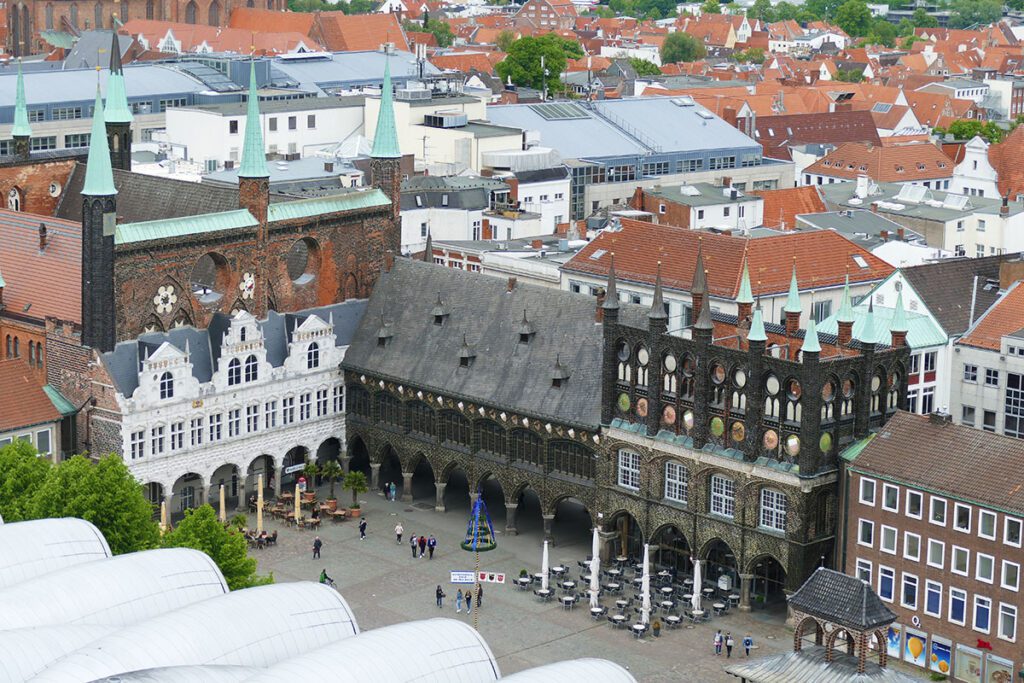
For only 4 €uro, an elevator takes you 50 meters up the 108-meter high tower from where you can see all of Lubeck.
Since the church’s opening hours vary, check out their website before going.
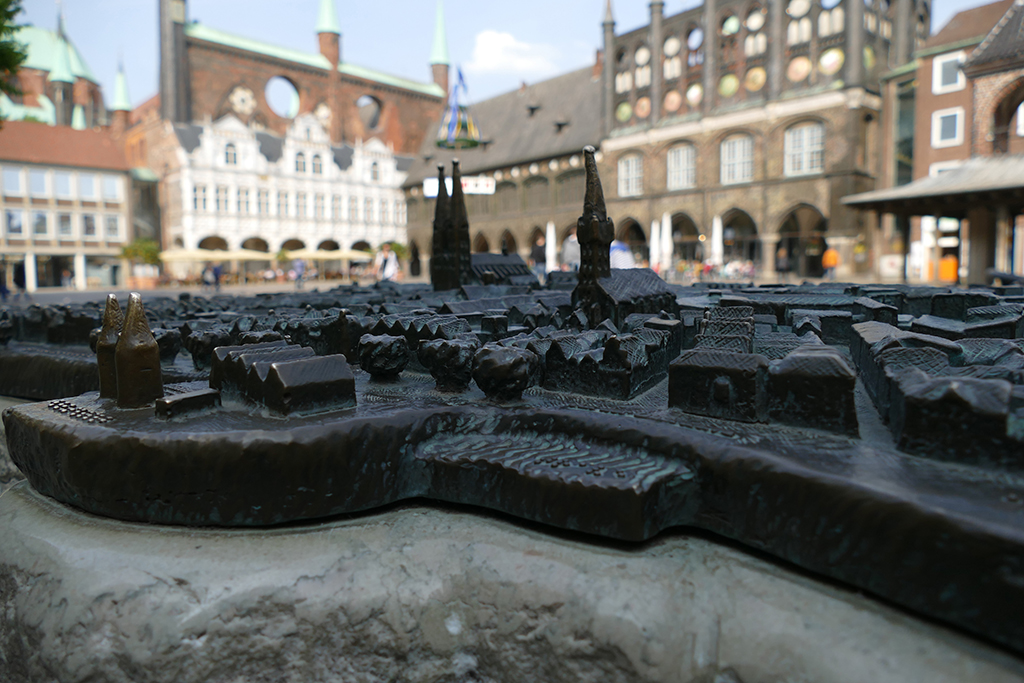
A less windy alternative is the city model at the southwest corner of the old market square. The local Rotary club donated this miniature so that impaired and blind people can enjoy Lubeck’s beauty, too.
And while you are on the square, take a look at the Medieval townhall, undoubtedly one of Germany’s most beautiful governmental buildings.
Three in One
You might wonder, which one of these buildings it is? Well, all of them. The town hall was built in many stages – and therefore in various styles. There is the late Romanesque part from the early 13th century with the noticeable holes. They were left for the strong breeze going through and not damaging the walls. Adjacent is the black, Gothic part from the late 13th century and finally the white part in a tender Renaissance style from the 16th century.
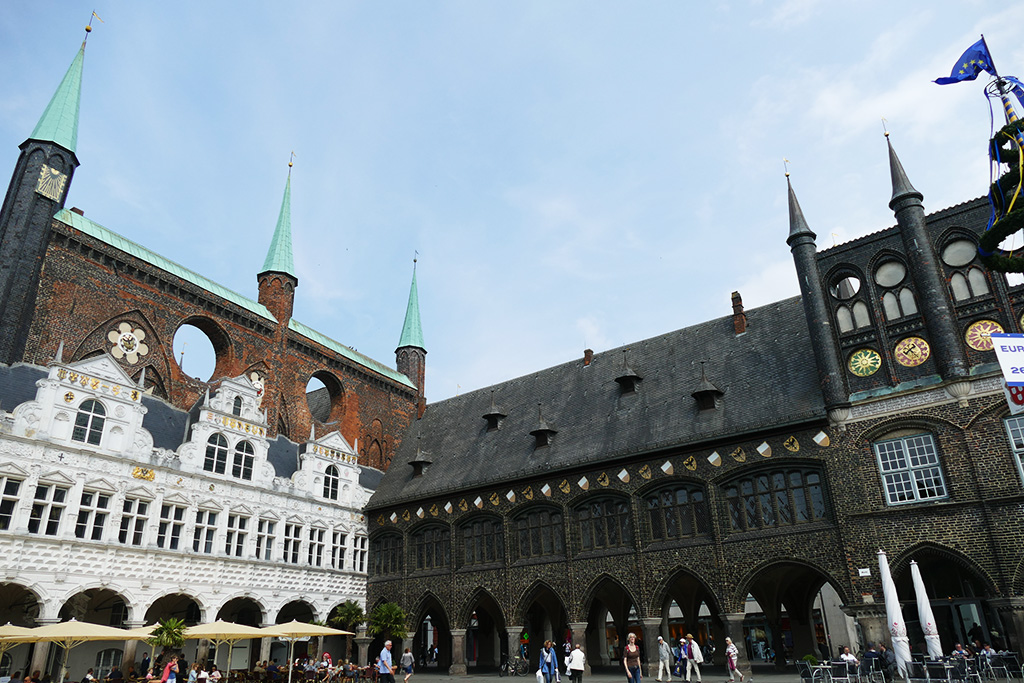
You can visit the inside either on a guided tour organized by the tourist info or on a tour by the town hall.
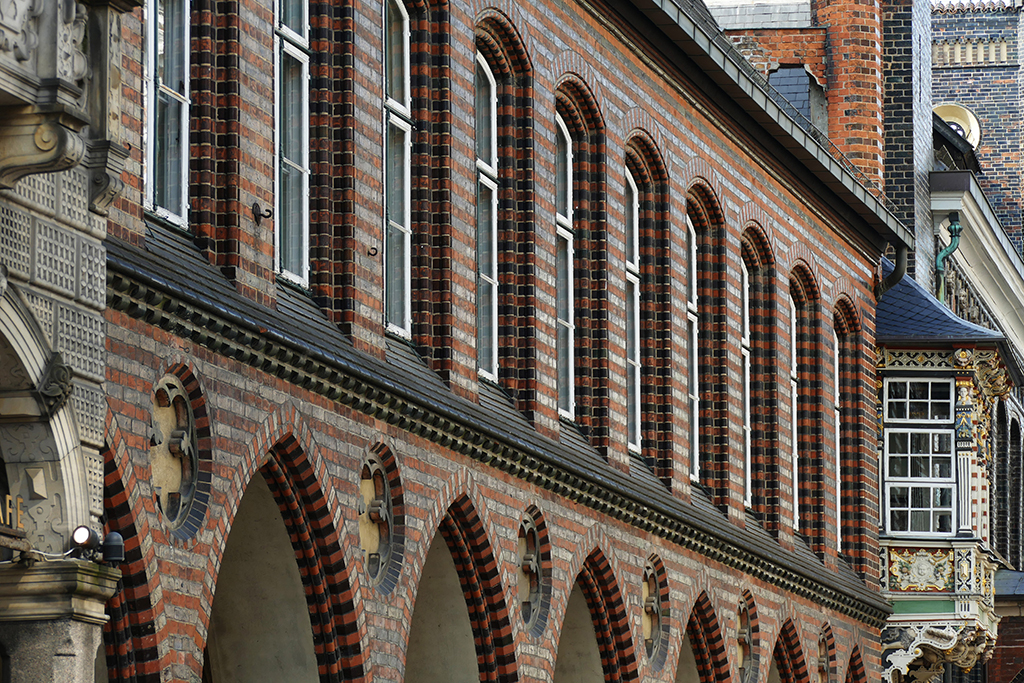
Lubecker Rathaus / City hall of Lubeck Breiten Straße 62 23552 Lubeck Phone: +49 – 451 – 12 20
Guided tours are from Monday to Friday at 11 a. m., noon, and 3 p. m and weekends at noon. A tour is also included in a walking tour organized by the Tourist Information.
St. Mary’s
Right next to the town hall is another Medieval building you should not miss, the St. Mary’s church, one of the most important buildings built in the iconic red-brick Gothic style. I’ll get to St. Mary’s further below.
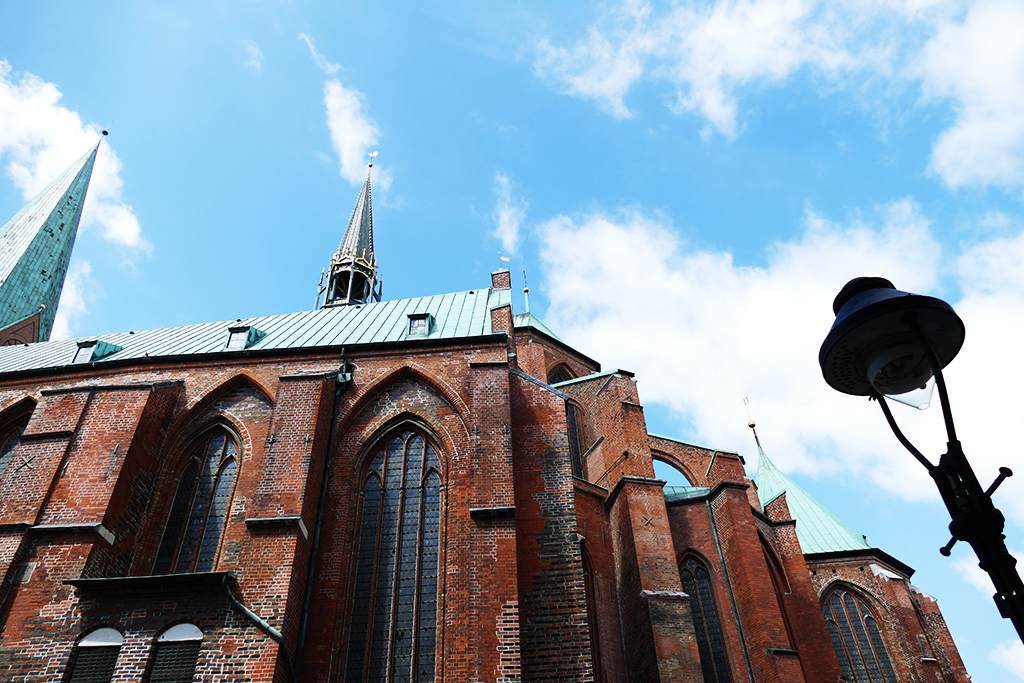
Since the Middle Ages, the wealthy burghers of Lubeck shared and endowed – not because they were such good people….or at least it wasn’t the only reason. Most of all they were keen on getting freedom of soul and a prime spot in the afterlife.

Hospice of the Holy Ghost
The Heiligen-Geist-Hospital , the Hospice of the Holy Ghost, is probably the finest and also oldest example of the charitable foundations in Lubeck. The hospice, built in 1286, granted room for sick, old, and poor people who had to live according to cloister-ish rules. They received mainly food and from the 17th century on also a bath – eight times a year.
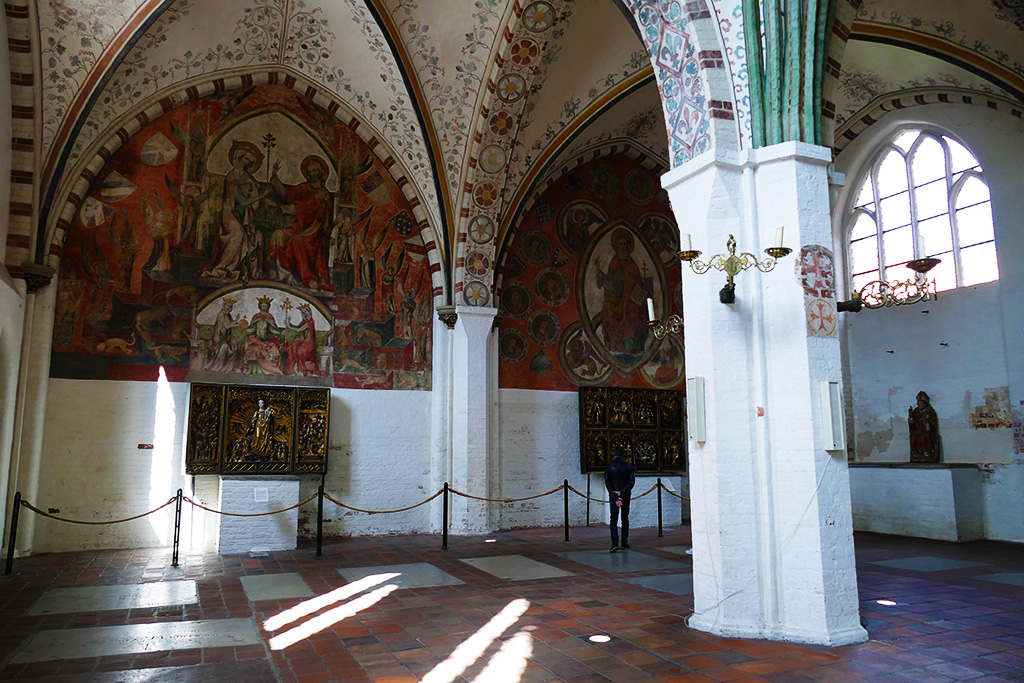
During Reformation, the hospice became a rather worldly old people’s home – which actually lasted till the 1970s.
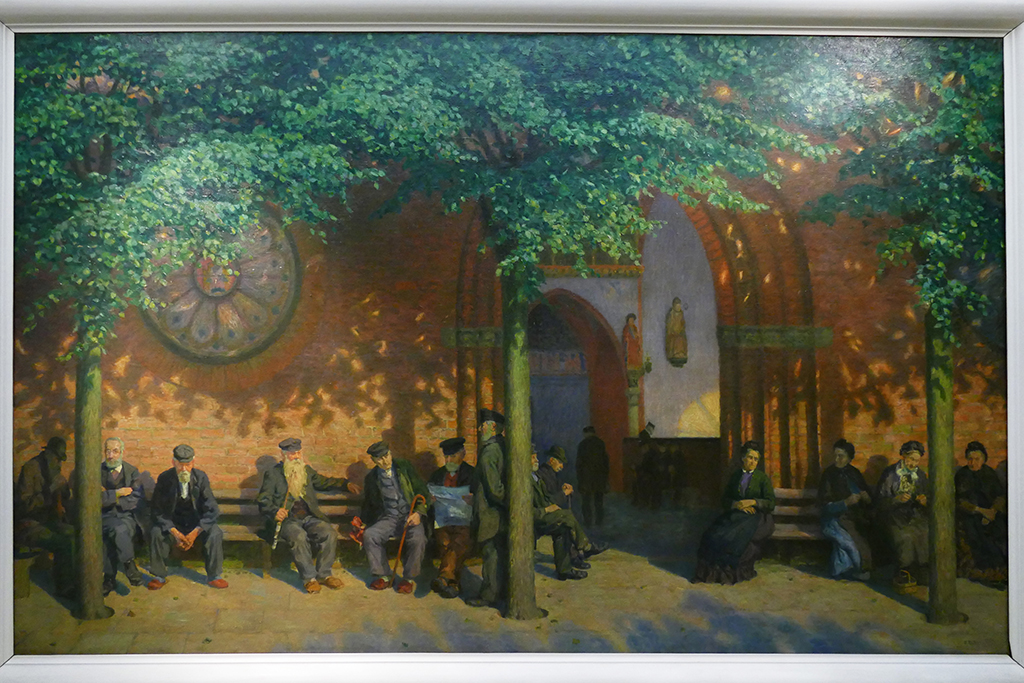
Today, the Heiligen-Geist-Hospital is one of Lubeck’s most popular landmarks. The Christmas market that takes place every year is definitely one of the nicest ones. People are actually waiting patiently in line at the door since space is limited and the products on sale absolutely original and of very high quality.
Heiligen-Geist-Hospital Koberg 11 23552 Lubeck
The Hospice is open daily from Tuesday to Sunday from 10 a. m. to 5 p. m.
A Joint for the Wealthy
Across from the hospice on the other side of the Koberg square is – next to mostly classicist buildings – the assembly hall of the traditional Schiffergesellschaft , the fine mariners’ association, founded by wealthy tradesmen in 1401 firstly as the Saint Nicolas Guild.
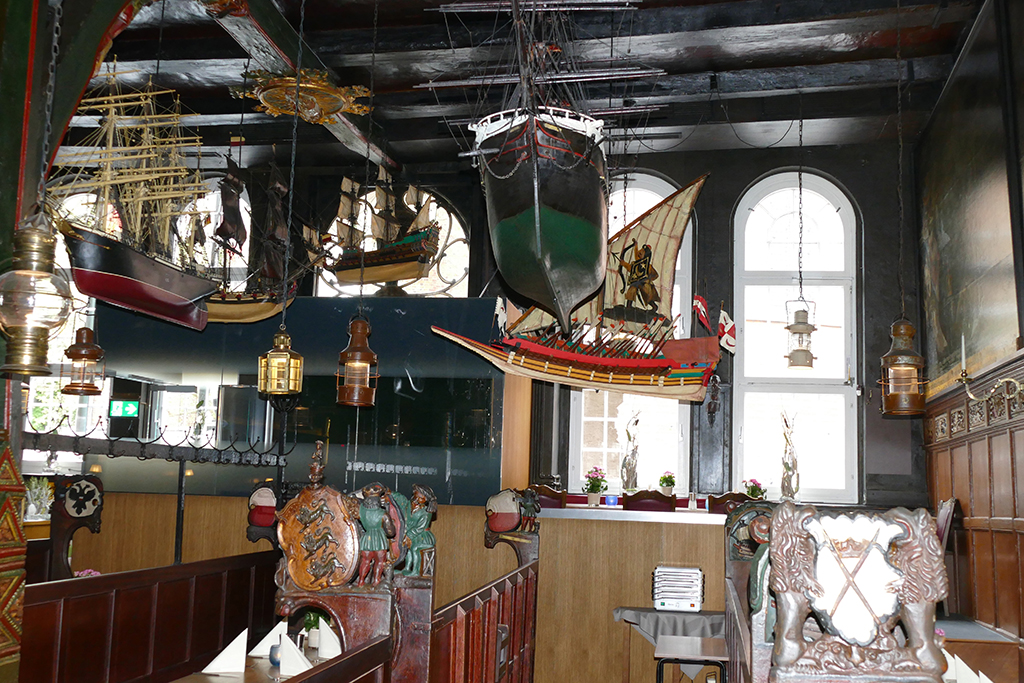
The guild bought the house built in red brick renaissance style in 1535 and made it their assembly hall.
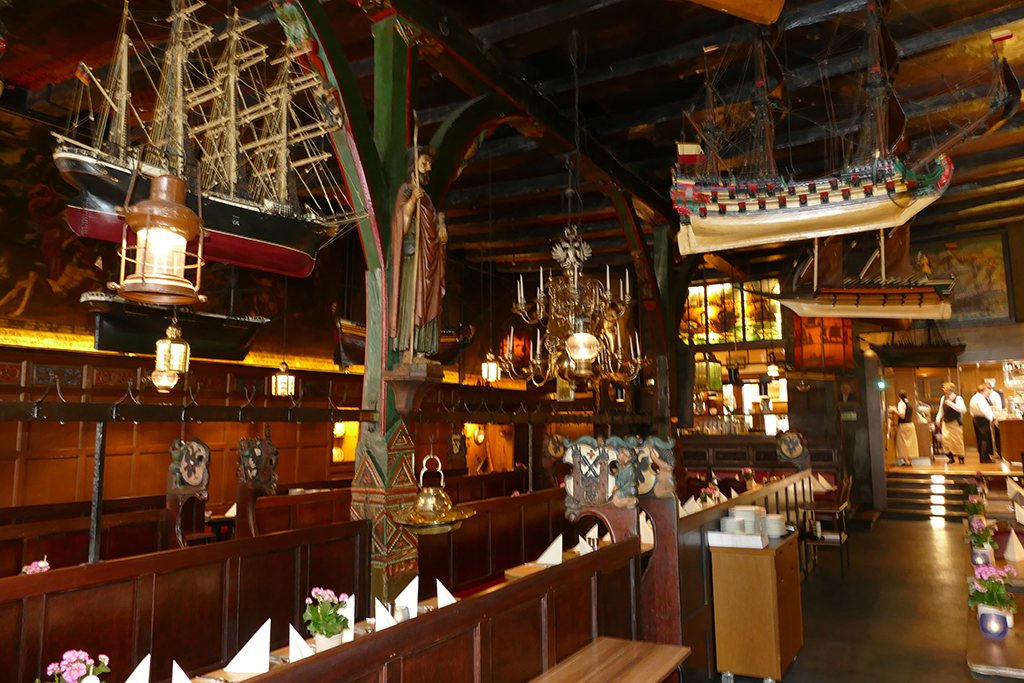
Today, the Schiffergesellschaft is not only one of Lubeck’s most famous landmarks, but also an exquisite restaurant. No visit to Lubeck is complete without a meal at one of the old dark wooden tables.
Restaurant Schiffergesellschaft Breite Straße 2 23552 Lubeck Phone: + 49 – 451 – 767 76 Email: [email protected]
The Schiffergesellschaft is open daily from 11 a. m. to 11 p. m.
After a generous meal at the Schiffergesellschaft , you might feel like walking a bit, and crossing the old town southwards will get you to one of the most amazing museums Lubeck has to offer.
St.-Annen-Museum
The St.-Annen-Museum was opened in 1915 in the structures of a former cloister, built from 1502 to 1515 in a late Gothic style. The inhabitants were mainly unmarried daughters of Lubeck’s burghers – aka old spinsters. With the undergoing Reformation, the last nuns left the cloister in 1542. Eventually, the building became an almshouse and a prison – at the same time and under the same roof and the same management.
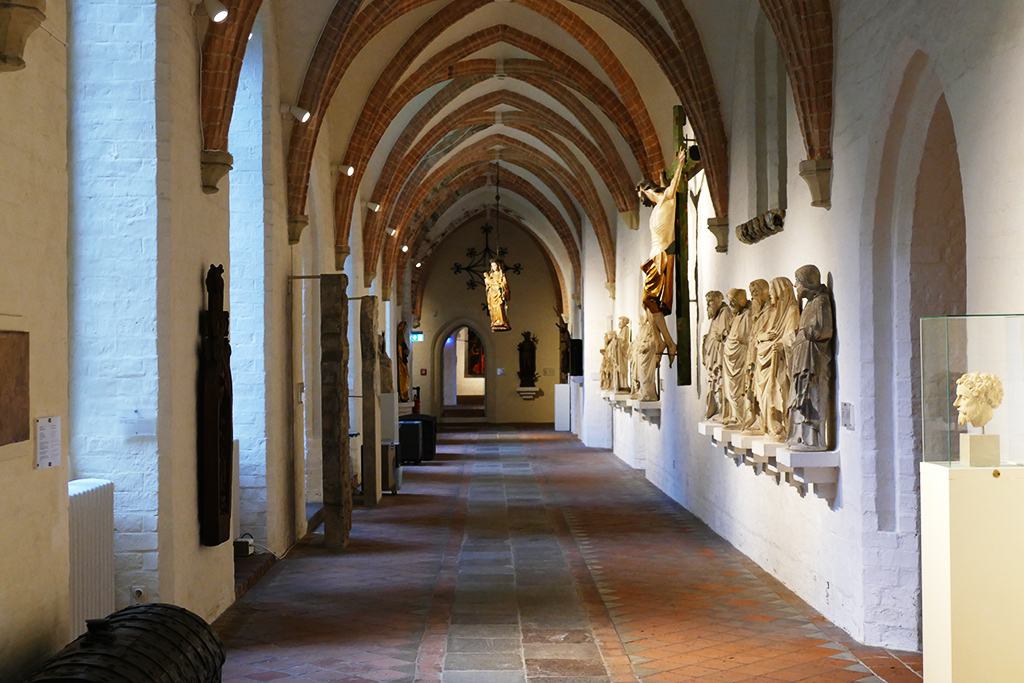
Today, major parts of the building are still the original structures.
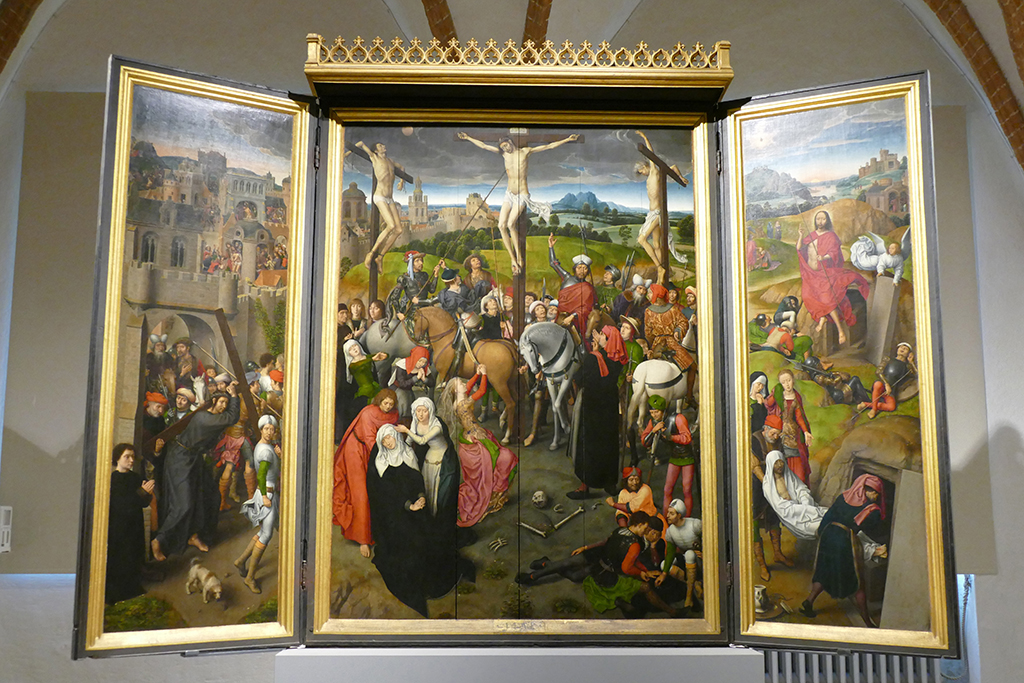
The museum houses an impressive collection of sacral art like winged alter pieces and statues, but also fine examples of traditional local home decor and even an entire pharmacy.

The new annex offers space for contemporary art; and, finally, in the courtyard are the original statues from the Puppenbrücke .
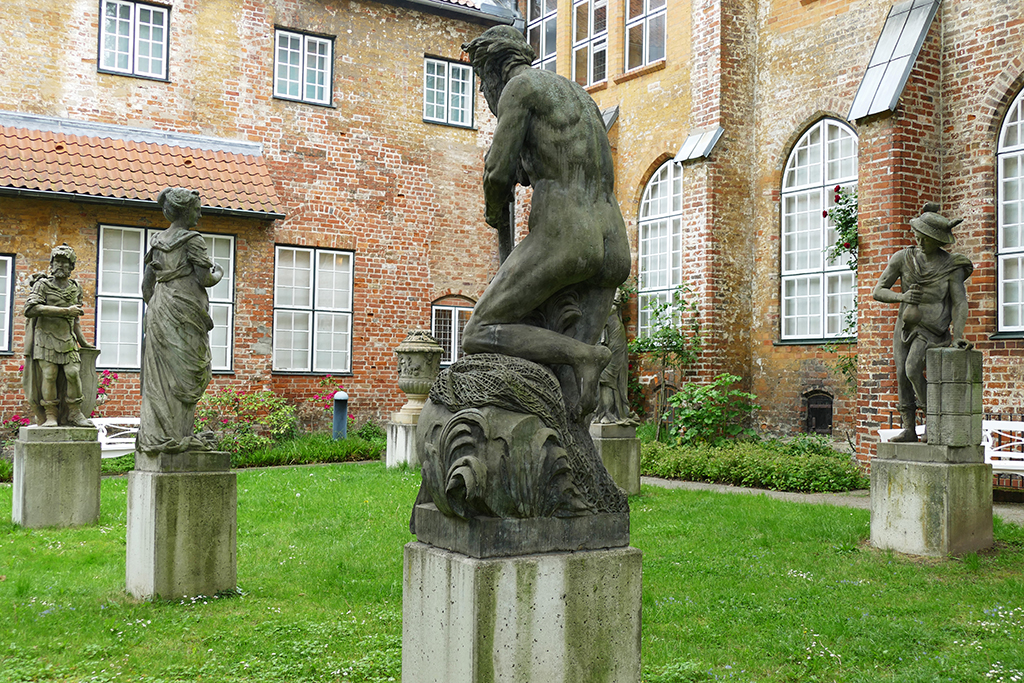
The St.-Annen-Museum is on very few tourists’ lists – which is a big mistake.
St. Annen-Museum St. Annen-Straße 15 23552 Lubeck Phone: +49 – 451 – 122 41 37
Opening hours are from January to March from Tuesday to Sunday from 11a. m. to 5 p. m. and from April to December already from 10 a. m.
Seven Spires
Queen of the Hanseatic League, the Holstentor, the city hall, the hospice….there are just so many titles and iconic landmarks in small Lubeck. I still haven’t introduced one of the most important ones: Lubeck is also called the city of the seven spires.
These seven towers belong to the five Gothic main churches, St. Jakobi, St. Marien, St. Petri, St. Aegidien and the Lubeck Cathedral, going from north to south:
St. Jakobi – or Saint James’ Church – is between the Hospice of the Holy Spirit and the Schiffergesellschaft next to the Koberg square. It was consecrated in 1334 as a church of sailors and fishermen. This church, the Holy Spirit Hospice, and the neighboring Gertrudenherberge , a medieval pilgrims’ hostel, are stops on a branch of the North German Way of St. James.

The church’s clock tower is an interesting feature since it displays only hours as a one-hand watch. This February, however, the pointer of the northern clock-face fell off and crashed down 50 meters on the church forecourt.
Built between 1250 and 1350, St. Marien – respectively Saint Mary’s Church – has always been a symbol of the power and prosperity – and pomp – of the Hanseatic city.
St. Mary’s is the epitome of the classic North German Brick Gothic and set the standard for about 70 other churches in the Baltic region.
Besides the impressive structure, there are some quirky stories and superstitions about the building.
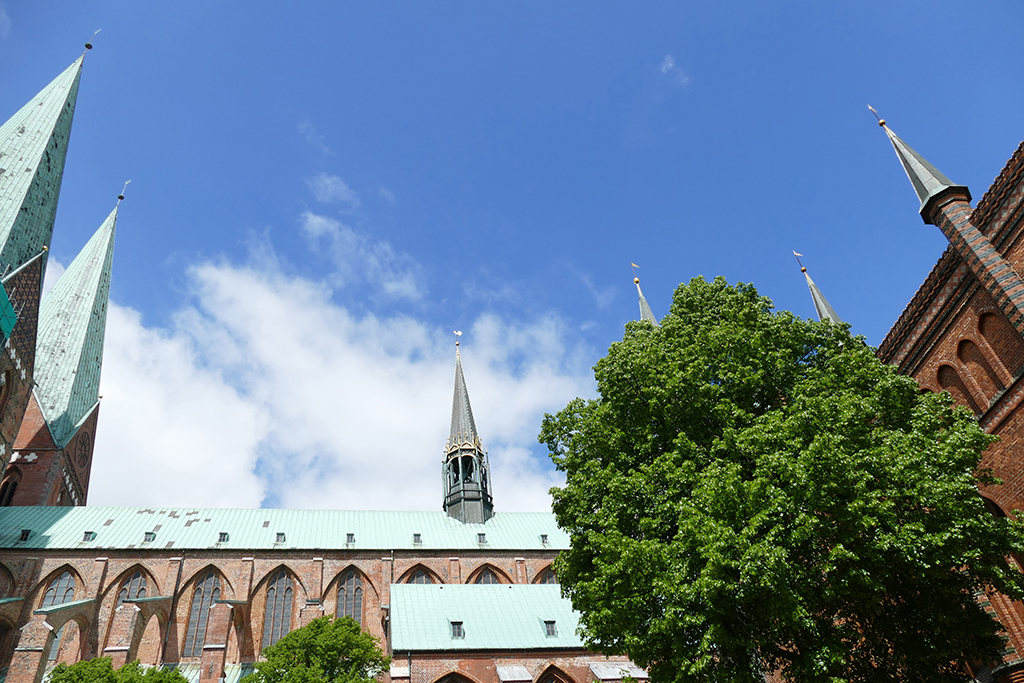
The first one is about the mouse Rosemarie: Once upon a time, there was a rose tree, which grew for a long time on the side of the St. Mary’s Church. It was believed that Lubeck would be free as long as the bush was green and blooming. For many years and decades, they enjoyed the rose, until one day it began to wither. As the inhabitants laid the roots of the bush free, they saw that mouse Rosemarie had planted a nest between the roots and her babies eagerly nibbled the roots.
It happened the way it had to: Lubeck was forced to surrender to the Danes.
However, in 1227, northern German princes and cities finally defeated the Danish king Waldemar II., and the Hanseatic city was free again and Lubeck became even more powerful.

Therefore, the mouse Rosemarie was immortalized in a sandstone relief in St. Mary’s Church.
It is believed that touching her with your left hand will bring you happiness.
Don’t tell anyone, but she sits in the lower-left corner of the sandstone relief behind the altar.
The Devil Does Care
On a bench in front of the church, you’ll spot a little – quite friendly looking – devil. He refers to the story that the Lubecker’s told the devil they would build a tavern and not a church. The delighted devil helped with the construction. Only shortly before the completion, he discovered the deception and wanted to destroy the church with a huge stone. Since the Lubecker’s assured him thereupon the construction of a nearby tavern, today’s Ratskeller, the devil dropped the stone close to the church where the little statue. Created by Rolf Goerler, it is sitting there to this date. Touching the horns is supposedly bringing luck.
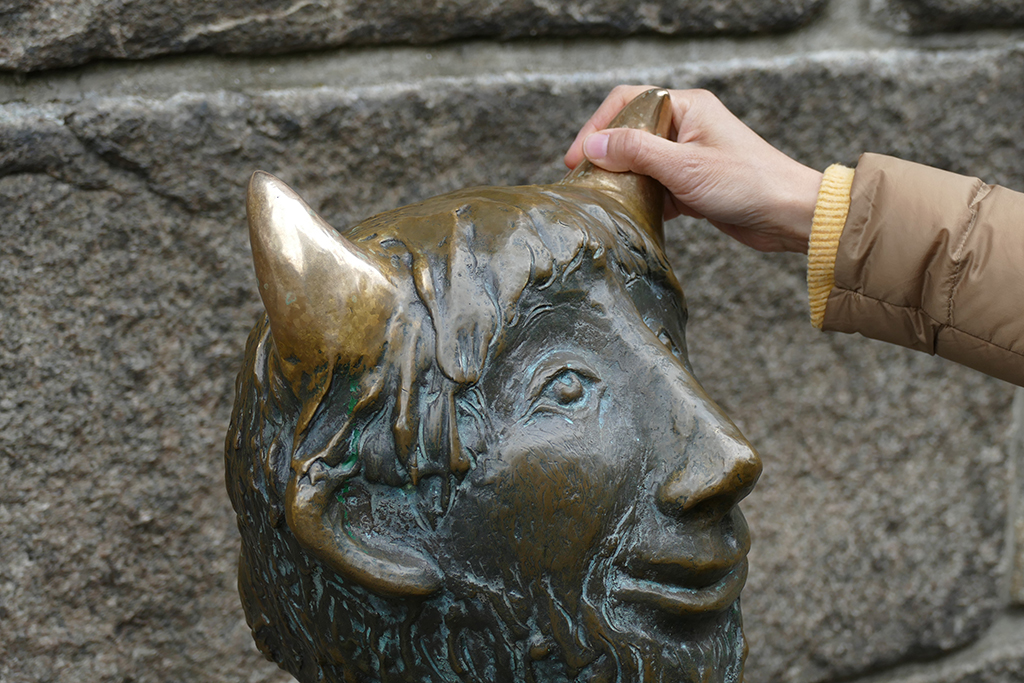
My favorite, however, is the Lübecker Totentanz , the dance macabre of Lubeck, that you’ll find in many spots of the church. It was created in 1463, probably under the impression of the plague, the so-called black death. Death, embodied skeletons, is dancing a roundelay with nobles, clerics, and simple folks, good and bad, in a memento mori – being everyone’s faith.

Sadly, there is also another reminder of death and loss. During the destructive air raid in 1942, also this church was severely damaged. As an anti-war symbol, they left the remnants of the bell as it fell on the floor of the southern tower.
Petrikirche
Saint Peter’s Church was first mentioned – together with the Marienkirche – in 1170. Between 1227 and 1250, the three-nave church hall was constructed in a late Romanesque style. However, after several alternations and extensions, the church was finally completed in the 15th century.

During WWII, the church was severely damaged and eventually fully restored in 1987. Unfortunately, since the equipment could not be restored, only special church services take place, and the Petrikirche is mainly used for cultural and religious events as well as art exhibitions.

Nonetheless, it is probably one of the most visited churches in Lubeck since from the platform, you have a fantastic city view.
St. Aegidienkirche
Saint Aegidien Church is the smallest, least famous, and easternmost of Lubeck’s iconic inner-city churches. Although it was first mentioned only in 1227, the original construction of a wooden church probably stems from the years between 1172 and 1182.

This church was located at the center of a rather impoverished artisan quarter on the eastern slope of the inner city towards the river Wakenitz. The remaining buildings of the convent, the Aegidienhof , are one of Schleswig-Holstein’s largest housing projects, and the St. Annen Monastery is now a museum – see above. Together they form the Aegidien district of Lubeck’s old town.
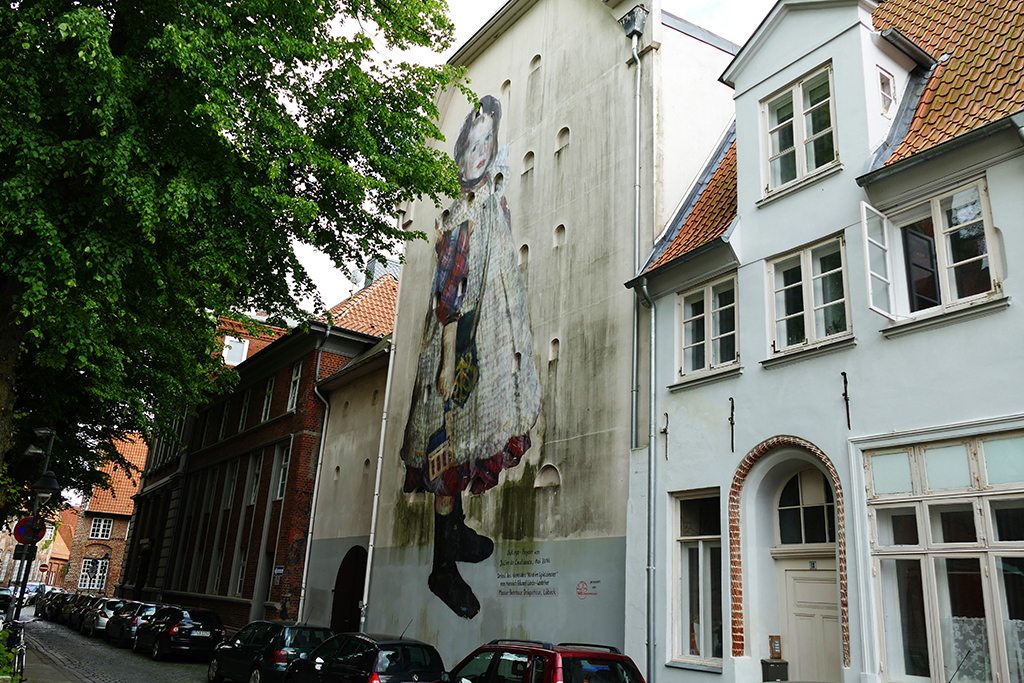
The Lubeck Cathedral was the first brick church on the Baltic Sea and, with a length of around 130 meters, one of the longest ones. It was consecrated in 1247.
Severely damaged during the air raid in 1942, its reconstruction took several decades as the reconstruction of the Marienkirche was a priority.

Finally, the Cathedral’s reconstruction was only completed in 1982.
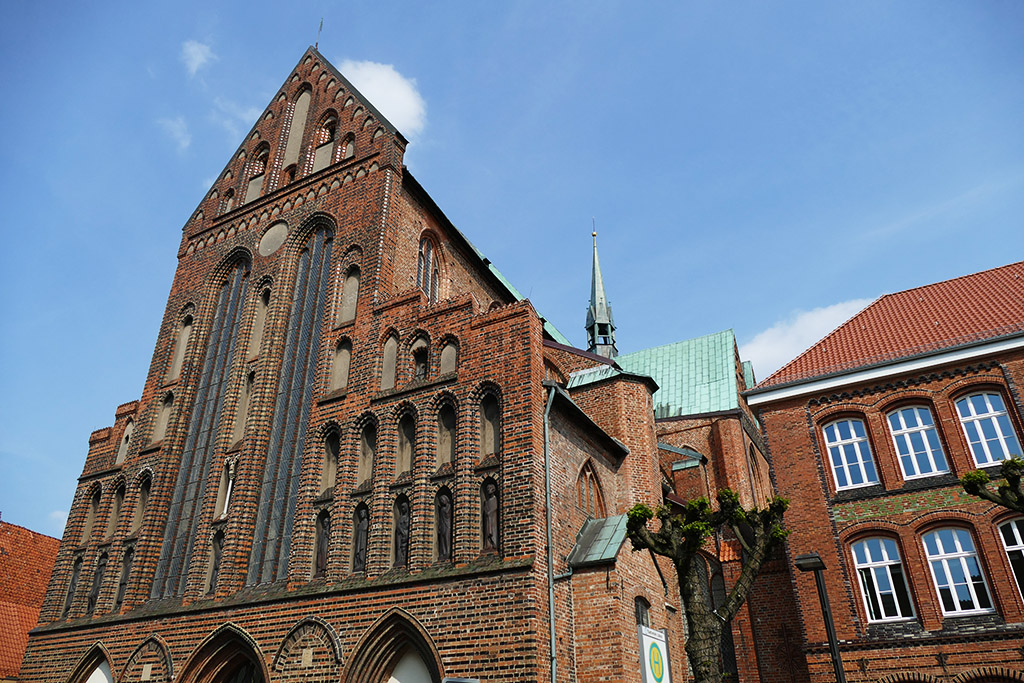
The density of so many, so similar churches in such a relatively small area – they are minutes one from another – is quite amazing, especially in a traditionally protestant region.
From Classicism to Art Nouveau

Behnhaus and Drägerhaus
Although over the centuries, Lubeck had lost its political influence, the city eagerly maintained its economic power. Many beautiful facades in classicist style still prove it.
Some of the former bourgeois villas are housing exquisite museums.
The most extensive collection is at the ensemble of the Behnhaus and Drägerhaus.
The Behnhaus was built in 1783 and thoroughly decorated by Danish architect Joseph Christian Lillie at the beginning of the 19th century. In 1823, the physician Georg Heinrich Behn bought the house that remained family-owned till 1920.
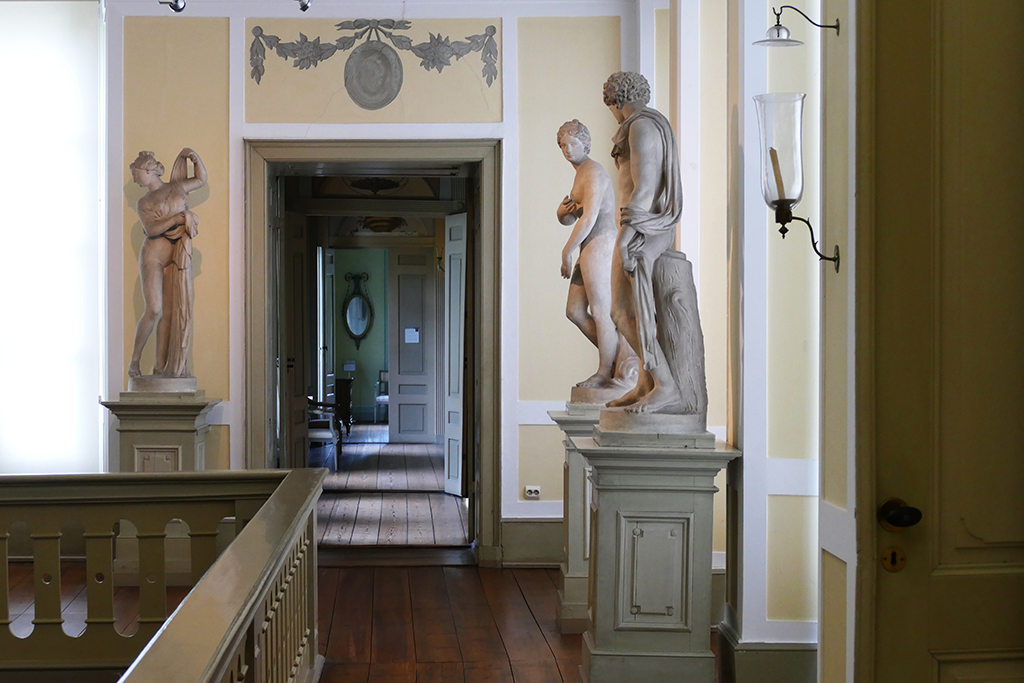
Eventually, it became an art museum.
The neighboring building was renovated with funds from the Dräger-Foundation and transferred to the city of Lubeck.
In 1981, the Behnhaus and the Drägerhaus were connected. Now they are housing a gallery of paintings from the 19th century and classic modern art like i. a. the art collection of another bourgeois citizen, Dr. Max Linde.

Ophthalmologist and art collector Dr. Max Linde was particularly involved in the art history of the 20th century as a patron of Edvard Munch. Munch also painted his four sons.

Nonetheless, also the rich bourgeois home decor from the Rococo, Classicism and Biedermeier eras are absolutely beautiful.

Museum Behnhaus Drägerhaus Königstr. 9-11 23552 Lubeck Tel.: 0451-122-4148
Willy Brandt Haus
Relatively late, in 2007, an exhibition on one of Germany’s – also internationally – most popular politician opened its gates. Lubeck-born Willy Brandt, the great German Social Democrat who migrated from the Nazis to Norway and after WWII became a journalist and politician.
He was among others the mayor of Berlin , Germany’s foreign minister and eventually, chancellor and for 23 years the Leader of the Social Democratic Party.
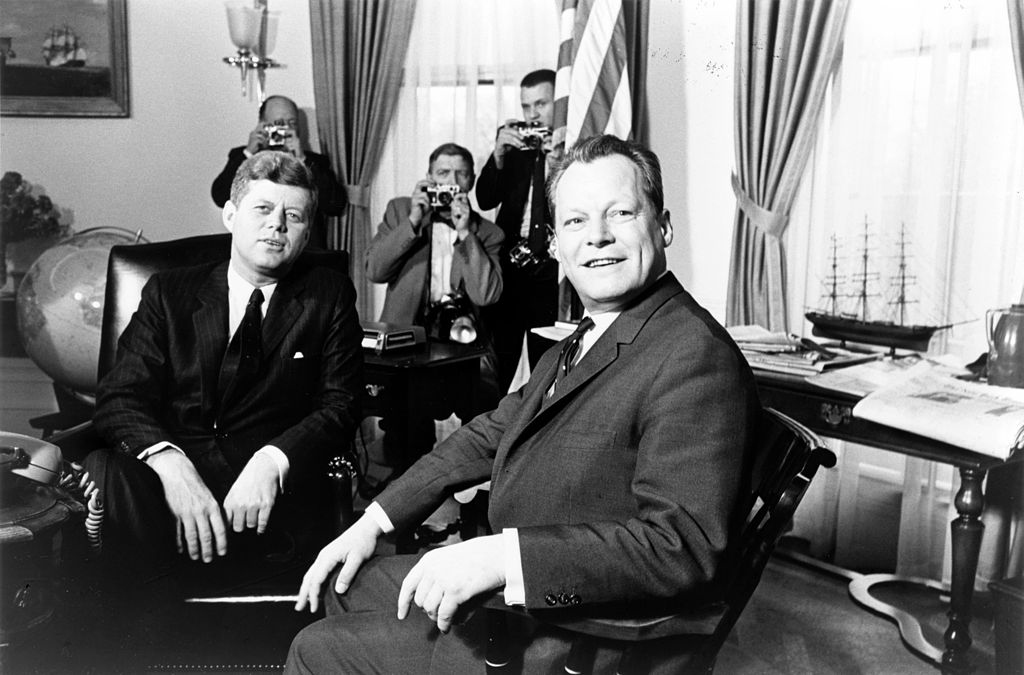
So now you can learn in a vivid state-of-the-art exhibition about Brandt’s extremely diverse and exciting life in connection with many key historical events. The interactive ticket takes you on a fascinating journey through history.

In 1971, Willy Brand got the Nobel Peace Prize and is one of three famous Lubeck-based laureates.
Willy-Brandt-Haus Lübeck Königstraße 21 23552 Lubeck Phone: + 49 – 451 – 12 24 25 – 0
The exhibition is open daily from 11 a. m. to 6 p. m. except for about six days per year that you can check out on their website.
Buddenbrookhaus
The first Nobel Prize laureate from Lubeck was, of course, the famous writer Thomas Mann. He received it in 1929 for his novel Die Buddenbrooks .

Only, the Lubeckers were not as happy as you might expect – understandable since many of them identified themselves and their neighbors in the quirky characters Mann is depicting in this book.
However, today the so-called Buddenbrookhaus is one of Lubeck’s most visited museums. It houses the Heinrich und Thomas Mann Center and a complete exhibition on the Mann-family – I cannot think of one of the Manns who was not a writer, be it the brothers Heinrich and Thomas or one of Thomas Mann’s six children.
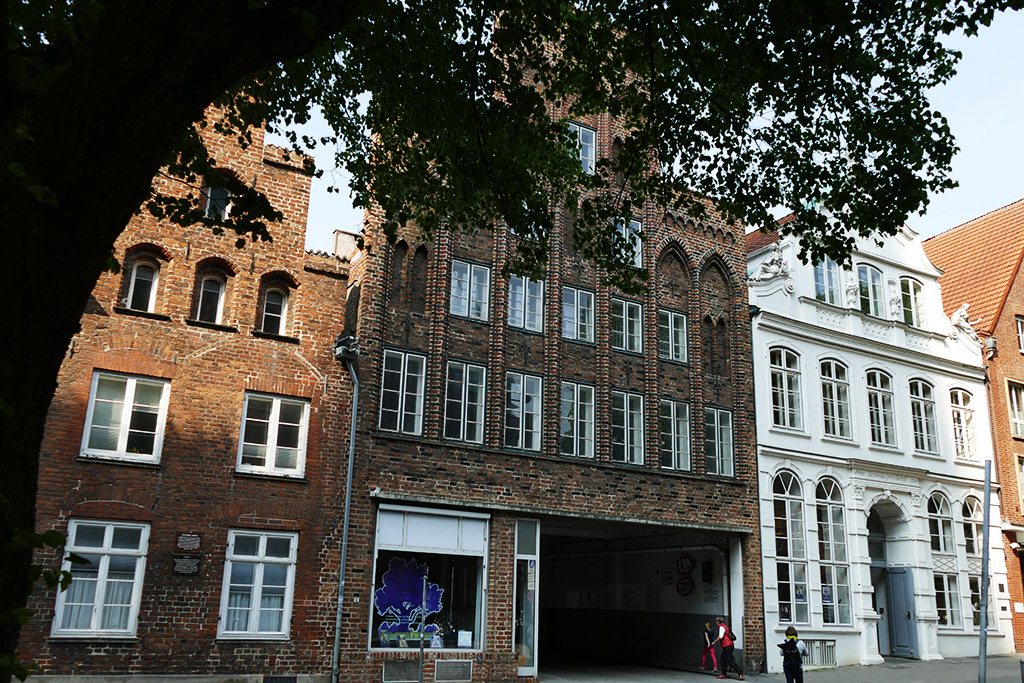
In 1842, Mann’s grandfather, of course, a wealthy merchant, purchased this building and henceforth, it was the family’s home. However, the brothers Mann spent only their youth here. During the Nazi-era, they had to flee Germany and lived first in Switzerland and later in Pacific Palisades in the United States. As Thomas Mann returned to Europe after the war, he made Switzerland his home where he died in 1955.
All this and much more is documented at what today is called the Buddenbrookhaus. The house was built in 1758. Two figurines are adorning the white facade below the gable: The left one symbolizes time, the right one prosperity.
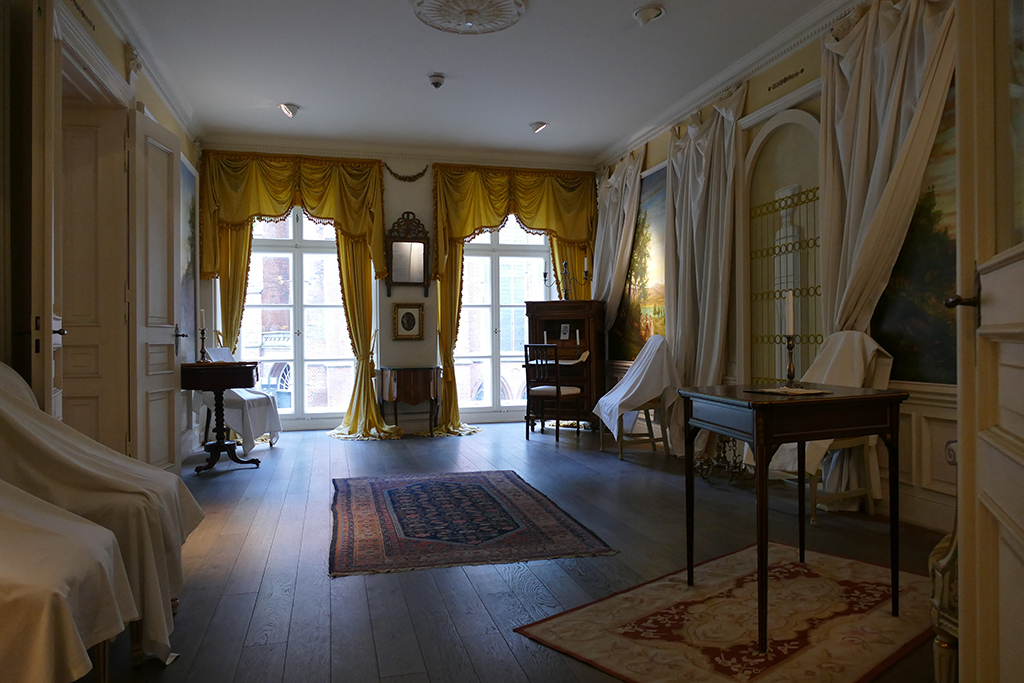
In the early 19th century, also this house was renovated and decorated by the renowned Danish architect Joseph Christian Lillie. Lillie, a representative of the Copenhagen Classicism, transformed a number of houses of Lubeck’s high society – like e. g. the Behnhaus, as mentioned above.
Buddenbrookhaus – Heinrich-und-Thomas-Mann-Zentrum Mengstraße 4 23552 Lubeck Phone:+ 49 – 451 – 122 41 90 Email: [email protected]
The museum is open daily from 11 a. m. to 5 p. m.
The third of Lubeck’s Nobel Prize winners was born in 1927 in Gdansk – Danzig in German – and later chose to live and work in Lubeck’s outskirts. It’s writer, graphic artist, painter, and sculptor Günter Grass who received the Nobel Prize in Literature in 1999.

The Günter Grass House was opened as a forum for literature and fine art in 2002 in the Glockengießerstraße, one of Lubeck’s most intriguing streets where many of the famous courtyards are located – I’ll get to them in the next section.
The focus of the museum is the dialogue and interaction between literature and fine art in Grass’ work.
When visiting, don’t miss the ingenious sculptures in the backyard.
Günter Grass-Haus Glockengießerstraße 21 23552 Lubeck Phone: + 49 – 451 -122 42 30
Post War till Today
Today, as you see all these majestic buildings, the churches, the cute alleys, and courtyards, it’s hard to imagine, that across the old town island, a 300-meter-wide swath from the Cathedral all the way to St. Mary’s Church was more or less completely destroyed.
Also, the area north of the Aegidien Church and large parts of the suburb west of the Holstentor and the main station were hit during the air raid on Lubeck on March 29, 1942. It was the first surface bombing of a German city center by the RAF Bomber Command in WWII.
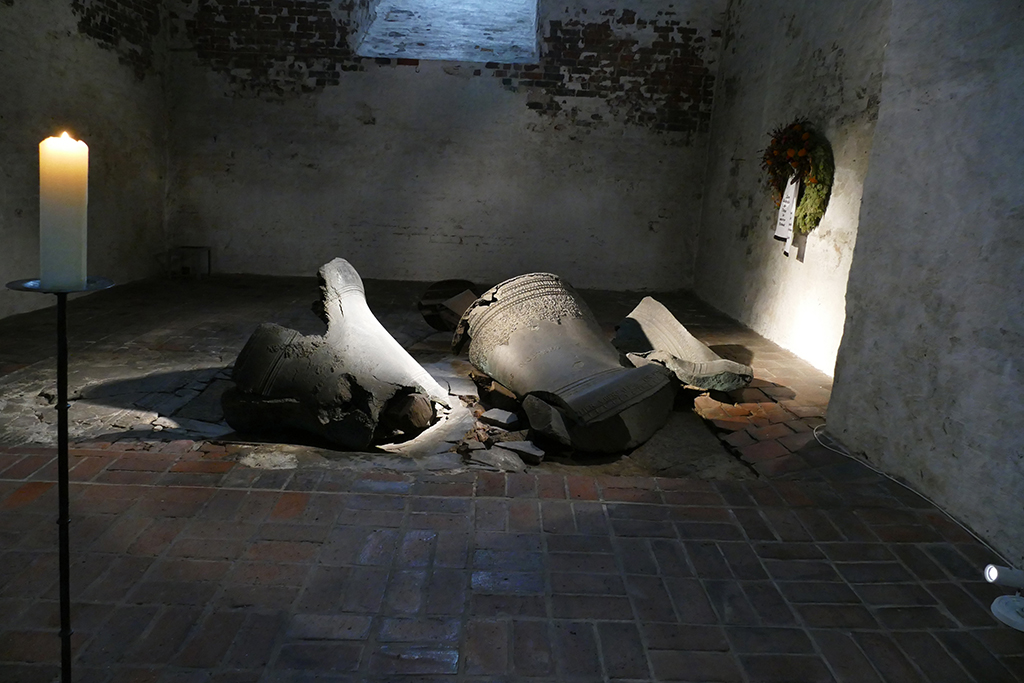
Being such an important target shows, that at that time, Lubeck still was considered an economic and industrial power due to its proximity to the north sea and the Baltic.

According to the police, 783 people were injured and 320 lost their lives. Also, over 15,000 Lubeckers lost there homes as 1,468 buildings were completely destroyed and around 12,000 were damaged. There are memorials all over the city, the most impressive at the Cathedral and St. Mary’s Church.
Risen From the Ashes
Today, Lubeck has about 220,000 inhabitants and is Schleswig-Holstein’s second-largest city after the federal capital Kiel.
Besides other industries, tourism is a big factor in Lubeck – not only on a national, but also on an international level. Also, there are many day trippers from cruise ships that call at the port of Travemünde, located about 20 minutes away on the Baltic shore.
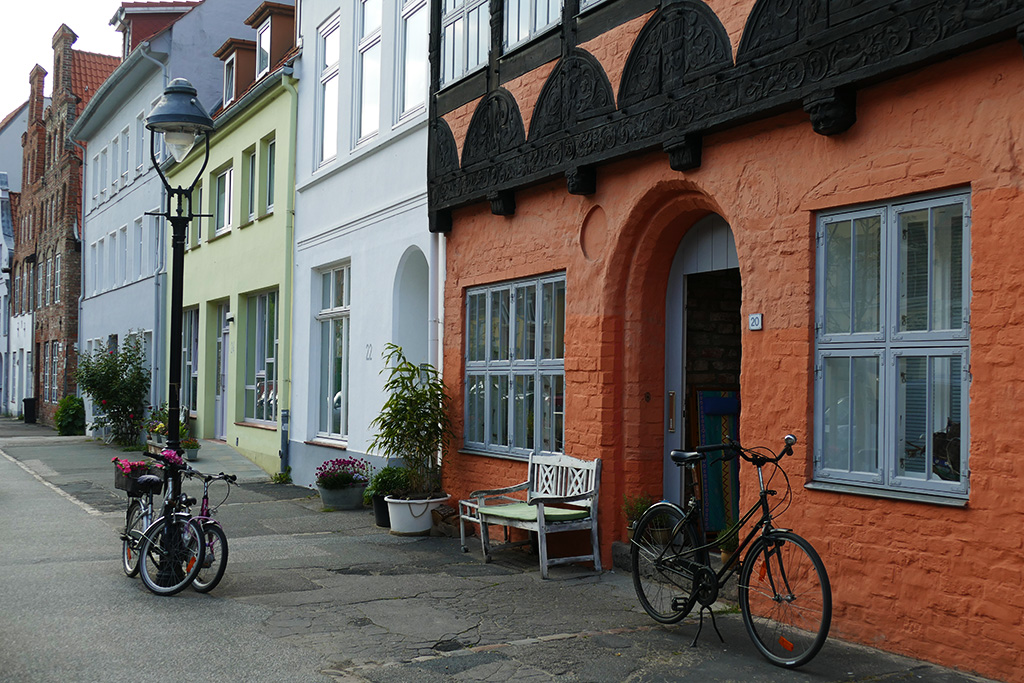
Visiting the marvelous city of Lubeck, don’t stick only to the majestic buildings I’m introducing in this post. Make sure to venture crisscross the city center. This way, you will enjoy the sight of numberless cute corners, courts, and alleys.
Lubeck’s Courtyards
Lubeck is well-known for these corridors and courtyards. They are residential quarters. Initially, they were constructed from the lack of space in the backyards of the residential buildings and rather for the poorest city dwellers. However, today, they are sought after living space.
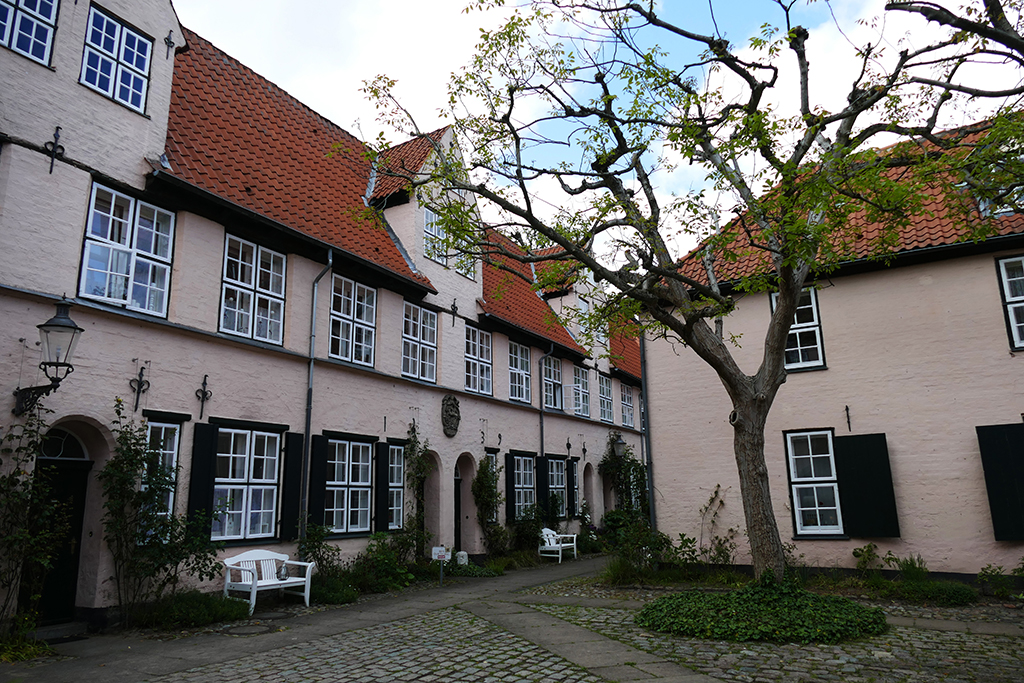
The largest and most beautiful courts are certainly the Füchtingshof and the Glandorpshof in the Glockengießerstraße – close to the Günter Grass Haus that I’ve introduced above.
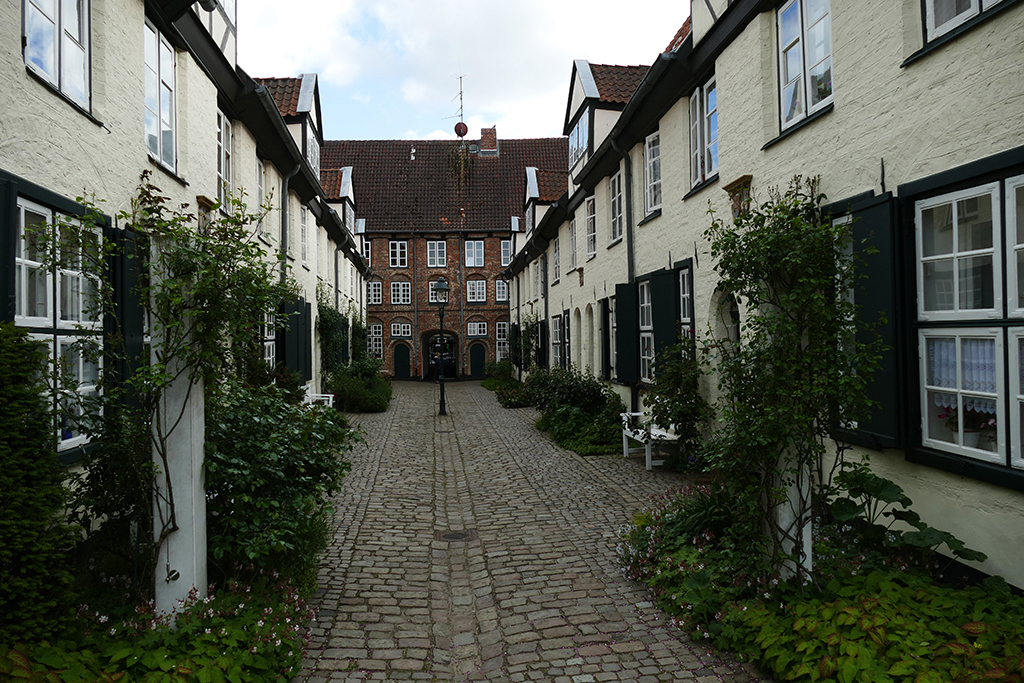
There are over 100 such aisles in Lubeck’s old town. Some of the city’s many foundations financed the renovation of many of these passages and courtyards. This, by the way, is the reason why people like you and me can just enter and look around and even take pictures. Of course, these little jewels add to Lubeck’s charm and thusly tourism.

However, you should not invade people’s privacy and keep out from about 6 or 7 p. m.

Practical Information
Getting there….
First, I’d like to apologize to my regular readers, you can probably sing about the Ländertickets , the federal state tickets, supplied by the Deutsche Bahn , Germany’s national train company.
Nonetheless, here it comes again:
The Deutsche Bahn offers the so-called Ländertickets, country tickets that are valid for one day in a specific federal state. Every federal state has its own and the cost varies from about 24 to 29 €uro.
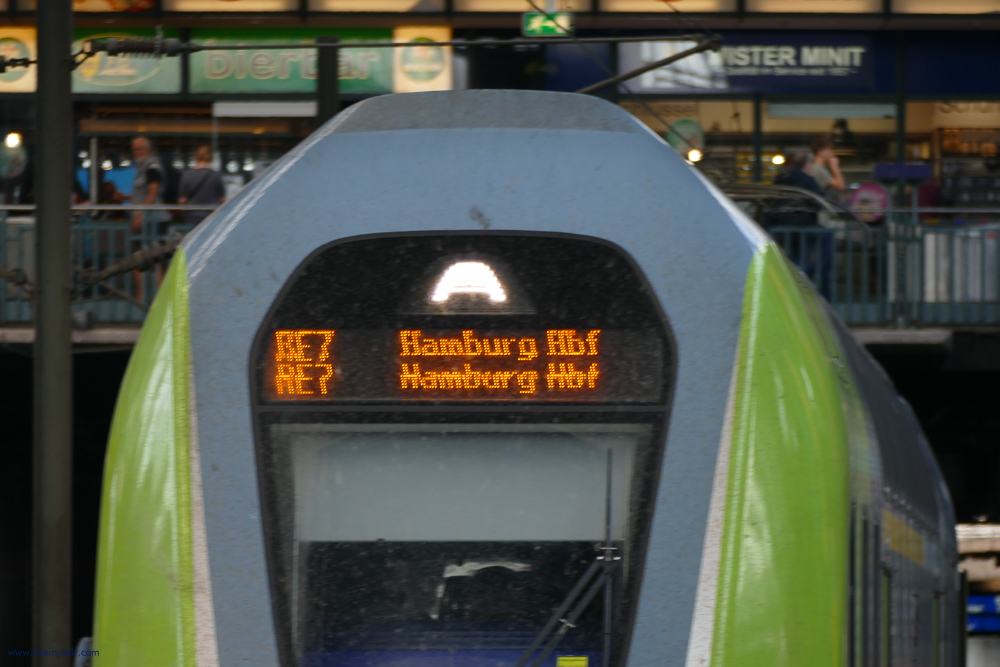
Travelling Through the Federal Country of Schleswig-Holstein
Lubeck is located in the federal state of Schleswig-Holstein, and the Schleswig-Holstein-Ticket costs 28 €uro for one and you have to add another 4 €uro per person travelling with you. So if you are two adults, it will set you back 32 €uro for both of you, if you travel with four other people, you’ll pay 44 €uro for your party of five; not bad, right?!
A child under 15 travels for free with two adults.
While you can actually travel the entire day within the respective federal state, you are only allowed to take the regional trains. Those train numbers begin with RE, MET, etc. However, you cannot take interregional trains such as the Intercity (IC) or Intercity Express (ICE).
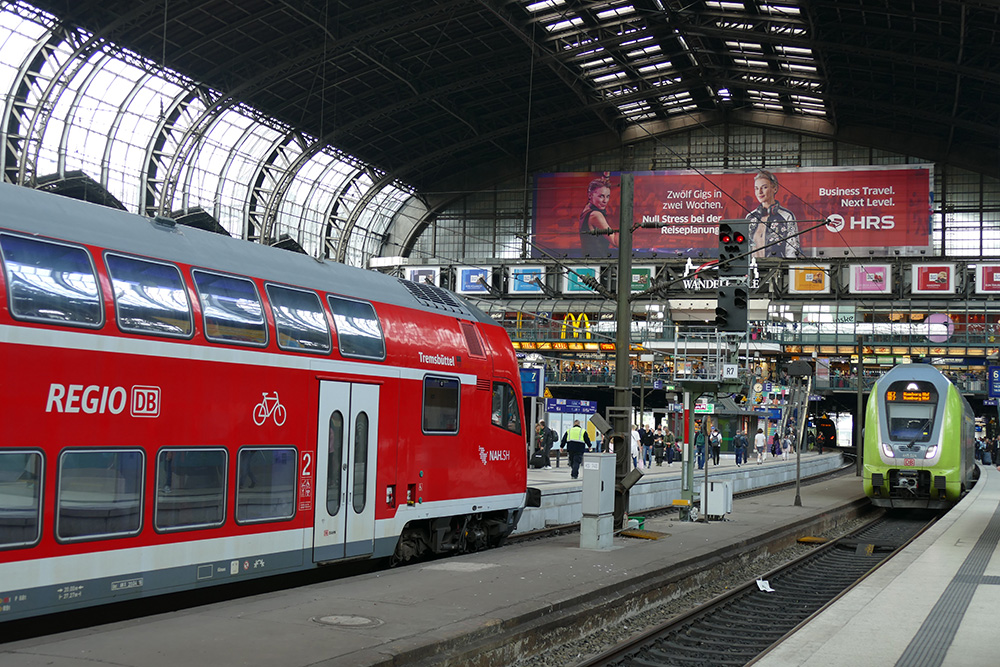
Extra: The Schleswig-Holstein-Ticket covers also the federal state of Mecklenburg-Western Pomerania as well as the city-state of Hamburg.
However, if you are travelling by yourself, a one-way ticket to Lubeck will be cheaper than the Schleswig-Holstein-Ticket. Therefore and for other connections and rates, please visit the Deutsche Bahn’s website , it’s available in seven languages.
Roads and Traffic
Of course, you can also drive to Lubeck, but keep in mind that major parts of the inner city you want to visit are either really narrow or pedestrian areas. There are parking lots close to the Holsten gate, I’ll mark them on the map below.
Also, bus companies like the internationally operating FlixBus cater to Lubeck, and the bus stop is right next to the train station.
…and Around
Not only are parts of the inner city pedestrian areas. Many streets and alleys are also pretty narrow and parking space is limited and expensive.

So if you are coming by car, the best way is to leave it at one of the spacious parking lots north of the Holstentor and explore the city walking. This is the best way to enjoy the superb architecture with all the charming details, anyway.
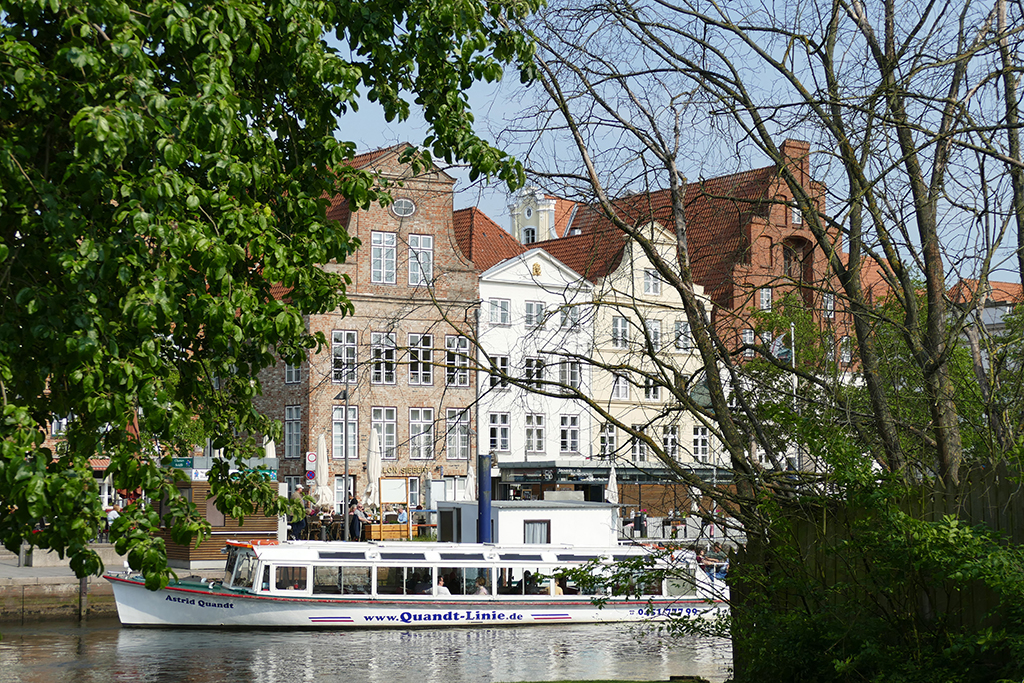
Of course, there are also public buses, but I really think you should rather prepare for lots of walking. And it will mostly be on cobblestone so don’t even think about wearing heels or other foolish footwear.
Best Place to Sleep
Obviously, you cannot stay either at the town hall or at St. Mary’s Church, but location-wise, the Motel One is really the next best thing: It is located just a stone’s throw from either of these landmarks and if you are lucky, you’ll have a view on them from your room; I had a partial view which was very enjoyable.
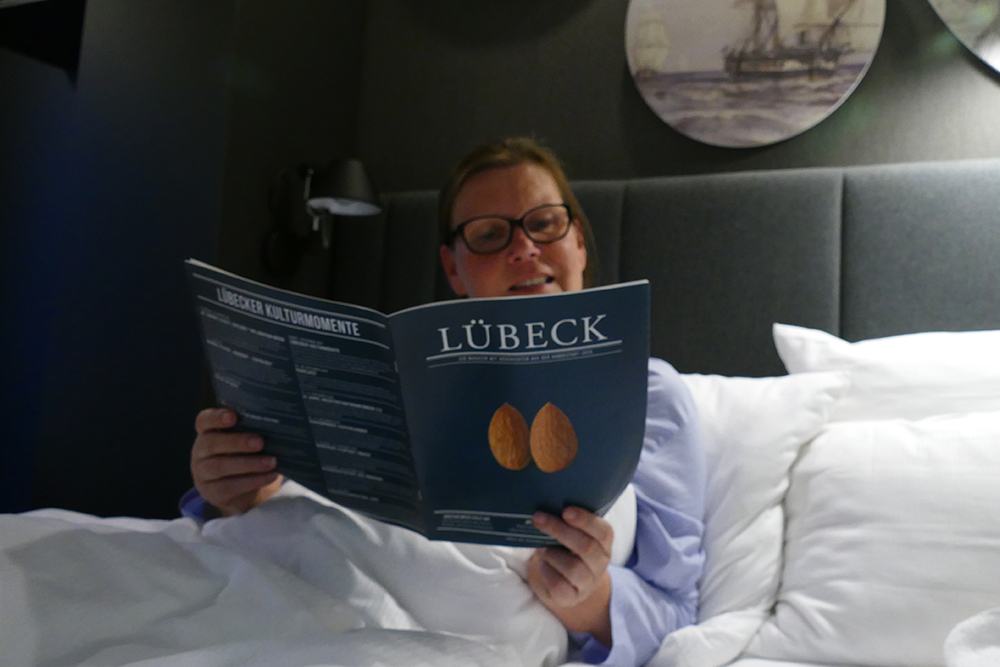
The Motel One hotel chain is getting very popular for a reason: You’ll get a really comfy room with everything you might need during a city break.

Breakfast is not overwhelming quantity-wise, but I appreciate very much that everything is organic and, in any case, you won’t leave the breakfast table hungry. Talking ’bout breakfast table: I really enjoy their approach to design. At breakfast, you are sitting at a long table decorated with stylish vases under paper lampshades, designed in an antique maritime fashion. And all this at a really reasonable price.

Following this link, you can check Motel One’s availability and rate *.
In case they are booked out, you can conveniently search for other great lodging options on this map*:
Best Place to Eat
Of course, there are many restaurants in Lubeck. Whether you are going for traditional North German cuisine or dishes prepared by the many immigrants like Turkish kebab or Asian food.

I’m actually introducing the two most important Cockaignes. When in Lubeck, you shouldn’t miss out on the Schiffergesellschaft and the Café Niederegger. I’m introducing the first one in the medieval chapter above and the latter in the shopping chapter below.
What to See
I’m an avid solo-travelling woman. Since solo travel doesn’t equal solitude, I love to join organized tours here and there. They allow me to meet fellow travellers – for just a short moment or a lifelong friendship.
Especially if you have only a short time for exploring the city of Lubeck, an organized trip will enable you to make the best of it*:
Best Place to Shop
Wanna see as much as possible of the stunning architecture and learn about the fantastic history – but also eager to shop around? Amazingly, in Lubeck, you can do both at the time: Some of the most important landmarks are great for doing your souvenir shopping, too!
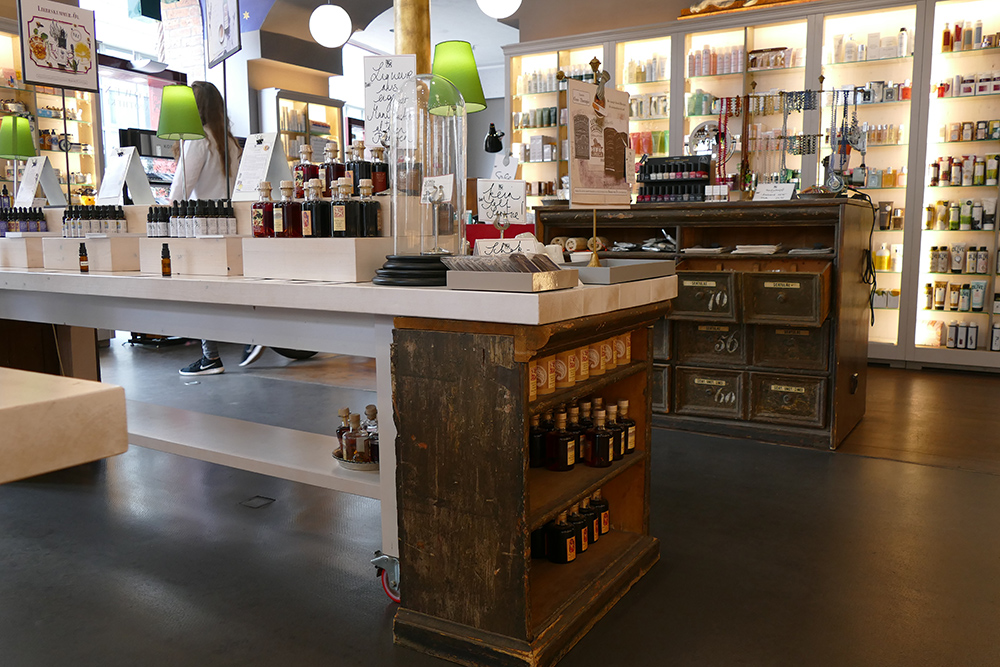
The Löwenapotheke, the Lion’s Pharmacy, is housed in Lubeck’s oldest building. Built around 1230, it was just another posh family home until in 1375, Emperor Charles IV paid Lubeck a visit – in the company of numerous entourage and Empress Elisabeth in tow.
She was accommodated in this house while Charlie stayed across the street. A wooden bridge was built so the two love birds could pay each other unobserved visits.

The house has been a pharmacy since 1812 and their handmade cosmetics and health care products make great gifts – to your body and those of your loved ones at home.
Löwen-Apotheke Dr.-Julius-Leber-Straße 13 23552 Lubeck Phone:+ 49 – 451 – 75 47 0 Email: [email protected]
The pharmacy is open on weekdays from 8 a. m. to 6:30 p. m. and Saturdays from 9:30 a. m. to 3 p. m.
A souvenir everyone will enjoy is real Lubecker Marzipan, marzipan from Lubeck, manufactured by J. G. Niederegger and brought in the cutest shapes since 1806. Even if you don’t like to eat it, you’ll love to look at the fruits, vegetables, fish, and teddy bears made from this sweet almond mixture.
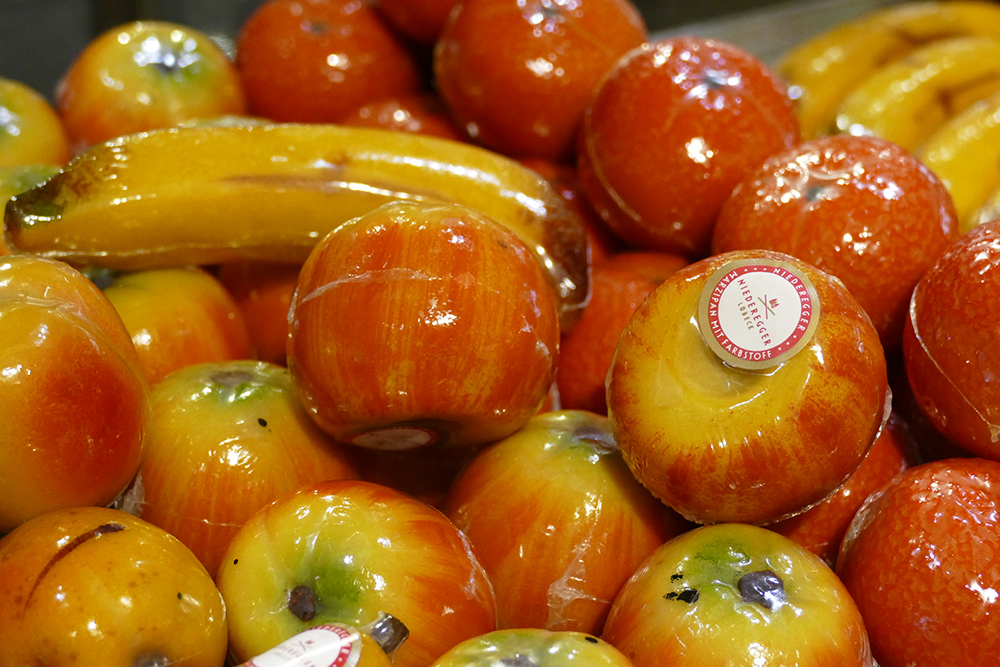
Niederegger produces 30,000 kilograms of marzipan daily – right here in Lubeck, otherwise, it wouldn’t be the real deal. Besides their signature product, they also have nougat, pralines, truffle, and cookies in store. Oh, not only in store, but also at their elegant café on the second floor where you can enjoy their famous nut cake, covered with a layer of marzipan.
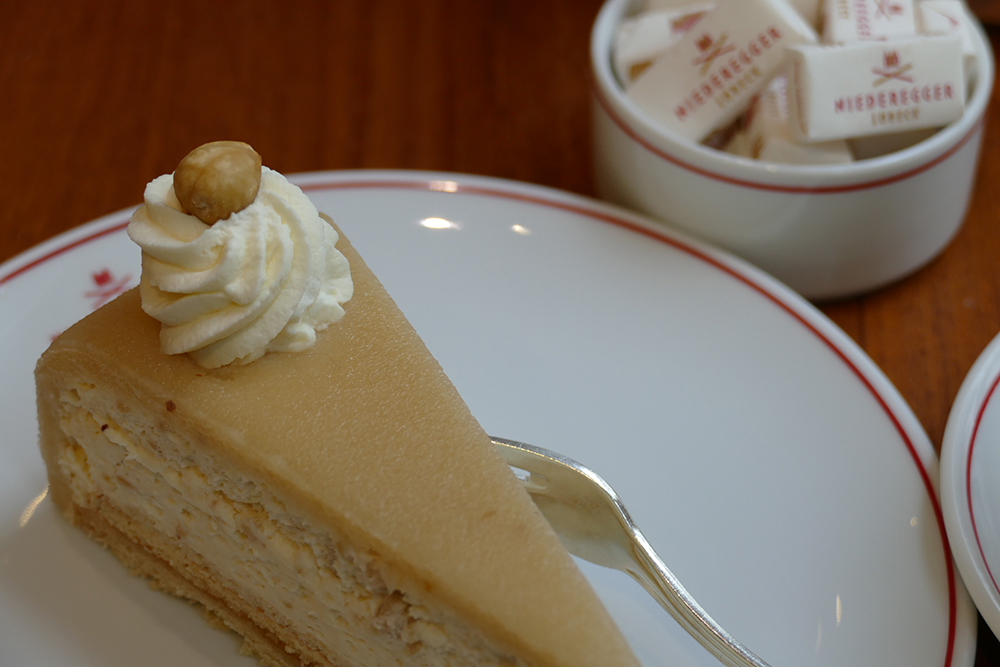
On the third floor, by the way, is a small museum where you can admire i. a. a group of twelve life-size statues depicting famous German men – yes, only men, it’s a scandal! The entrance is free, though.
Niederegger Breite Str. 89 23552 Lubeck Phone: + 49 – 451 – 530 11 27
Opening hours are weekdays from 9 to 7, Saturdays from 9 to 6, and Sundays from 10 to 6
Books and Stationery
A wonderful souvenir from Lubeck should be, of course, Thomas Mann-related. The Buddenbrookhaus has a lovely gift shop where you find each and every book this literally genius ever wrote – and, obviously, also books by his brother Heinrich, his son Klaus, and more. Don’t speak any German? They have some of the books also in English. Don’t speak any English? How are you reading this blog then? Just kidding!
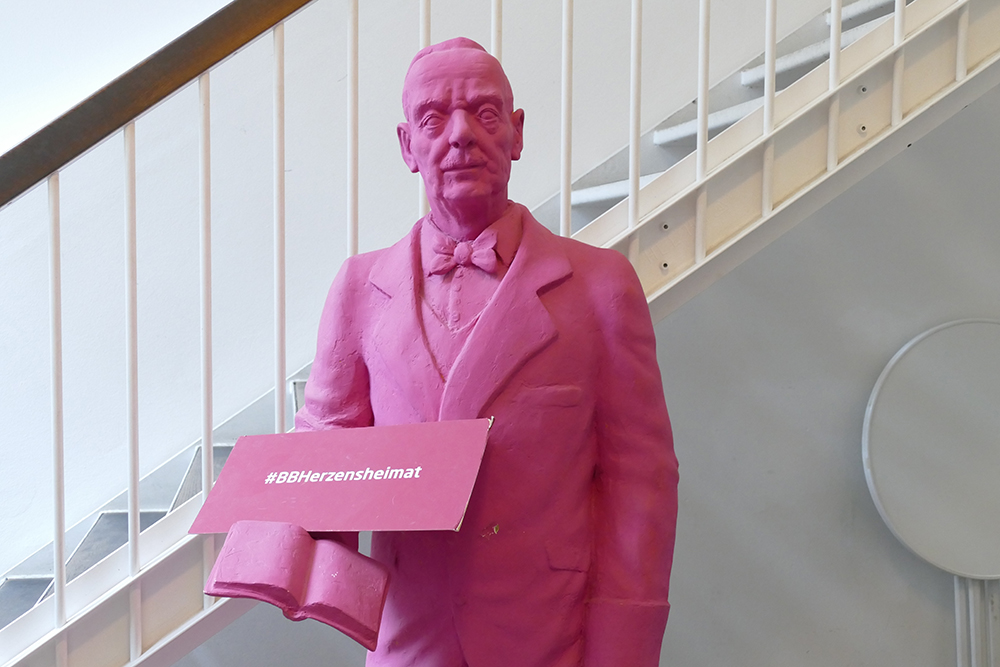
If you don’t want to purchase a book but still want a Mann-ish souvenir, they have lots of nice stationery like pens, notebooks, postcards, posters, and more in store; you’ll find something you like, I’m sure of that.
Buddenbrookhaus – Heinrich-und-Thomas-Mann-Zentrum Mengstraße 4 23552 Lubeck Phone:+ 49 – 451 – 122 41 90 Email: [email protected]
The museum, as well as the gift shop, are open daily from 11 a. m. to 5 p. m.
Since Lubeck is pretty touristy, credit cards are widely accepted, however, there are also ATMs all over the place.
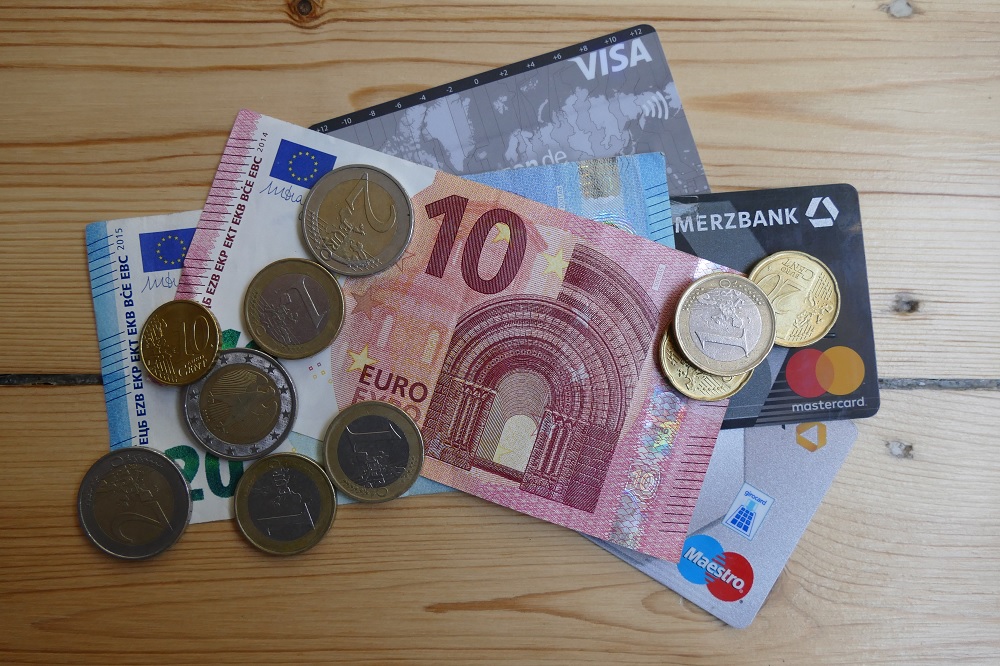
The exchange rate is 1 US$ = 1 €UR as of November 2022, but you can check the conversion on this page .
Most people in Germany have at least a rudimentary knowledge of the English language, many even speak it pretty decently. Lubeck gets quite a lot of international visitors, so at least with English, communication should be no problem at all.
However, for some useful words and phrases, you might want to practice a little with help from e. g. Babbel (the first lesson is for free and already supplies you with useful basic vocabulary).
* Note : In this article, I’m writing out some of the German names and places and you will notice that there are letters that might not exist in other languages. Most importantly for this article, there is the letter ü being pronounced more or less like the u in huge. Then there are also the vowels ä, which is very easy since it’s pronounced like an open e as in head, and ö that is pronounced approximately like the e in her. The letter ß, which exists only in the German alphabet, is by no means a B – it’s a ‘sharp’, double S as in kiss. When writing, you can actually replace it by a double S.
After having read this post down to here, do you still need further information or have specific questions? Of course, I’m here for you, but more importantly, so are the friendly and knowledgeable people at the
Lübeck und Travemünde Marketing GmbH Holstentorplatz 1 23552 Lubeck Phone: +49 – 451 – 88 99 700
This map should help you to find all the wonderful places that I’m introducing in this post.
If you choose to pin this post for later, please use one of these pictures:

Note: I’m completing, editing, and updating this post regularly – last in November 2022.
Did You Enjoy This Post? Then You Might Like Also These:
24 hours in DUSSELDORF

Best Street Art in HAMBURG

24 hours in MUNICH
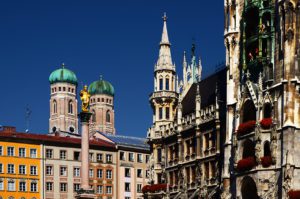
NordArt 2024: Everything You Need to Know Before Your Visit

A Visit to the Berlin Biennale 2022

We’ll Always Have Büdelsdorf – bye:myself at the NordArt 2017
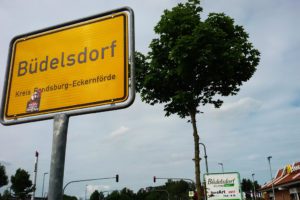
Weekend in FRANKFURT – 25 Best Things To Do
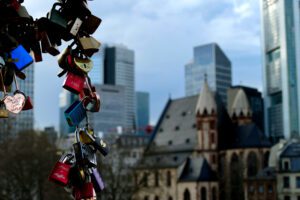
Büdelsdorf Revisited – bye:myself at the NordArt 2018
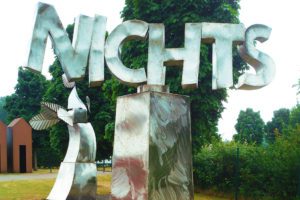
Disclaimer : I appreciate that Lubeck und Travemünde Marketing GmbH arranged free entrance to the city’s museums and landmarks, offered me a city tour, supplied me with vouchers to sample some delicacies at Niederegger and the Schiffergesellschaft and booked me into the MotelOne hotel. However, all opinions on these services are mine. They were in no way influenced by my cooperation partner. * This is an affiliate link. If you book through this page, not only do you get the best deal. Also, I get a small commission that helps me run this blog. Thank you so much for supporting me!
46 Replies to “LUBECK – a guide to Germany’s most ravishing city”
This post is certainly worth reading before viting Lubeck. Thanks for those tons of great tips on what to see when visiting the city.
I am totally blown away by your extremely comprehensive information for Lubeck. Wow and thank you! Living part-time in Hamburg, Lubeck has always been a frequented city for us. Because of your excellent article, I realize how much I have yet to explore. We head over there on Wednesday with notes from your post. One draw for us over there has always been lunching at the restaurant Ratskeller zu Lübeck.
I’m so happy for you! And so glad you like my post. Lübeck is my favorite German city. However, I’ve never been to the Ratskeller, I only know the Schiffergesellschaft – where it’s good, but mostly about the decor, obviously. Have another fantastic trip to Lübeck!
I never about Lubeck before reading your post and it is truly ravishing. The city hall square from top of tower looks stunning. I loved this city’s medieval architecture.
Lubeck is gorgeous! It’s easy to see how it reminds you of Venice. I’d love to visit some day and experience it in person.
You should – I’m sure you’ll love it!
This is a fantastic and in-depth article! There sure are a tonne of churches in Lubeck! lol. The architecture of all of them is beautiful. Reading about St. Mary’s and seeing the remnants of the shattered bell gave me goose bumps and had me envisioning what it was like for them during the bombing of WWII. Such a sad time in history.
Yes, the memorial – in this indirect lighting – is pretty intense; and a reminder of how precious it is to live in peaceful times in a peaceful region.
Lubeck is so impressive! I would say it is both Pisa (because of the leaning towers of Hosten Gate) and Venice combined plus the extra of the seven spires and all the other details. I was waiting to see all seven in a skyline pic, however.
You’re so right with the leaning buildings – Pisa it is 😀 Glad you liked my introduction 🙂
Wow! Lubeck is beautiful, charming, historical and cultural all at the same time. I had not thought of including it in my list of places to visit in Germany but now looks like I will have to revisit my list. And add it. Thanks for the comprehensive information collected here, I need to again come back and make notes when I get into my detailed planning on visiting Lubeck
It’s absolutely fascinating – and the famous marzipan makes also a great souvenir…not only on your hips 😉 Also – I just mentioned that briefly – you can go by public bus to the beach at Travemünde in only 20 minutes; that’s a huge perk not only in Summer.
I love this post so much. It is so cool that the old town is on an island! And Hosten Gate looks incredible. Thanks for adding another city to my list for my next visit to Germany!
Yap, if you have the chance to visit – go! It’s a dreamy place 🙂
please don’t forget Travemünde. I belongs to Lübeck and is always worth a trip.
You’re absolutely right – and I actually did mention it being about 20 minutes away. However, thanx, improvement is always appreciated 😉
Thanks for the information. Keep up the good work!
We have never been to Germany. But the history of this country fascinates the whole world. Lubeck seems to a wonderful place with a lot of history and a lot of activities to pursue. You have put together quite an exhaustive guide. Love the pictures too.
Thank you, I’m very glad you like it. You can see from my guide that one day in Lübeck is not enough 😉
- Pingback: All you need to know before going to GERMANY – bye:myself
- Pingback: RIGA - a guide to Latvia's entrancing capital – bye:myself
Indeed Lubeck is fascinating. That Holsten Gate must be seen in person. Perhaps a drone can capture the Seven Spires.
Lubeck seems more charming than Venice. Walking by those lifelike figures in that dimly light hallway would be unnerving. Motel One sounds like a fun place to stay.
Love the stories about Saint Mary's Church, especially the one about little Rosemary. How on earth did you find so much information about Lubeck? Must have taken a lot of leg work! I think this post should be published as an EBook too, because it's such an excellent guide.
Ooh the epochal Holsten gate looks like something out of a fairy tail, I'll shamefully admit I hadn't previously heard of Lübeck but it looks great
Lubeck has so much rich history and has such a status for the things they have accomplished over time! I would love to spend more time here! xo – Kam
What a great comprehensive guide to Lübeck. The old town is definitely deserving of the world heritage status – such quaint streets and architecture. The Holstentor gate is just picture perfect!
A town of three Nobel Prize winners: Thomas Mann, Willy Brandt and Günter Grass sounds interesting. And the architecture is lovely! Definitely putting Lübeck on my list of places to see in Germany.
Thanx for LÜBECK guide! Love the architecture & Thanks so much for all shots!
We only discovered Lubeck recently…planning to visit soon.
It is great to hear about a great cute town that is not suffering from over-tourism – even being a cruise excursion destination from the Baltic. Especially when it reminds you of Venice. Even if it is not because it is criss-crossed with canals. Such an interesting history for this small town. Such beautiful buildings. I love that the towers are crooked – and have been left that way. I would hope for a little luck from rubbing the horns of the devil!
…and if the devil doesn't work, there still is the mouse Rosemarie at the church.
Thank you for the detailed and rich history of Lübeck. I have to admit, until reading your post, I had never heard of the city. The old churches are magnificent and I'm glad many of them were restored. I've been to Germany before, and next time, I'll be adding Lübeck to the list.
…and you will also enjoy Lübeck's culinary side, I can promise you that!
so much history! And i love the architecture. How I wish I visited Lubeck when I traveled to Germany. thank you for sharing this detailed guide
She's been there for so long, she will wait for you to come back 😉
Such a historic place. It would be wonderful to tour this ancient city. I love all the buildings churches and history. The sores sound awe inspiring!
Yes, it's amazing how much great history they squeezed into this small city island 😀
I just spent 10 days in some Medieval villages of France and fell in love with the buildings. Luebeck looks equally as enchanting and a charming town to discover, with the added bonus of the water!
I think it will just blow your mind; and it's twenty minutes by bus from a beach on the Baltic sea….
On reading this, I simply asked myself why I have not been here yet. What an absolutely gorgeous place. And definitely close enough to qualify for an unplanned adventure in the not too distant future. Thanks for all the comprehensive info – is it wrong that I am already coveting a visit to the pharmacy as well as all the incredible buildings?
Nope, it's not. Good planning is key….but you should still leave room for surprises and dessert 😀
Smashing read. Germany has been on the bucket list for a good long while. I will absolutely saving this for future reference. Thanks so much for all the info!
The north is pretty much underrated – but I can only recommend it since it's so, so charming.
Wow! I did Lubeck as a day trip from Hamburg but I didn't think there was THAT much to do in Lubeck and I missed out on quite a bit. I remember walking around the old town walls and the cobble streets and going to a candy store and buying lots of sweets! 😀 But this was going back to 2008 I think, so my memory isn't that great. A revisit is needed me thinks.
Actually, just strolling up and down those cute streets is one of the best things to do there, anyway 😉
Leave a Reply Cancel reply
Your email address will not be published. Required fields are marked *
Save my name, email, and website in this browser for the next time I comment.
Sign me up for the newsletter!

Touropia Travel
Discover the World
17 Top Tourist Attractions in Lubeck, Germany
By Carl Austin · Last updated on May 4, 2024
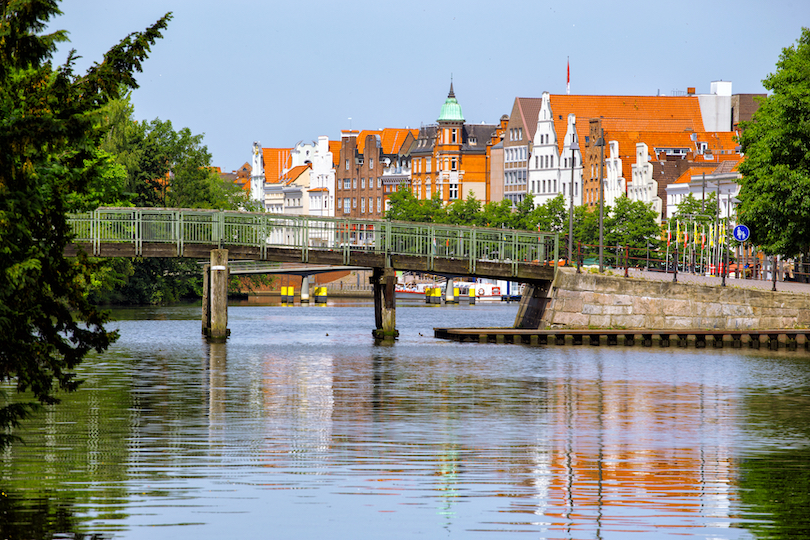
The northern Germany town of Lübeck has a rich history. It was once the most important city in the Hanseatic League when it was known as ‘Queen of the Hanse.” It was then, and is now, an important port on the Baltic Sea. Lübeck was so great that in 1375 Emperor Charles IV compared it to Venice, Rome, Pisa and Florence, which he referred to as the “glories of Europe.”
The city has a fascinating historic center just begging to be explored on foot. Some of the historic center was destroyed by World War II bombs, but attractions in Lübeck remain to give visitors a hint of the city’s former greatness.
Map of Lubeck
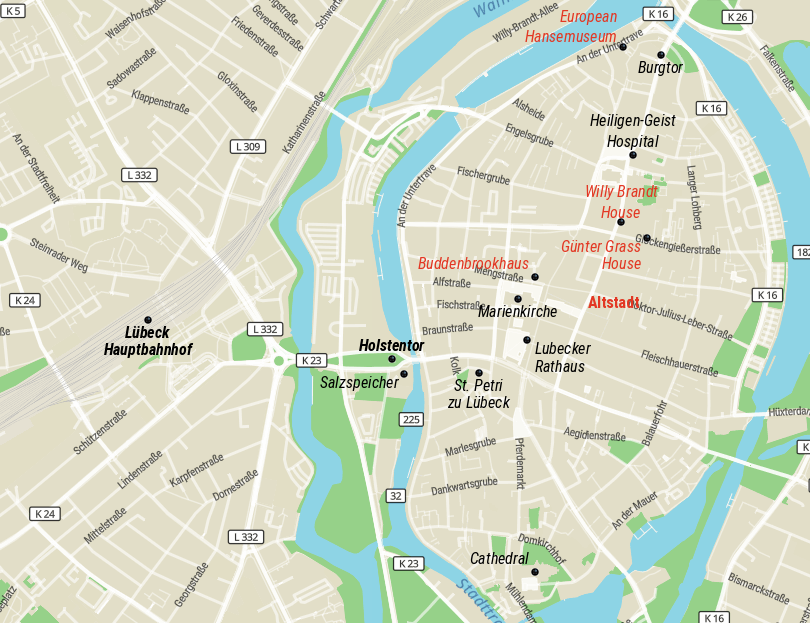
For those keen on experiencing Lubeck’s vibrant culture, there are lively events like the annual Medieval Fair and the popular Lubeck Christmas Market. In addition, there are several other things to do in Lubbock with charming cafes and restaurants, serving delectable treats such as the famous Lubeck marzipan.
17. Gunter Grass-Haus
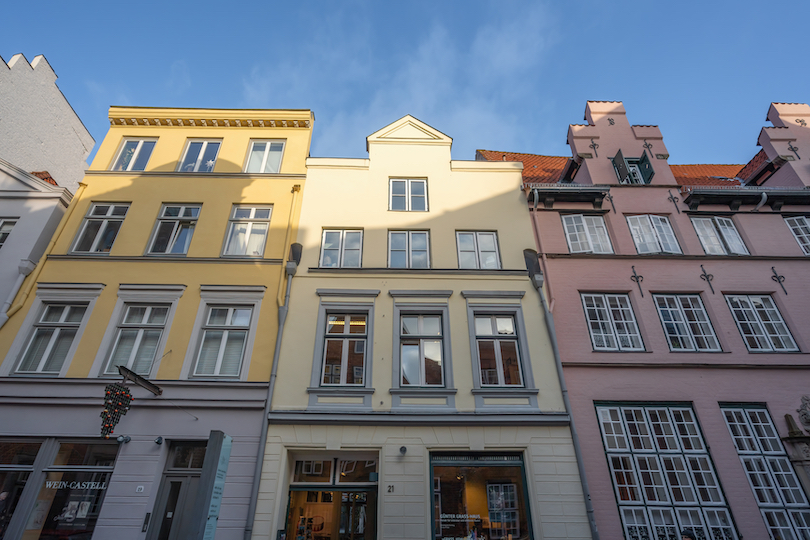
The Günter Grass-Haus is an interesting attraction in Lübeck’s old town, dedicated to the life and works of the Nobel Prize-winning author Günter Grass. This museum offers a fascinating insight into the writer’s life, his novels, and artistic creations.
Located in a beautiful historic building, the museum showcases an extensive collection of Grass’s original manuscripts, illustrations, and photographs. Visitors can also explore the interactive exhibition area, where multimedia installations bring Grass’s literary world to life.
For those interested in learning more about the famous writer, the museum offers guided tours. Not surprisingly, there is also an on-site bookshop, where you can find all of Grass’s novels, as well as related books and souvenirs.
16. Gothmund
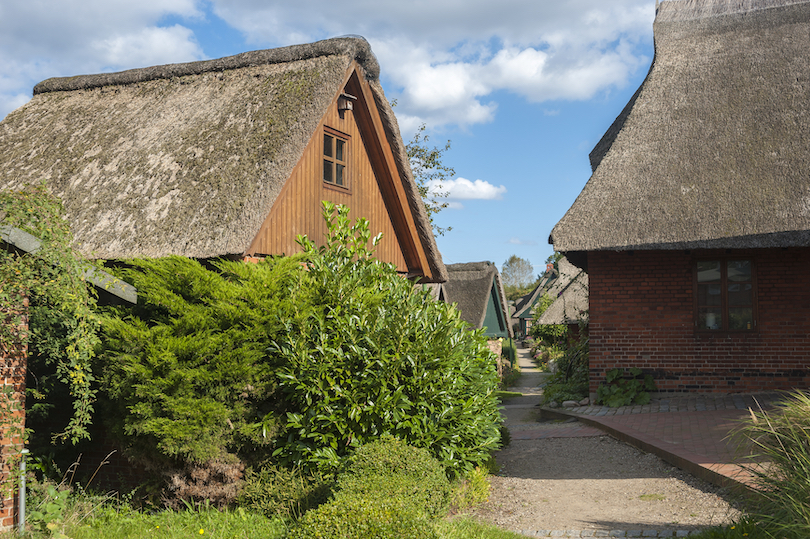
The quaint fishing village of Gothmund is located near Lübeck and offers visitors a charming experience of well-preserved historic houses and picturesque scenery.
The village is situated along the banks of the Wakenitz River, providing an ideal setting for leisurely strolls or relaxing picnics. Be sure to take a walk along the narrow, cobblestone streets and admire the colorful, thatched-roof houses. These traditional homes date back to the 18th and 19th centuries and are a testament to the region’s rich architectural history.
For nature lovers, Gothmund is home to a variety of bird species, making it a birdwatching paradise. In addition, visitors can also enjoy recreational activities like fishing or kayaking in the river.
15. European Hansemuseum
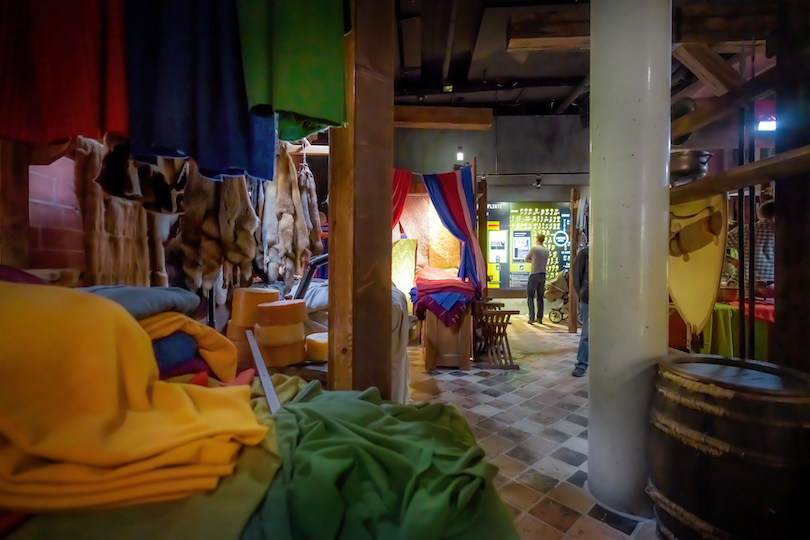
The European Hansemuseum in Lübeck offers a fascinating journey into the history of the Hanseatic League, a powerful trading alliance that dominated Northern Europe from the 13th to the 17th century. As you explore the modern, interactive museum, you’ll discover the rich and diverse cultural heritage of Lübeck and its role as a key player in the Hanseatic world.
Highlights of the European Hansemuseum include a meticulous reconstruction of a medieval merchant’s house, as well as a series of interactive exhibits that bring to life the daily experiences of traders, sailors, and artisans during Lübeck’s Hanseatic heyday.
Don’t miss the opportunity to stroll through the picturesque gardens of the museum and take a moment to enjoy the stunning views of the city’s historic skyline from the café’s rooftop terrace.
14. Willy Brandt House
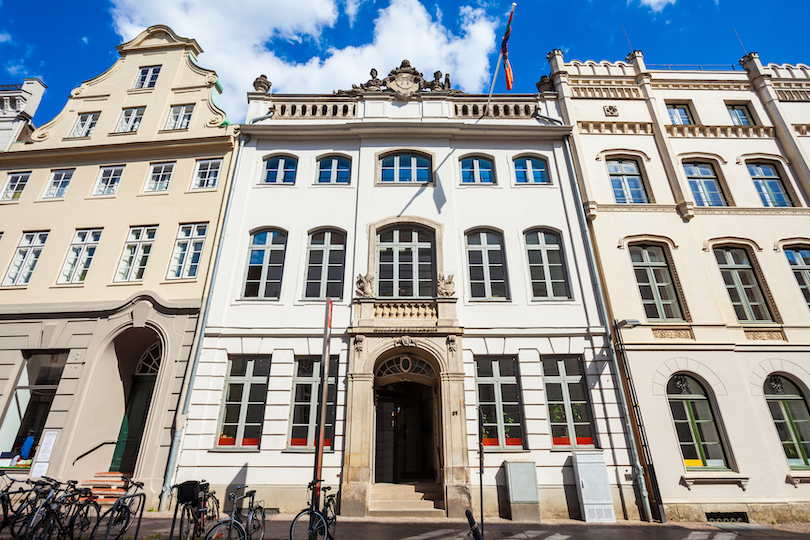
Located in the heart of the Old Town, the The Willy Brandt House lets you dive into the life and political career of one of Germany’s most influential leaders.
As you stroll through the exhibits, you’ll learn about Brandt’s early life, his rise to political prominence, and the lasting impact he made on German and international politics. Key moments in his career include his stance against National Socialism, influence on the Social Democratic Party, and his pivotal role in the Cold War.
Interactive displays, personal belongings, and a wealth of information make the Willy Brandt House an informative and engaging stop for both history buffs and casual visitors alike.
13. Salzspeicher
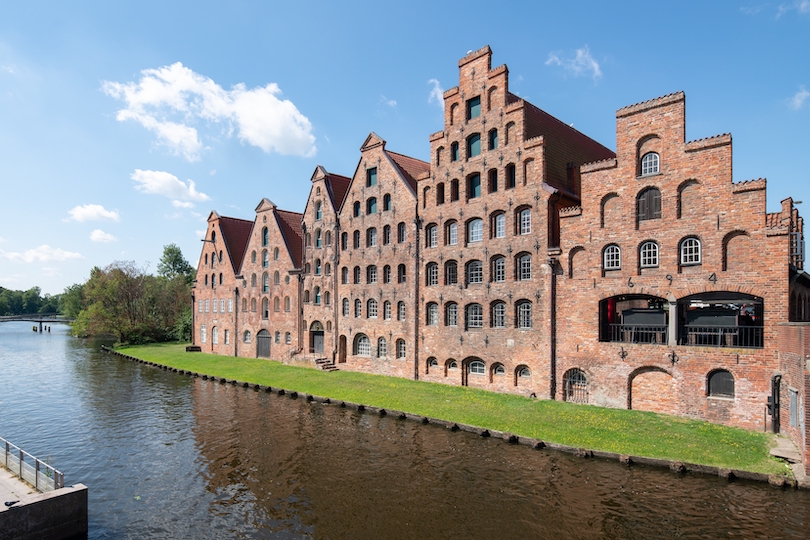
The Salzspeicher, or Salt Storage Warehouses, is a group of six historic brick buildings located next to the Holstentor. Built between the 16th and 18th centuries, they were once used for storing salt imported from the nearby salt mines.
These iconic structures serve as a testament to the economic power that Lübeck held during its days as a prominent member of the Hanseatic League. The warehouses are fine examples of the Brick Gothic architectural style that was prevalent in the region.
If you’re keen on making insta-worthy photos, the Salzspeicher offers a picturesque backdrop with local fishermen’s boats lining the River Trave in front of the warehouses. You can also enter one of the warehouses to explore the history of the Hanseatic League and its relation to the salt trade in a small museum.
12. Eat Marzipan
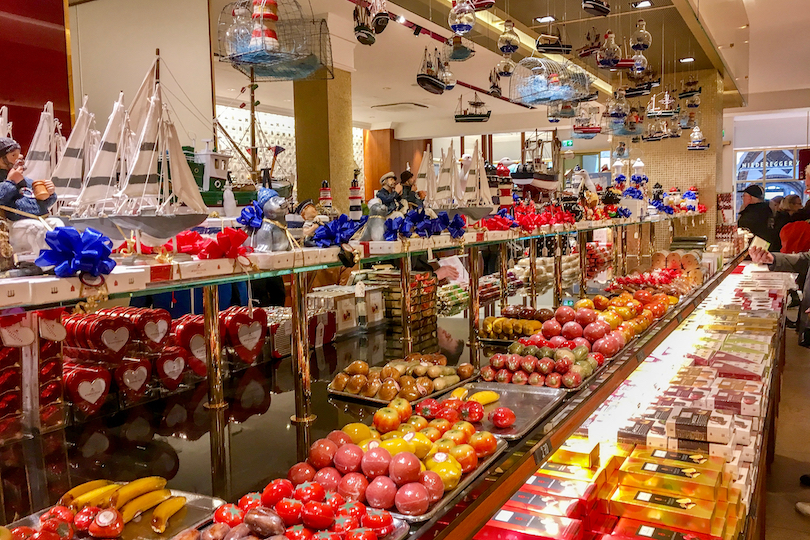
Lubeck is known for its delectable marzipan treats. The city’s long history with marzipan dates back to the Middle Ages, when it was first introduced to Europe from the East.
Niederegger, Lubeck’s most famous marzipan maker, located in the heart of the city. The store offers a variety of marzipan creations, from simple bars and shapes to intricate, handcrafted designs. Take a look at their small museum to learn more about the craft and its importance to Lübeck’s history.
In addition to Niederegger, there are several other marzipan shops and cafés worth trying. Look for locally-produced marzipan products and let your taste buds guide you in discovering the best of what Lubeck has to offer.
11. Burgtor
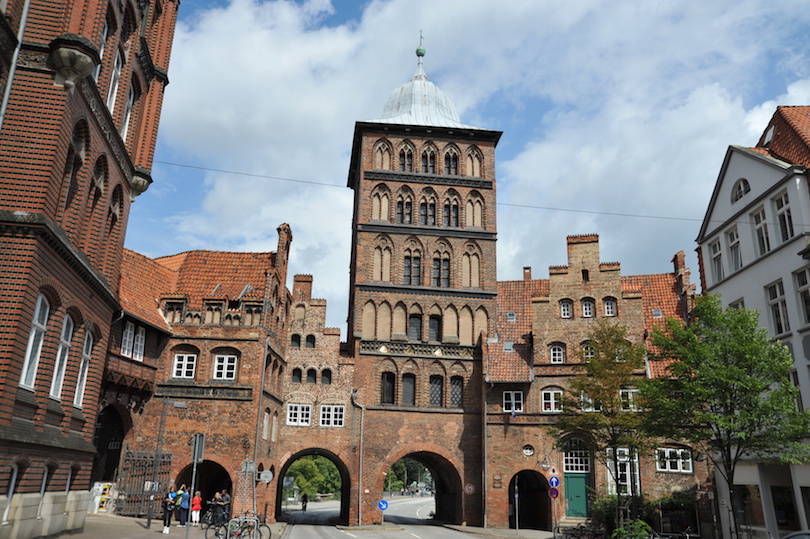
Burgtor is the northern city gate in Lubeck. Built in 1444, it is one of two remaining from the four towered gates that were built in medieval times. It takes its name from the castle that stands across the Trave River.
Located in old Lübeck, the castle gate has buildings constructed on top and around it. A Romanesque tower was added to the Late Gothic gate. This medieval gate is quite impressing, though the paved streets carrying automobiles somehow seems incongruous to its historic past. A plaque on the gate walls commemorates Napoleon entering the city in 1806.
10. Passat Ship
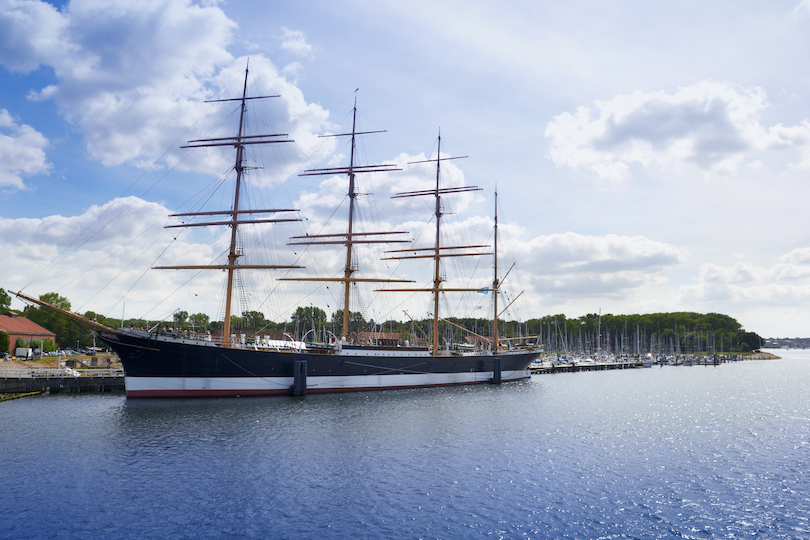
This tall sailing ship was built in 1911 in Hamburg and sailed between South America and Europe. Although she no longer carries heavy freight across the world’s seas, this elegant sailing ship reminds visitors of the time when the Passat defied high waves under full sail and has become the maritime symbol of the Baltic resort of Travemünde.
While visiting the Passat Ship, you can explore its four masts, stroll on the expansive deck, and learn about the ship’s history and maritime traditions. Inside, you’ll find exhibitions detailing the ship’s past adventures, including its former roles in the international grain trade and as a training vessel for young sailors.
Additionally, the Passat Ship hosts special events and gatherings, such as maritime festivals, markets, and even weddings.
9. Buddenbrookhaus
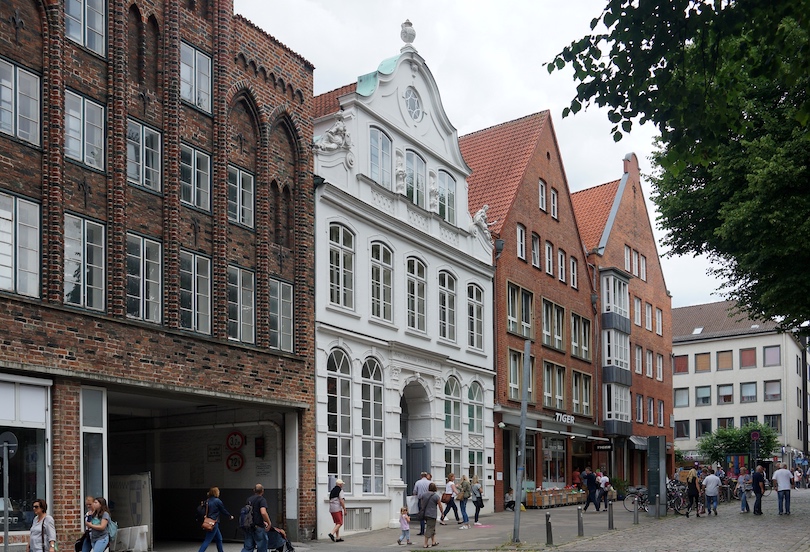
Buddenbrookhaus is an elegant townhouse at Mengstrasse 4 in Lubeck. Built in 1758, it was the boyhood home of writers Thomas and Heinrich Mann. Located across from St. Mary’s Church, the house was almost totally destroyed during World War II bombing; only the façade remained standing.
The house was not rebuilt as it once was, but the façade was left and a museum honoring Thomas Mann was built behind it. The house was a setting for the family saga Mann wrote about in his book Buddenbrookhaus. This museum is a must-see for Mann’s fans.
8. Lubeck Cathedral
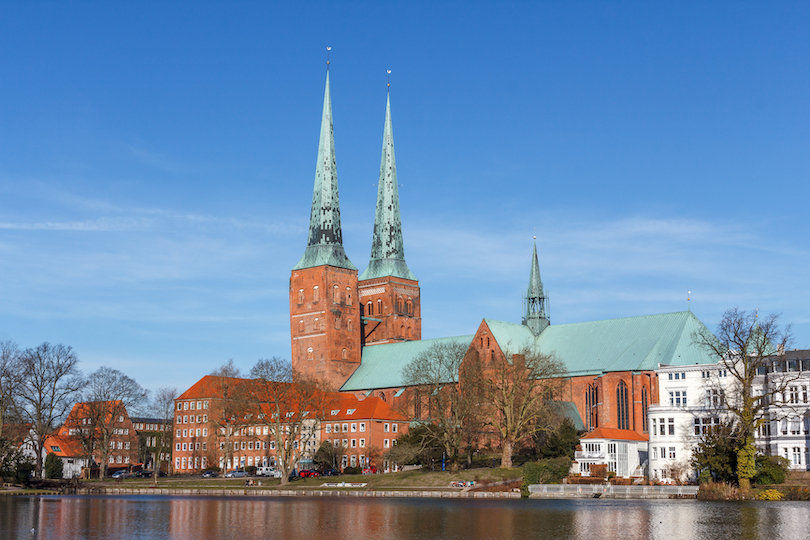
Lubeck Cathedral dates back to the 12th century when Henry the Lion had the Romanesque structure built for the bishop of Lübeck. The imposing structure is one of the oldest monuments in Lübeck. The Lutheran cathedral was partly destroyed during an air raid in World War II.
An altar dating back to 1696 and a priceless organ were destroyed, though a large crucifix and many medieval polyptychs were saved and can be seen today. Reconstruction of the church ended in 1982. Restoration efforts included adding an elevator to take visitors to the top of the bell tower.
7. Lubecker Rathaus
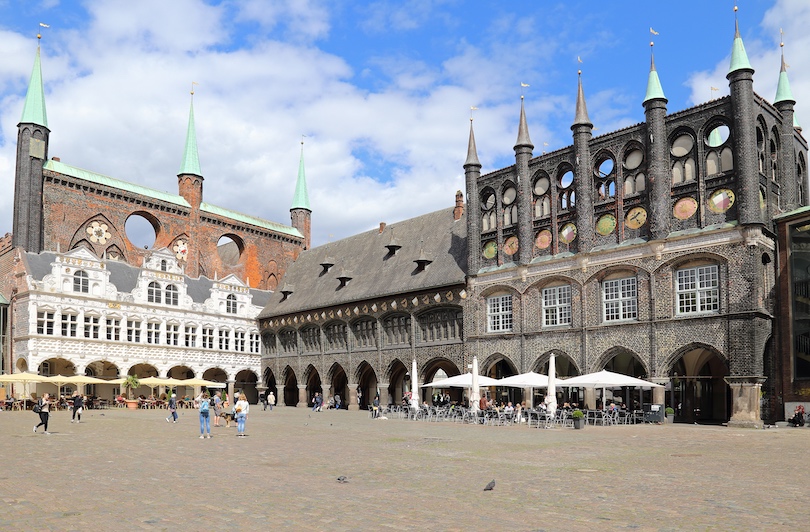
Lübecker Rathaus is one of the most spectacular and important town halls in Germany. It is particularly splendiferous when lit up at night. The town hall started out in 1230 as three gabled houses built on the market place. It expanded over the years until it was large enough to hold Hanseatic meetings.
The interior of the town hall can be visited on daily guided tours. Once inside, visitors should note the different heights of the courtroom doors. Persons found innocent of crimes left by the higher door, while criminals left the courtroom via the shorter door.
6. Heiligen-Geist-Hospital
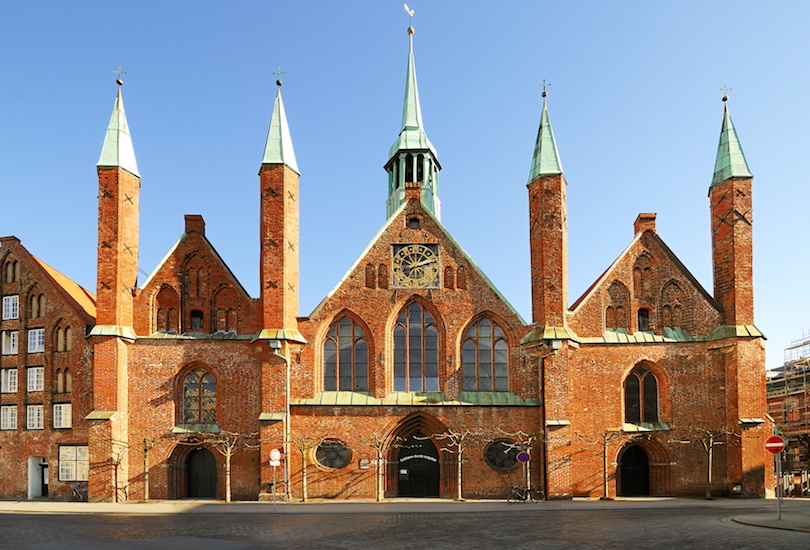
From the outside, Heiligen-Geist-Hospital doesn’t look much like a hospital with its pointed roofs and spires reaching into the sky. But, the Holy Spirit Hospital has been caring for the sick and aged since the 13th century. Parts of it are still in use as a hospital today.
Today‘s visitors rave about the beautiful chapel and original frescoes; they say the church-like building is one of the must-see attractions in Lübeck. The city’s Christmas market is held here every year, giving shoppers the chance to see cubicles where retirees lived.
Located in the old town, the hospital also hosts a November crafts fair featuring items made by senior citizens.
5. Marienkirche
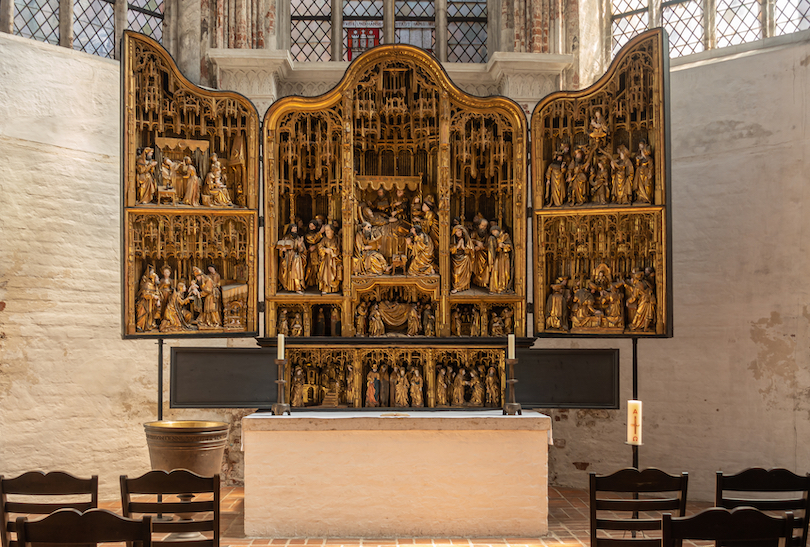
Marienkirche (St. Mary’s Church) dominates the Lübeck skyline with towers reaching more than 120 meters (400 feet) toward the sky. Built more than 700 years ago, this Brick Gothic church was the model for many other churches in the Baltic region.
Located in the old Hanseatic merchants quarter, Marienkirche is the most important church in Lübeck. With the tallest brick vault in the world, the church resonates with music, from organs to 11 historic bells to the Lübeck boys choir, famous for singing St. John Passion on Good Friday.
The church and many important pieces of art were destroyed in the 1942 air raid. Many paintings, however, were saved and can be seen in the reconstructed church.
4. St. Petri zu Lubeck
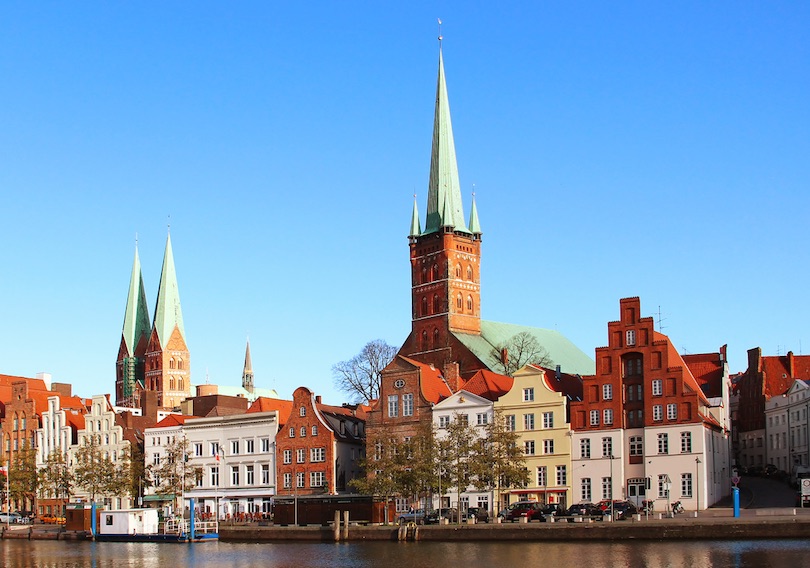
The St. Petri is the place to go to see great views of Lübeck. Heavily damaged by World War II bombing, restoration work on this 12th century church is still underway, mainly on the interior now. Reconstruction efforts include an elevator to whisk visitors to the top for impressive 360-degree views of this medieval city; the best time to make the trip is sunset.
If you’re interested in architectural details, take the time to explore the church’s intricate medieval carvings, the notable organ, and the interesting mix of Gothic and Renaissance elements at St. Petri zu Lübeck.
Regular church services are not held yet but this stately church is used as a venue for cultural and art events.
3. Travemunde
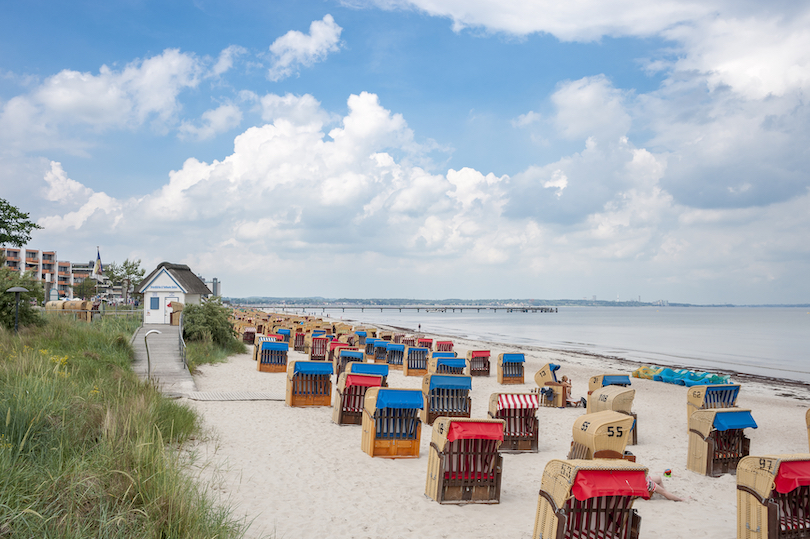
Travemünde is an old seaside resort at the mouth of the Trave River that ends in Lubeck Bay on the Baltic Sea. Founded in 1187, this picturesque sleepy section of Lübeck was once important in the Hanseatic League and is also a port where visitors can catch ferries to Scandinavia and other Baltic states.
The community has less than 15,000 permanent residents, with thousands of tourists flocking to the area on weekends. The sandy beach is its most popular attraction. The old town, with its nautical-named streets, is worth exploring on foot. Travemünde was the setting for many scenes in Nobel laureate Thomas Mann’s novel, Buddenbrooks.
2. Explore the Altstadt
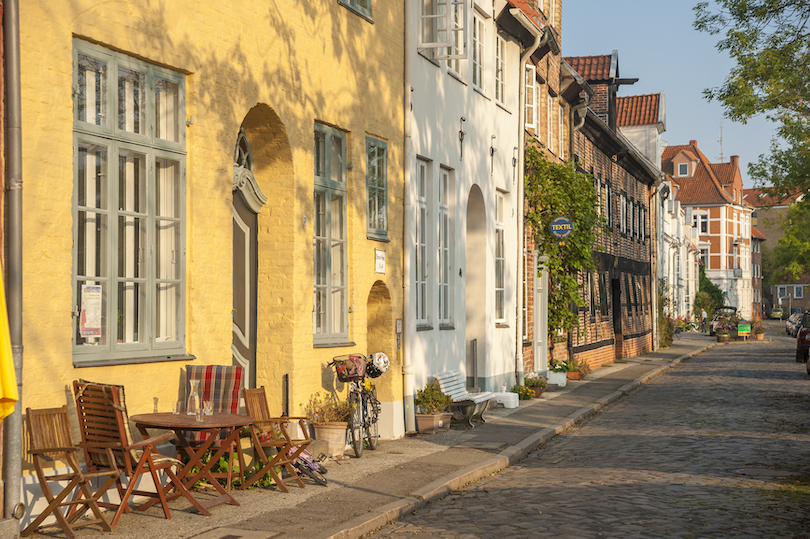
One of the most fun things to do in Lubeck is wandering through it’s beautiful Altstadt, or Old Town. The area boasts UNESCO World Heritage status and invites you to discover its many treasures.
Begin your journey at the famous Holstentor, an iconic 15th-century gate that has become a symbol of Lubeck. With its distinctive twin-tower design, it’s impossible to miss
Wandering through the cobblestone streets of the Altstadt will take you past several impressive churches like St. Mary’s and St. Peter’s, both boasting Gothic-style architecture and exquisite artwork. Some other notable sights include the Rathaus, an ornate Gothic and Renaissance-style building, and the elegant Willy Brandt House.
History buffs may want to visit the Buddenbrookhaus, a museum dedicated to the works of Thomas Mann, one of Germany’s greatest novelists. If you’re a fan of marzipan (and who isn’t), make sure to stop by the famous Niederegger Café, where you can enjoy delicious marzipan treats and learn about the history of this sweet confectionery.
While exploring the Altstadt, don’t forget to take a leisurely stroll along the lovely Trave River promenade. With its picturesque setting and vibrant atmosphere, it’s the perfect spot to relax and soak in the unique charm of Lubeck.
1. Holstentor
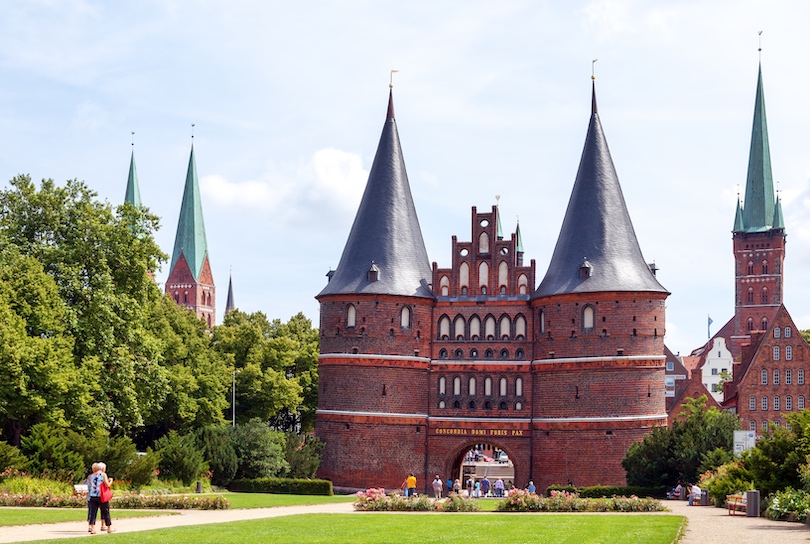
The Holstentor is one of the two remaining city gates of the city of Lübeck. Built between 1464 and 1478, it is regarded as a symbol of Lübeck due to its two captivating round towers and arched entrance.
Oddly enough, in 1863 it was decided by a majority of just one vote not to demolish the gate but to instead extensively restore it. The gate was in very bad condition, since every year it had sunk a few centimeters further into the ground. The Holsten Gate was thoroughly restored and the movement was halted.
Within the Holstentor, you’ll find a fascinating museum that offers insights into the gate’s history, weaponry, trade, and on Lübeck’s medieval mercantile glory days. Discover authentic artifacts and interactive exhibits that bring the past to life.
Where to Stay in Lubeck
When visiting Lübeck, there are a variety of accommodation options to choose from, catering to different budgets and preferences.
For those who appreciate history and charm, consider staying in a traditional Altstadthaus (Old Townhouse) or a classic Lübeck-style guesthouse. These accommodations offer a glimpse into the city’s rich past and often feature unique architectural details, such as exposed wooden beams and ornate stucco work.
If you prefer modern amenities, several chain hotels and boutique establishments are scattered throughout the city.
The four-star Atlantic Hotel Lübeck is located in the heart of the city in walking distance from the historic Market Square and other popular attractions. The hotel boasts modern and spacious rooms with all the amenities you could want.
Hotel KO15 is a great budget option for travelers looking for a comfortable stay in Lübeck. This boutique hotel has a stylish atmosphere, with contemporary design and high-quality furnishings. It is centrally located, close to the Marienkirche and the Buddenbrooks House.
How to get there

Lübeck is easily accessible by various modes of transportation. It’s located in northern Germany, just a short distance from the popular city of Hamburg. The nearest international airport is Hamburg Airport, about 67 kilometers away. From the airport, you can take a train or rent a car to reach Lubeck.
Lubeck has its main train station, Lubeck Hauptbahnhof, which is well-connected to other German cities such as Hamburg, Kiel, and Berlin. Intercity-Express and regional trains frequently operate in and out of Lubeck Hauptbahnhof, providing a comfortable travel experience.
If you prefer driving, Lubeck can be reached via the A1 and A20 motorways. The A1 runs from Hamburg to Lubeck, while the A20 connects Lubeck with Rostock and other cities along the Baltic Sea coast.
Approximate travel times:
- Hamburg – 45 minutes by car, 30 minutes by train
- Kiel – 1 hour by car, 1 hour by train
- Rostock – 2 hours by car, 2 hours by train
- Berlin – 3 hours by car, 2 hours 30 minutes by train
- Copenhagen (Denmark) – 3.5 hours by car, 3 hours by train and ferry
- Amsterdam (Netherlands) – 6 hours by car, 6 hours by train
- Frankfurt – 6 hours by car, 4 hours 30 minutes by train
Best Time to Visit Lubeck
As it lies just inland from the Baltic Sea at the mouth of the Trave River, Lubeck’s climate is massively impacted by the bodies of water around it. While its summers are reasonably warm and sunny, winters are long, cold, wet and rainy.
With average temperatures ranging from around 17 to 22°C (62-71°F), May to September is the best time to visit. This is when the weather is perfect for both sightseeing and enjoying scenic boat trips up the river. You can even lounge on its Baltic beaches and swim in the sea if you don’t mind quite cool water! It can rain though even in summer so pack a light coat.
The summer months also see a sailing regatta, concerts and other events take place for the Travemunder Woche festival, just up the coast, while the Duckstein Festival instead focuses on art and gastronomy. This period is, however, the busiest and priciest the Altstadt gets.
While April and October can still be pleasant, if unpredictable weatherwise, November til March is best avoided due to the cold and increased rain. The only exception is in December when the wonderful Weihnachtsmarkt and famous handicrafts Christmas market take place.
Share this post:
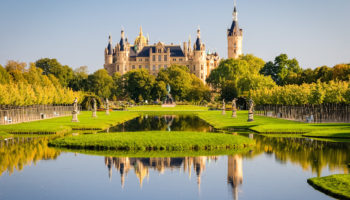
10 Most Amazing Destinations in Northern Germany
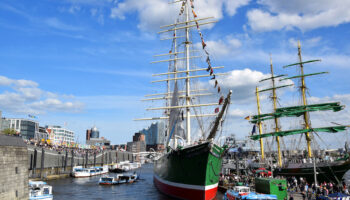
23 Best Things to do in Hamburg, Germany
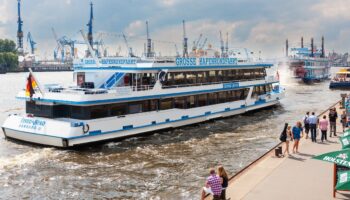
10 Most Underrated Destinations in Germany
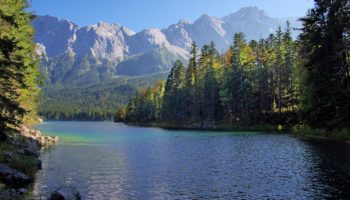
12 Most Beautiful Lakes in Germany
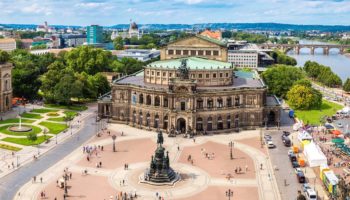
22 Top Tourist Attractions in Dresden, Germany
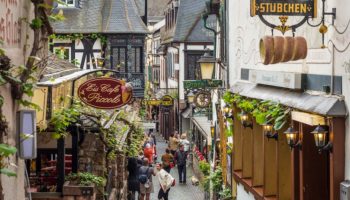
14 Most Scenic Small Towns in Germany
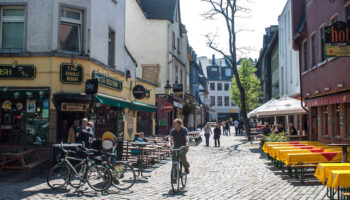
18 Best Things to do in Frankfurt, Germany
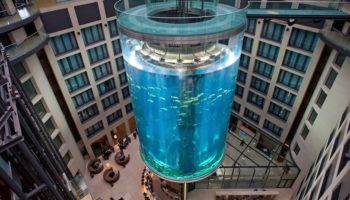
11 Most Amazing Hotels in Germany
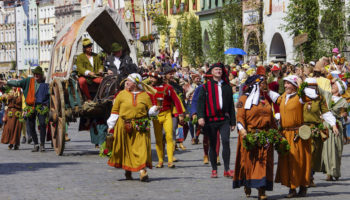
17 Best Places to Visit in Bavaria, Germany
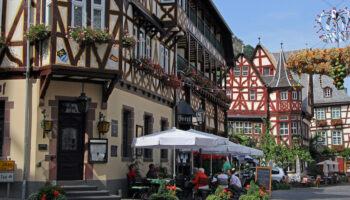
17 Best Places to Visit in Germany
Reader interactions, leave a reply cancel reply.
Your email address will not be published. Required fields are marked *
This site uses Akismet to reduce spam. Learn how your comment data is processed .
- Search Please fill out this field.
- Newsletters
- More to Explore
Where to Stay
Lübeck: planning your trip.
:max_bytes(150000):strip_icc():format(webp)/ebephoto-5b7352c3c9e77c005080d5ad.jpg)
A Bit of History
Planning your trip, things to do, what to eat and drink, getting there, money saving tips.
TripSavvy / Christopher Larson
For a healthy dose of medieval history, architecture, UNESCO World Heritage Sites, historic ships, Christmas markets, marzipan, and epic hikes on your next European vacation, head to Lübeck, Germany.
Located in Northern Germany about an hour from Hamburg, the city has come a long way from its early beginnings as a Trave River trading post on the way to the Baltic Sea. Today, Lübeck appears much as it did in medieval days and has regained its throne as the Königin der Hanse (Queen City of the Hanseatic League). It's one of several major German ports, and like other Hanseatic cities (medieval merchant hubs like Bremen , Rostock , and Stralsund), everything seems to revolve around its connection to the water.
So where do you begin? Consider this your guide to the best places to see, stay, eat, and play on your next trip to Lübeck, one of Germany’s most underrated cities .
Originally founded in the 12th century as a trading post along the Trave River, which leads to the Baltic Sea, Lübeck's oldest section is on an island, completely encircled by the river, a strategic location that allowed the city to flourish. By the 14th century, it was the largest and most powerful member of the Hanse (Hanseatic League), with Emperor Charles IV placing it on par with Venice , Rome, Pisa , and Florence as one of the five "Glories of the Roman Empire.”
World War II had a dramatic effect on Lübeck, just as it did the rest of the country, with RAF bombs destroying about 20 percent of the city, including the cathedral. Miraculously, many of its 15th- and 16th-century residences and the iconic Holstentor (brick gate) were spared. After the war, as Germany was divided in two, Lübeck fell in the West but lay close to the border with East Germany , and the city grew rapidly with the influx of ethnic German refugees from former Eastern provinces. To accommodate its growing population and reclaim its importance, Lübeck rebuilt the historic center, which in 1987 was designated by UNESCO as a World Heritage Site.
The Burgkloster (castle monastery) contains the original foundations of the city's long-lost castle, while the Koberg area, including Jakobi Church and the Heilig-Geist-Hospital , is a fine example of a late 18th-century neighborhood. More churches (Petrichurch in the north and the Dom , or cathedral, to the south) surround Patrician residences from the 15th and 16th centuries. Seven church steeples punctuate the city skyline; Marienkirche (Saint Mary's) is one of the oldest from the 13th century. The Rathaus (town hall) and Markt (market place) each display the effects of WWII bombings but are still quite spectacular. Elements of Lübeck's working past remain on the Left Bank of the river in the form of Salzspeicher (salt storehouses), while the Holstentor , built in 1478, is one of only two remaining city gates; the other, Burgtor , dates back to 1444.
- Best Time to Visit : Shoulder season months like May and September are best for mild weather and fewer crowds. Summers are warm with lots of humidity, while winters can be particularly cold due to the city's proximity to the Baltic Sea.
- Language: German is the official language, while Danish and other regional German dialects can also be heard throughout the Schleswig-Holstein state. English is typically taught at schools in Germany, but learning a few phrases in German can certainly go a long way toward endearing you to the locals.
- Currency: The euro is the official currency of Germany. Cash is preferred and is used almost exclusively in smaller cities and towns, though Visa and MasterCard are generally accepted (American Express and Diners Club cards, not so much).
- Getting Around: Lübeck is a very walkable city, with many streets open to pedestrians only or for cars driven by guests of local hotels. Buses and trains are available at stations located just outside the city center, linking it to other locales around northern Germany.
- Travel Tip: Lübeck has an enchanting Weihnachtsmarkt (Christmas market) from late November until Silvester (New Year’s Eve) . Just remember to pack your parka.
History buffs will love Lübeck, home to a historic Old Town that’s now a UNESCO World Heritage site and medieval churches and structures dating back to the 12th century. It’s also where you’ll find interesting museums like the Günter Grass-House, a fine arts museum named for the Nobel laureate, and the Buddenbrook House, a stunning Baroque-style building dedicated to the life of Thomas Mann, another Nobel laureate.
- Lübeck was the only other city besides Berlin to be located along the border between East Germany and West Germany during the Cold War and you can learn more about its unique position at the Lübeck-Schlutup Border Documentation Site. If you’re really into hiking, take on the German Border Trail , an 865-mile (1,393-kilometer) path that passes through Lübeck along the former site of the Iron Curtain and stretches south to the German city of Mödlareuth.
- A visit to Lübeck is not complete without taking some time to enjoy the waterfront, where historic ships like the Fehmarnbelt and the Lisa von Lübeck are moored in the harbor and welcome visitors (pending Germany’s Covid-19 restrictions).
- To get in the water, visit one of Germany's best beaches at nearby Travemünde, or Timmendorfer Strand, each about a 20-minute drive from Lübeck's city center.
After a classic German meal of sausage and sauerkraut , satisfy your sweet tooth with an original Lübeck treat. Proud Lübecker claim marzipan as their own (although contrary theories place its beginnings somewhere in Persia). No matter its origin story, Lübeck is famous for its marzipan, with renowned producers like Niederegger . You’ll also want to try Kolsteiner Katenschinken (cured ham that’s smoked for eight weeks), Holsteiner Tilsiter (a favorite regional cheese), and locally sourced fish like herring and carp. The region is also known for Dooley’s, a liqueur made with vodka, Dutch cream, and Belgian toffee, as well as Pharisäer , a tasty concoction made of coffee, rum, and whipped cream.
Read more about the best foods to try in Germany and our in-depth guide to schnapps, German wine, and everything else you should be drinking besides beer .
Whether you prefer to stay in big-brand or independently owned hotels, bed and breakfasts, hostels, or vacation rentals, there are accommodations to suit every taste and budget in Lübeck. To really experience the city and meet its people, consider renting a local apartment through a vacation rental service like Airbnb or VRBO. If you plan to base yourself in Lübeck, stick to the easily walkable Old Town, where most chain and independent hotels are located in historic buildings. Accommodations are also available just outside town in the greater Schleswig-Holstein region for those who prefer to spend more time in the German countryside. If you're short on time and only plan to visit Lübeck as part of a day trip, consider staying an hour away in Hamburg or in nearby Travemünde if you'd prefer to be near the beach or are planning to take the ferry.
Discover some of the best places to stay during your visit, including Germany's most unique hotels, castle hotels, and top hostels .
The closest international airport is about an hour away in Hamburg, though if you’re coming in from the U.S., you’ll likely need to connect via another European airport or a larger German airport like Frankfurt, Munich, or Berlin first. The city is well connected by motorway and train. If traveling by car , take the Autobahn 1, which connects Lübeck with Hamburg and leads all the way up to Denmark. If traveling by train, the Hauptbahnhof (train station) is located within the city to the west of the island, offering commuter trains to and from Hamburg every 30 minutes on weekdays, plus connections around the country and abroad. Ferries from nearby Travemünde offer connections to Finland, Latvia, and Sweden. For ferries to Denmark, make your way to Kiel, Fehmarn, or Rostock along Germany’s Baltic Coast.
- To travel frugally in Germany, do as the locals do: stick to public transportation, pick up food from local markets instead of constantly eating at restaurants, diversify your accommodations (try renting an Airbnb or VRBO instead of splashing out for a fancy hotel) and walk or hike as much as possible.
- Lübeck’s tourism board website lists a number of free self-guided walks so you can set off and explore the city's historic sites and medieval churches at your own pace.
- Each year, Lübeck hosts events like Museum Night (when museums remain open until midnight), Theatre Night (when you can see puppet, dance, improv, and musical performances in any theatre around town), and Große Kiesau Night (open house at several literary houses around Old Town), that let you experience several museums, shows, or readings for the price of one ticket.
Save even more money with our guide to the cheapest ways to get around Germany by train .
Related Articles
More related articles.
results Sorry, we didn't find a result for you!
${doc.title}
${doc.teaser}
THE HEART OF THE CITY
Lübeck’s island-shaped old town.
NORDIC BEAUTY WITH STYLE
Lübeck’s Old Town is completely surrounded by water and has all the maritime charm to go with it. The impressive brick architecture of the merchants' houses and churches is still the hallmark of this Hanseatic town, which was founded in 1143 as the first port on the Baltic Sea and has been a UNESCO World Heritage Site since 1987. Take a relaxed stroll through the medieval alleyways, immerse yourself in the pulsating life behind the old walls and discover the true meaning of Nordic beauty. Experience the unique diversity of the listed architecture and the hidden world of the historical residential alleys and courtyards.
FASCINATING DIVERSITY
UNESCO World Heritage Site Holsten Gate Churches Town Hall Hospital of the Holy Spirit Castle Monastery Museum Harbour Seafarers' Guild Alleys & Courtyards
Shopping spree in Lübeck Experience Lübeck Culinary delight Lübeck's cultural moments Boat trips
LÜBECK’S OLD TOWN HAS BEEN A UNESCO WORLD HERITAGE SITE SINCE 1987.
When UNESCO awarded the status of World Heritage Site to Lübeck’s medieval town centre, it was the first time a whole district had been nominated for such an award in Northern Europe. Even the archaeological treasures below ground formed part of it! The award assigns an exceptional universal value to the historical monument that is the Old Town in accordance with the definition of the World Heritage Committee, it is relevant not just for national or local communities but for the whole of mankind. Residents of Lübeck are very proud of this status, whilst at the same time recognise their obligation to preserve the World Heritage Site of Lübeck as a place of intercultural learning and a meeting point for future generations. On a stroll through the Old Town, past listed buildings stretching back more than 8 centuries, you will really be on an exciting journey through time.
THE SEAFARERS' GUILD ENTICES VISITORS WITH A LAVISH FEAST
This traditional restaurant used to be the most important gathering point for seafarers and captains. The building, with a façade that has barely changed since it was built, originates from the 16th century. To this day, it entices visitors through its historical ambience in the impressive guest room full of old model ships, paintings, seafaring equipment, woodcut banquets, chandeliers and murals.
WOULD YOU LIKE TO EXPLORE THE OLD TOWN ON A GUIDED TOUR?
No one knows more about Lübeck’s extraordinary past as Queen of the Hanseatic League than our guides. Discover the diverse characters and events that shaped Lübeck’s history through thematic guided tours. Whether it’s a story about everyday lives in the Hanseatic city, facts about the significance of religion, or the World Heritage award, tour guides make the city’s history come to life. Is the classic city tour not your thing? No problem! Why not instead try a guided bike tour? Or perhaps a costumed tour? Another option may be our popular culinary guided tours, with a glance behind the scenes of manufactories and family businesses.
THE ABILITY TO DISCOVER, RECOGNIZE AND EXPERIENCE BEAUTIFUL THINGS IS FED BY THE WILLINGNESS TO OPEN UP.
Ernst Ferstl
THE HIDDEN WORLD OF ALLEYWAYS AND COURTYARDS
Discover the romantic alleyways and courtyards that can be found behind the façades of grand merchant houses all over the Old Town. The medieval labyrinth is the secret lifeline of Lübeck.
WHAT’S INSIDE THE HOLSTEN GATE?
The Holsten Gate is Lübeck’s most famous landmark, maybe you’ll recognise it from some 2€ coins! It was built in the late 15th century as part of the city’s fortifications designed to protect the wealthy city from enemy attacks. Today, the walls, with a thickness of 3.50 metres, harbour an exhibition entitled “The Power of Trade”. The various thematic rooms shed light on topics such as the Hanseatic League, trade and seafaring, as well as the history of the gate itself and the weaponry inside. Another highlight here is the model city of Lübeck, which perfectly illustrates the structure of the old town. It’s well worth a visit.
SEVEN SPIRES - FIVE CHURCHES
Built by many generations over a period of more than a century, the five medieval brick churches with their famous seven spires dominate the city’s skyline. Behind the historical walls of St. Mary's church, St. Peter's church, St. Giles' church, St. Jacob’s church and the Cathedral, the naves are a point of convergence for people, art and culture.
THE TOWN HALL AT THE HEART OF THE CITY
Lübeck’s Town Hall has been a central point on the market square since 1230. With its beautiful ornate façades and delicate little towers, this “stone fairy-tale” is one of the most well-known brick Gothic style buildings. The building was expanded in almost every following century and thus presents itself today as a successful mix of styles from different epochs and architectural fashions. Despite all this impressive history, don’t be fooled into thinking this is a museum! The city parliament still sits here and couples can also tie the knot in the historic premises. Guests are also welcomed to take a tour in the Town Hall.
medieval alleyways and courtyards are preserved to this day on the Old Town island
the year when Lübeck was founded as the first German harbour town on the Baltic Sea
listed buildings form part of the UNESCO World Heritage
HOSPITAL OF THE HOLY SPIRIT
Wealthy merchants financed the construction of the Hospital of the Holy Spirit in the 13th century as a place for the old and sick. This makes it one of the oldest examples of medieval welfare in the whole of Europe. Discover the unique ambience of the historical church hall and the tiny “residential cubbyholes.” Here is especially worth a visit in the lead-up to Christmas, when a major craft market is held inside.
CASTLE MONASTERY AND CASTLE GATE
The Castle Monastery is the most important medieval monastery complex in North Germany and a former Dominican monastery. Today, it forms part of the European Hansemuseum which will take you on a thrilling journey through the history of the Hanseatic League. The Castle Gate guards the northern entrance to the Old Town and is one of the former four historical city gates of Lübeck. The castle monastery has stood through an eventful history, with it being turned into a poor house after the Reformation. The monastery church was then demolished at the end of the 19th century to make way for a court building. Today, the ensemble is part of the European Hansemuseum.
TREASURES AT THE MUSEUM HARBOUR
In the museum harbour, lovingly restored traditional yachts lie on the quay - lined up like a string of pearls. The storm-tried oldtimers have found their safe home port in Lübeck, but are still up for an adventure every now and then in the form of group charters or regattas. Why not come ‘on board and sail with us?
It appears that you are using Microsoft Internet Explorer as your web browser to access our site.
For practical and security reasons, we recommend that you use a current web browser such as Firefox , Chrome , Safari , Opera , or Edge . Internet Explorer does not always display the complete content of our website and does not offer all the necessary functions.

- Destinations
- Travel Blog
- Reservations
- About Orana Travel
Top 10 Things to See and Do in Lübeck, Germany
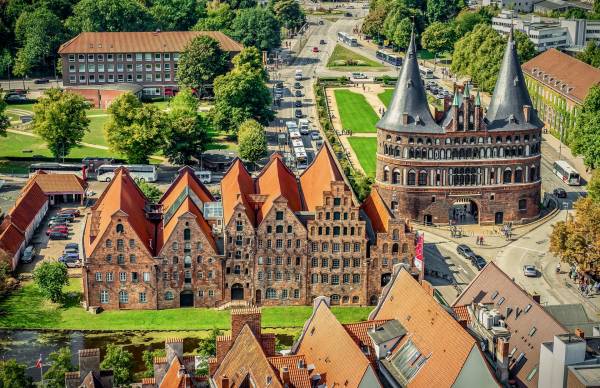
Holsten Gate, Lubeck, scholty1970 @ Pixabay
Here are the top 10 things to see and do in Lübeck:
1. Holstentor: This iconic brick gate, dating back to the 15th century, is one of Lübeck’s most recognizable landmarks. Admire its impressive Gothic architecture and learn about its historical significance as a symbol of the city’s medieval power and wealth.
2. Lübeck Old Town: Take a leisurely stroll through Lübeck’s charming Old Town, a UNESCO World Heritage site renowned for its well-preserved medieval architecture. Wander along narrow cobblestone streets and tenement alleyways. Marvel at centuries-old merchant houses and explore quaint courtyards in the city once known as the Queen of the Hanseatic League.
3. St. Mary’s Church: Visit this imposing Gothic church, one of the largest in Germany. Marvel at its soaring spires and intricate stone carvings. Climb to the top of the tower for panoramic views of the city and the surrounding countryside.
4. Hanseatic Museum: Learn about Lübeck’s history as a powerful member of the Hanseatic League at this fascinating museum housed in a restored merchant’s house. Explore exhibits showcasing the city’s maritime trade, craftsmanship and cultural heritage.
5. Buddenbrookhaus: Literature enthusiasts won’t want to miss a visit to the Buddenbrookhaus, a museum dedicated to the works of Thomas Mann and his family. Explore the author’s former home and learn about his life and literary achievements.
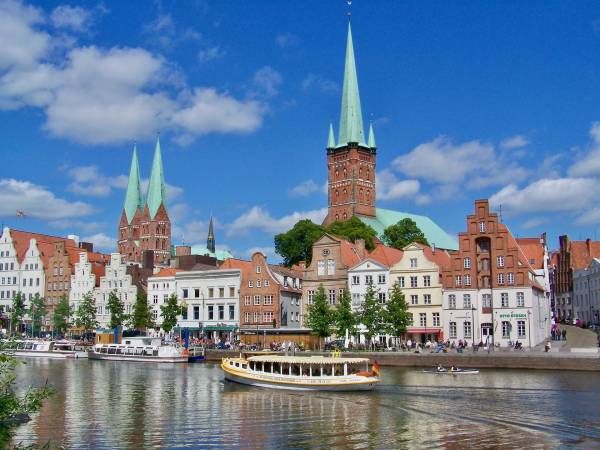
Old Town Lubeck, mareneinfeldt @ Pixabay
6. Lübeck Town Hall: Admire the grandeur of Lübeck’s Town Hall, an impressive Renaissance building located in the heart of the Old Town. Take a guided tour to explore its ornate halls, historic chambers and art collections.
7. Niederegger Marzipan Museum: Indulge your sweet tooth at this famous marzipan shop and café. Sample a variety of delicious marzipan treats. Don’t miss the chance to see marzipan sculptures and learn about the confection’s history. No entry fee.
8. Lübeck Cathedral: Discover the beauty of Lübeck Cathedral, also known as the Dom zu Lübeck, with its striking twin towers and ornate interior. Marvel at its medieval artwork, including the famous astronomical clock.
9. Trave River Cruise: Experience Lübeck from a different perspective with a leisurely cruise along the Trave River. Admire panoramic views of the Old Town landmarks while learning about its history and architecture. You will find many boat tour companies to choose from.
10. Lübeck Christmas Market: Explore Lübeck’s enchanting Christmas market, one of the oldest and most festive in Germany. Enjoy traditional treats, browse handmade crafts and soak up the festive atmosphere in the Old Town square.
From historic landmarks to cultural attractions and culinary delights, Lübeck offers a wealth of experiences for visitors to enjoy and explore.
More Things to See and Do in Lübeck
In the Old Town: Salzspeicher, St. Peter’s Church Tower by elevator, Rathaustreppe Staircase behind City Hall, Hospital of the Holy Spirit, Castle Monastery (Burgtor), St Jacobs Church, Half Tower, narrow tenement alleyways such as Füchtingshof, Thorweg and Rosen Hof.
Restaurant Schiffergesellschaft: unique maritime decor
Try: Marzipan produced by the Niederegger family business at the Café Niederegger on Breite Straße. You can also buy marzipan from Carstens, Marzipan-Speicher, Mest and Marzipanland. Lubeck is often called the Marzipan Capital of the World.
Near to Lübeck: Travemünde Beach
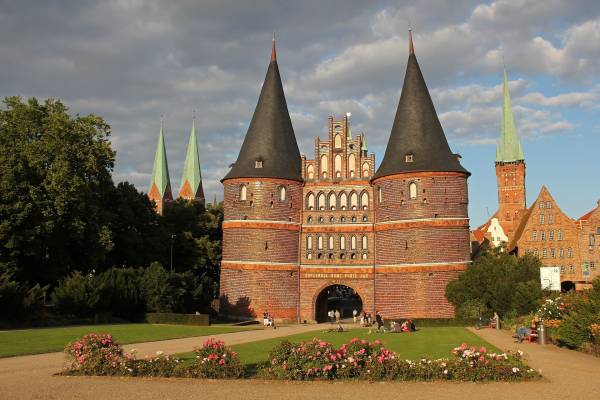
Holstentor, 14578371 @ Pixabay
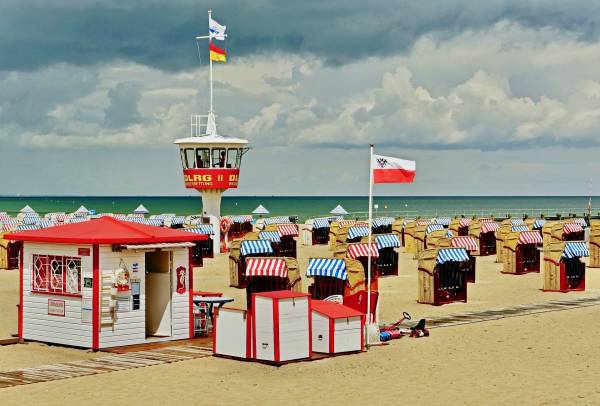
Travemunde Beach, hpgruesen @ Pixabay
Visit Lübeck, Germany
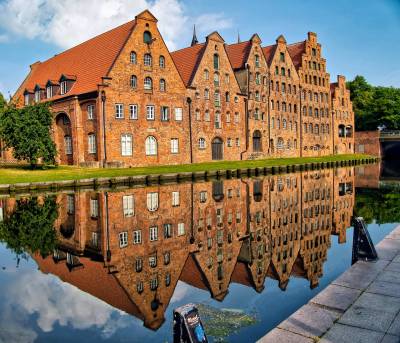
Salzspeicher, Lubeck, Achim_51 @ Pixabay
Lübeck, nestled along the shores of the Trave River in northern Germany, is a city that exudes a timeless charm rooted in its rich history and cultural significance. As one of the most prominent members of the Hanseatic League during the Middle Ages, Lübeck flourished as a major trading hub. The city created a legacy of architectural splendor and maritime heritage. Its well-preserved Old Town, a UNESCO World Heritage site, is a testament to this golden era. Wander its labyrinthine streets. Visit Gothic churches, and centuries-old merchant houses adorned with intricate facades. Visitors are transported back in time through the cobblestone alleys of a bygone era while discovering hidden courtyards, historic squares and bustling marketplaces.
Beyond its medieval allure, Lübeck offers a vibrant cultural scene that continues to thrive in the modern day. The city’s museums, galleries, and theaters showcase a diverse range of artistic and cultural expressions. Enjoy classical music concerts, contemporary art exhibitions and world famous marzipan treats. With its blend of history, culture, and picturesque landscapes, Lübeck invites visitors to embark on a journey of exploration and discovery in one of Germany’s most enchanting cities.
Best Time to Visit Lübeck
The summer months of June, July and August are the best time to visit Lübeck. Winter is a good time to avoid the busy summer tourist season. Lübeck has a popular Christmas Market.
Getting to Lübeck Old Town
Train: The main train station for Lübeck is located right beside the Old Town. You can reach Lübeck from Hamburg in about 45 minutes by rail.
Cruise Ship or Ferry: Cruise Ships and Ferries dock at the Baltic port of Travemünde. Take the RE8 train to the Lübeck Main Station in about 25 minutes. Alternately, Bus #30 or #31 will take about an hour. Cruise ship passengers can also reach Lübeck from the Baltic port of Kiel by rail in just over an hour, if you pick the faster regional trains.
Air: The closest major airport to Lübeck is Hamburg. Low rates from regional airlines such as EasyJet make it easy to reach Hamburg inexpensively.
Lübeck Public Transit
You won’t really need local public transit to visit Lübeck, but the DB Navigator App is always handy when you are travelling in Germany. You will find tourist information centers at the main train station and at the base of the Holstentor as you enter the Old Town.
Currency, Electrical Adapters, Visa Requirements
Visit our Germany web page for information about Currency, Electrical Adapters and Visa Requirements
Related Blogs
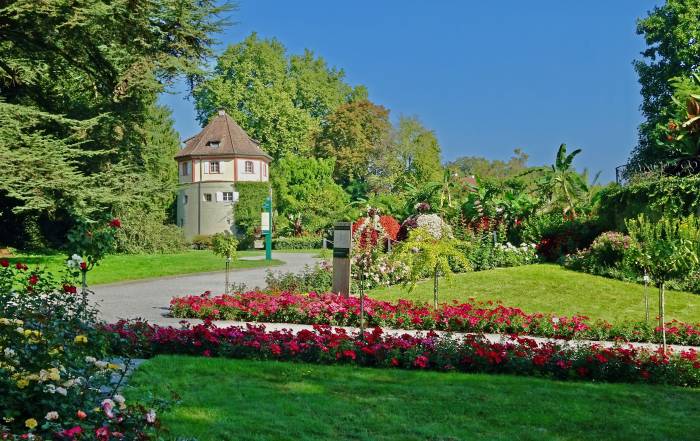
Three Nights in Konstanz
September 30th, 2023 | 1 Comment
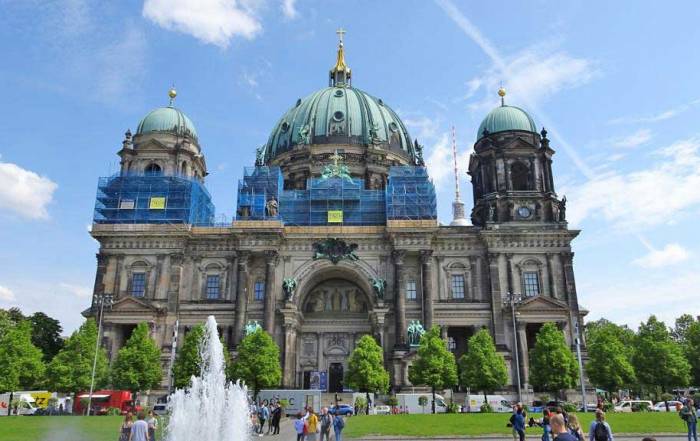
Touring Berlin
May 21st, 2019 | 0 Comments
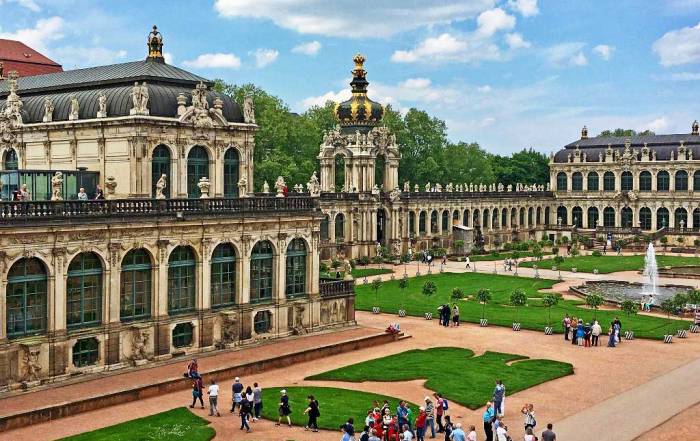
Touring Dresden
May 19th, 2019 | 0 Comments
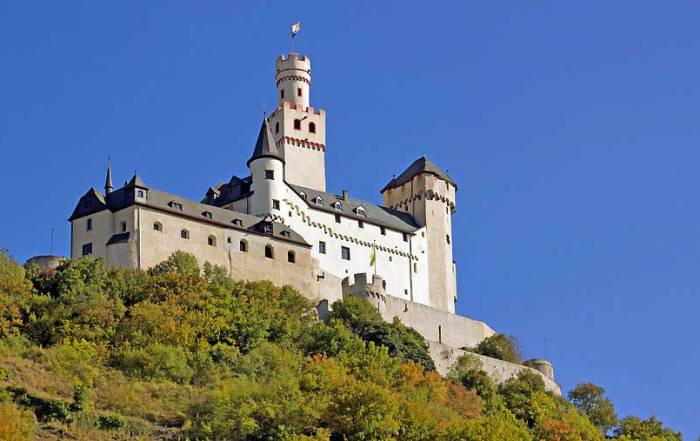
Romantic Rhine
June 27th, 2015 | 0 Comments
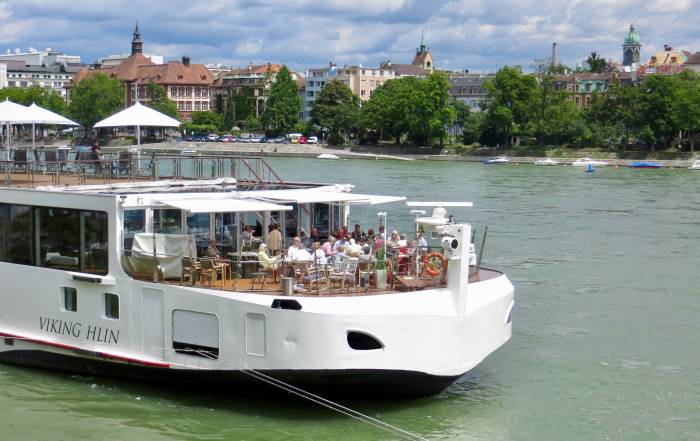
Rhine River Cruise
June 23rd, 2015 | 0 Comments
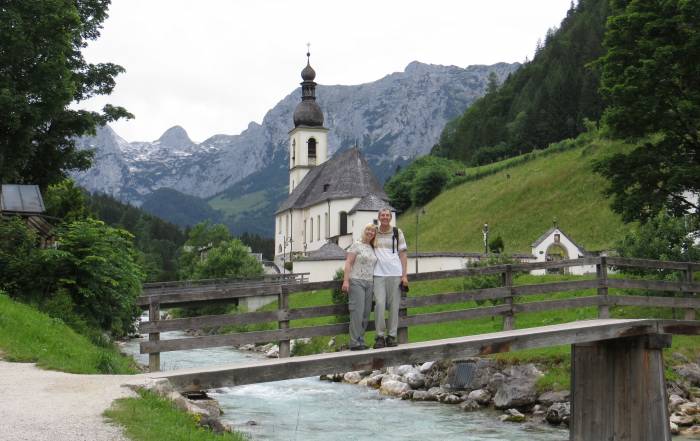
Berchtesgaden Visit
June 13th, 2015 | 0 Comments
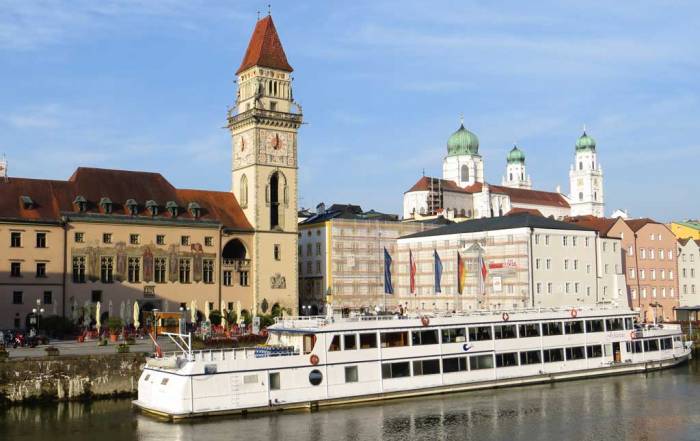
Danube River Cruise
June 8th, 2015 | 0 Comments
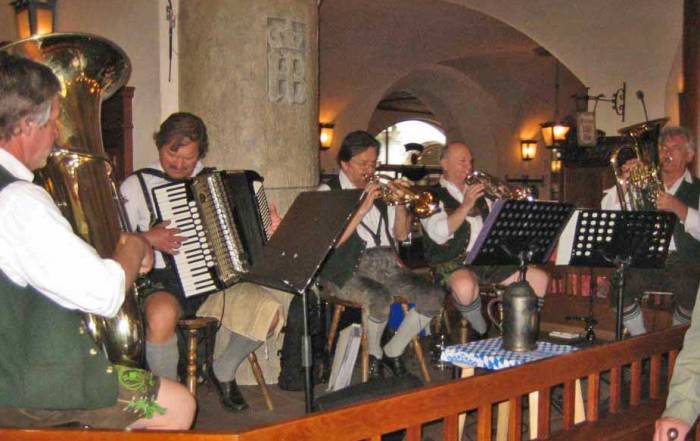
Munich Layover
May 25th, 2010 | 0 Comments
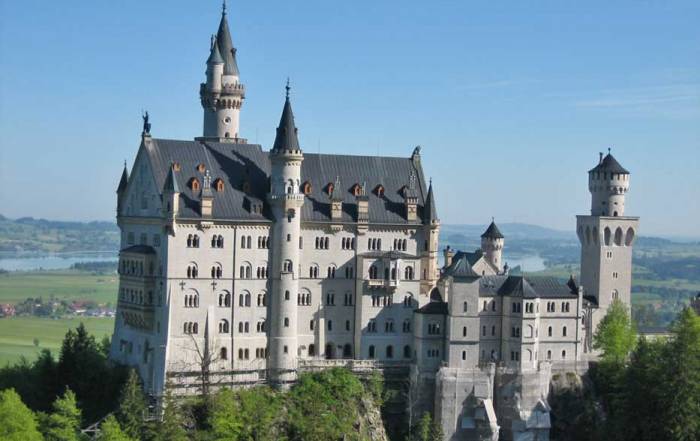
Neuschwanstein Castle Visit
May 24th, 2010 | 0 Comments
Share This Amazing Location!
Leave a comment cancel reply.
- Top 10 Things To Do...
Top 10 Things to Do and See in Lübeck

Even though Lübeck’s old town is on the list of UNESCO World Heritage Sites, this city in Germany ’s north is often overlooked – yet a trip here means no end of delights, including gabled townhouses, picturesque courtyards and medieval churches. Here’s a list of the top 10 things to do and see when you’re in town.

European Hansemuseum
St mary’s church.

Buddenbrookhaus
Viermastbark passat.

Become a Culture Tripper!
Sign up to our newsletter to save up to $1,200 on our unique trips..
See privacy policy .
Heiligen-Geist Hospital
The historic landmark is one of the world’s oldest social institutions. Inspired by the Santo Spirito in Sassia in Rome, the hospital opened its doors in 1286. It was later repurposed as a retirement home and used as such until the 1960s. The red-brick facade is quite an eyecatcher, but it’s worth stepping inside the historical building and tour the vaulted halls. The building is open year-round and occasionally hosts arts and craft fairs and an annual Christmas market in December.
Koberg 11, Lübeck, Germany , +49 4517 9956 10
Café Niederegger
Günter grass-haus, st petri church.

Timmendorf beach
A 30-minute drive brings you to this beautiful Baltic Sea beach . Whether you want to amble along the pedestrianised seaside promenade, go for a swim or watch the waves over dinner from one of the restaurants, it’s good to get out of the city and catch a breath of fresh air. On the weekends, events ranging from volleyball tournaments and yoga classes to open-air concerts and light shows are scheduled for throughout the year.
Lübeck Bay, Germany

The Best Museums to Visit in Lübeck, Germany

The 10 Best Brunches In Lübeck

How to Spend the Perfect Day in Lübeck
Culture Trip Summer Sale
Save up to $1,200 on our unique small-group trips! Limited spots.

- Post ID: 1732530
- Sponsored? No
- View Payload

IMAGES
VIDEO
COMMENTS
Welcome to Lübeck. Joyful, lively, serene - that's Lübeck's heartbeat, which pulsates through the winding streets of the Old Town island and fills the impressive brick architecture with life. Our Nordic beauty, with all the charm of the original port city, welcomes you openly with its motto "Concordia domi foris pax" - harmony inside, peace ...
Let's explore the best things to do in Lübeck: 1. Altstadt. Source: Shutterstock. Altstadt. Germany's largest historic centre is 100 hectares of historic streets under the watch of those seven spires. A classic Lübeck street scene has would be rows of Renaissance gabled houses broken by passageways.
The iconic Holstentor stands proudly as a testament to the historical importance and wealth of Lübeck. Why visit Lübeck. As the second-largest city on the German Baltic coast, Lübeck is a thriving, vibrant place full of great things to do.. With a little more than 200,000 inhabitants, it's big enough to offer all of the amenities and cultural offers you could need from a city while still ...
Lübeck: a northern city of beauty and intellect. Lübeck, the Queen of all the Hanseatic cities, was founded in 1143 as 'the first western city on the Baltic coast'. A Medieval ambiance and historical and cultural attractions still dominate the wonderful cityscape today and hark back to the city's glorious past as a Free and Hanseatic city.
Lübeck. Germany, Europe. A 12th-century gem boasting more than a thousand historic buildings, Lübeck's picture-book appearance is an enduring reminder of its role as one of the founding cities of the mighty Hanseatic League and its moniker 'Queen of the Hanse'. Behind its landmark Holstentor, you'll find streets lined with medieval ...
Have the ultimate Lubeck trip with this guide of all the best things to do in Lubeck Germany so you can see all the top Lubeck attractions easily. ... Sharon first fell in love with Germany back in 2000 on her first visit. She loves the long history, the picturesque Old Towns, the castles, the food, everything really! Since then, she has ...
6. European Hansemuseum. The European Hansemuseum is one of the main points of interest in Lübeck and a must-visit place while sightseeing in the city. Opened in 2015, it is the largest museum in the world dedicated to the Hanseatic League and it is simply amazing!
Things to Do in Lubeck, Germany: See Tripadvisor's 47,517 traveler reviews and photos of Lubeck tourist attractions. Find what to do today, this weekend, or in September. We have reviews of the best places to see in Lubeck. Visit top-rated & must-see attractions.
Visit Marienkirche. Two of St. Mary's massive bells where they crashed down in 1942. The Gothic-style St. Mary's Church (Marienkirche) took 100 years to build, beginning in 1250, and is the third largest church in Germany. Its interior is filled with ornate carvings and artworks and is home to the world's largest organ.
Directly behind the banks of the river Trave rise the seven spires of the five Old Town churches that have made Lübeck's silhouette famous. The impressive Holsten Gate, landmark of the "Queen of the Hanseatic League", welcomes visitors with its late Gothic facade. The island-shaped Old Town with its unique brick architecture and the hidden oases presents itself with Nordic calmness.
19,028. Lubeck, Germany. With its Gothic castle, ornate Renaissance buildings, and rows of gabled houses, strolling around Lubeck's UNESCO-listed old town feels like stepping into a fairy tale. Architectural gems, winding passageways, and café-lined courtyards each reveal a new surprise about this charming city. Read more.
It isn't quite as fancy as Prague's astronomical clock, but it's worth viewing. 8. Meet the little Lübeck devil just outside St Mary's Church. Legend has it that, in the 13th century when they were building St Mary's, the devil popped into the building site to see what was happening.
Do try their most famous treat, the nut cake. It is also the perfect place to pick up authentic foodie souvenirs for loved ones back home. The main café is right in the city center, while there are also several branches in the city. Café Niederegger - Breite Straße 89, Lübeck, Germany, +49 4515 3011 27.
Lübeck Germany - Photo Credit: Leonie Krickhuhn How to spend 1 day in Lübeck Germany. In this 1-day itinerary in Lübeck, discover the main attractions of the city.. Day 1 in Lübeck. Start the day by visiting Holstentor, one of the city's main attractions and symbol.It is a medieval gateway and today houses a museum dedicated to the city's history.
Tourist Information Lübeck. Lübeck. Welcome to your holiday! Your getaway begins with us in Lübeck. We are happy to assist you before, during and after your relaxing stay. Our Tourist Information is located at the Holsten Gate and is the ideal starting point for your discovery tour through Lübeck. This is why most guided city tours start here.
A comprehensive guide to Lubeck, Germany's most ravishing city and the Queen of the Hanse League between the Baltic and the Northern Sea. ... but also an exquisite restaurant. No visit to Lubeck is complete without a meal at one of the old dark wooden tables. Restaurant Schiffergesellschaft Breite Straße 2 23552 Lubeck Phone: + 49 - 451 ...
Lubeck has its main train station, Lubeck Hauptbahnhof, which is well-connected to other German cities such as Hamburg, Kiel, and Berlin. Intercity-Express and regional trains frequently operate in and out of Lubeck Hauptbahnhof, providing a comfortable travel experience. If you prefer driving, Lubeck can be reached via the A1 and A20 motorways.
Lübeck: Planning Your Trip. For a healthy dose of medieval history, architecture, UNESCO World Heritage Sites, historic ships, Christmas markets, marzipan, and epic hikes on your next European vacation, head to Lübeck, Germany. Located in Northern Germany about an hour from Hamburg, the city has come a long way from its early beginnings as a ...
NORDIC BEAUTY WITH STYLE. Lübeck's Old Town is completely surrounded by water and has all the maritime charm to go with it. The impressive brick architecture of the merchants' houses and churches is still the hallmark of this Hanseatic town, which was founded in 1143 as the first port on the Baltic Sea and has been a UNESCO World Heritage ...
Best Time to Visit Lübeck. The summer months of June, July and August are the best time to visit Lübeck. Winter is a good time to avoid the busy summer tourist season. Lübeck has a popular Christmas Market. Getting to Lübeck Old Town. Train: The main train station for Lübeck is located right beside the Old Town. You can reach Lübeck from ...
Thomas Mann, one of Germany's great novelists, was born in Lübeck in 1875 to a bourgeois family. His first novel, The Buddenbrocks, chronicling the decline of a wealthy Lübeck merchant family, was a huge literary success. Mann went on to win the Nobel Prize for Literature in 1929, and his family home was converted into the Buddenbrock museum.
By OlegMal. 19,028. Explore Lubeck. With its Gothic castle, ornate Renaissance buildings, and rows of gabled houses, strolling around Lubeck's UNESCO-listed old town feels like stepping into a fairy tale. Architectural gems, winding passageways, and café-lined courtyards each reveal a new surprise about this charming city.
Lübeck Altstadt, or Lübeck old town, is the oldest part of the city, and the UNESCO world heritage site. The old town is definitely one of the best places to visit in Lübeck, and most of the historical and cultural things to do exist here. Holstentor Gate. Burgtor. Die Salzspeicher.